‘Being a female shouldn’t limit your dreams’
GSA student makes Mon Repos her ‘home away from home’


Britney Sarius is a second-year student who is studying for her Diploma in Agriculture at the Guyana School of Agriculture (GSA). She is a resident student from the village of Orealla, in Region Six (East Berbice-Corentyne), an indigenous community on the Corentyne River. Britney fell in love with griculture after being exposed to it in secondary school (Delano Williams photo)
Sunday, February 12, 2023
I CHRONICLE PEPPERPOT ― Sunday, February 12, 2023
‘Fulfilling the Vision‘
Sugar plantation worker-turned-church- leader chronicles his life in new book

FORCED to leave school at the tender age of 13 to work on the sugar plantation at Farm, East Bank Demerara, Joseph Murugan withstood several challenges, physically, mentally, emotionally and spiritually, to emerge as a leader of his community.
From serving as an ordained Elder and National District Superintendent of the Church of the Nazarene in Guyana, Murugan eventually became the religious institution’s Regional Project Coordinator of the English-speaking Caribbean.

Now in his twilight years at the ripe old age of 90, the now Dr. Murugan has chron-
icled his life in his recent biography titled, ‘Fulfilling the Vision’. He has dedicated the publication to his wife of 63 years, Alice, who went to her “Heavenly Home” on February 20, 2021, his children and their spouses, grandchildren and one great-grandchild.
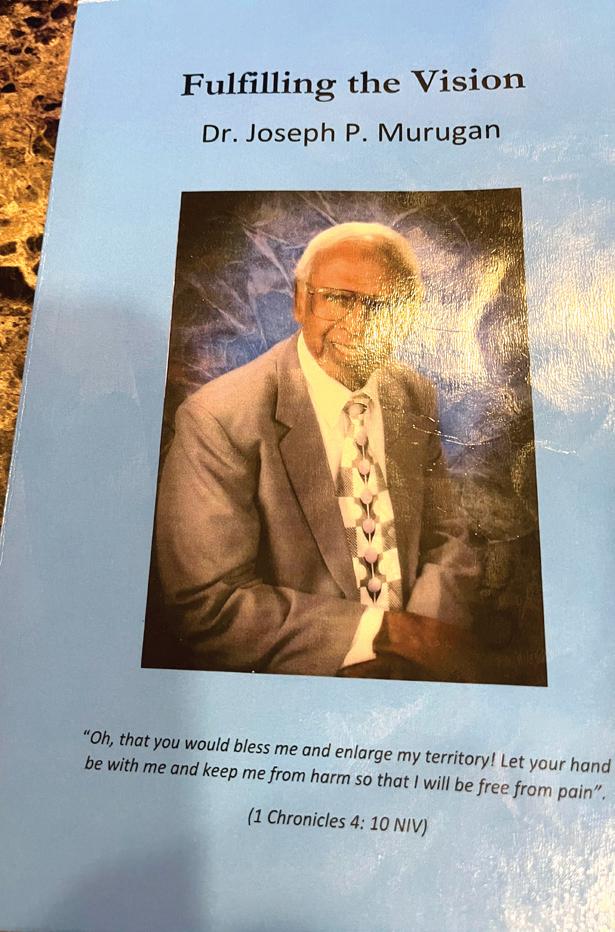

Murugan has served the Nazarene Church in many roles, notably as pastor of the Grove and Piarco Churches of the Nazarene in Guyana and Trinidad & Tobago, respectively.
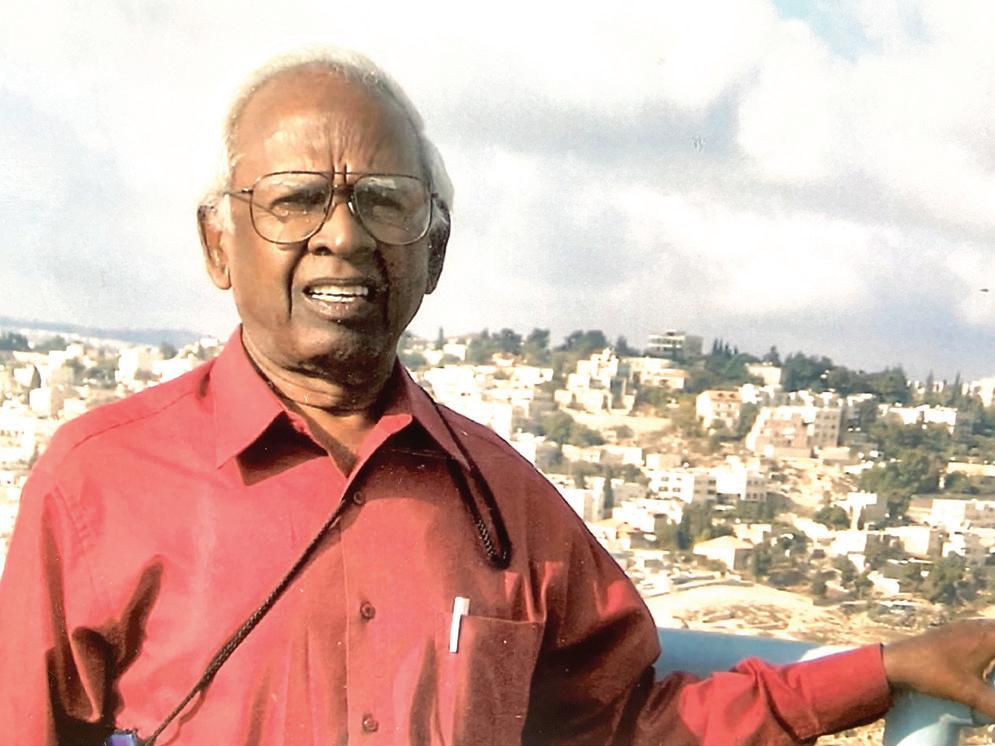
According to Dr. Murugan, his story began with a vision that was revealed at an open-air service. This life-altering meeting was held near a school at Herstelling, East
Bank Demerara. “I recalled that a well-dressed 17-yearold teen, Roy Kanhai, who was a schoolteacher at the Providence Primary School
where I was a student, presented the good news of salvation that is found only in Christ Jesus,” he explained.
“When the gospel invitation was given to accept or trust Christ as Saviour and Lord, as a 12-year-old lad, I went forward for prayer. The young preacher laid his two hands on me as I was on my knees, and a profound spiritual desire was birthed in my heart to become an instrument of God like that young preacher.”
Murugan was born and raised at Herstelling, after
his father had served his five-year indentureship since arriving in the then British Guiana from India, and opted to stay instead of returning to his homeland at his own expense.

“Some of my first days at kindergarten were filled with anxiety, fear and continual crying, which resulted in the teacher putting me to sit with my older brother, Alfred, who was the one responsible for taking me to school,” the religious leader said. “There was a deep desire to learn, and to attend school punctually and regularly, but I faced several obstacles, having to assist in taking care of the cows, sheep, chickens and ducks, in addition to watering plants in the kitchen garden. Attending school regularly was interrupted sometimes, because my help was desperately needed at the provision farm at Friendship.”
“My dad simply informed me that I won’t be going back to school. Such bad news saddened my heart as a 13-year-old lad, as I leaned against the wall of the house and shed bitter tears. But what brought a sigh of relief and comfort to me was the memory of my
II CHRONICLE PEPPERPOT Sunday, February 12, 2023 SEE PAGE XIV
Dr Murguan, during a visit to the Holy Land in 2003
Dr Murugan, with his late wife Alice and three children.
The front cover of Dr Murugan’s biography
Meet Errica Canaterbury
Aiming for a ‘Master’s’ in Occupational Therapy, specialising in Mental Health
WHILE it’s not typical for a doctor to refer someone with a mental health case to an Occupational Therapist (OT), Errica Canterbury, who works in the Rehabilitation and Disability Services Division of the Ministry of Health, believes that there’s a direct link between such therapy and mental health and hence has been using every opportunity she gets to help patients with both the physical and mental health aspects of their condition.
The passionate 26-yearold Occupational Therapist
OTs specialising in mental health is common regionally and internationally, just not something present yet in Guyana. “I am personally fighting hard for it. My hope is to do a ‘Master’s’ to further myself professionally so that I can continue to share my knowledge and host workshops so that it can become something normalised here,” Errica shared in an interview with Pepperpot Magazine recently.
In her bid to use OT to aid mental health, Errica started the process by getting herself a Diploma in General Psy-
‘Master’s’ in Mental Health along with a Bachelor’s Degree in OT.
Money, though, is the
without hesitation going to put my best foot forward and push towards mak-
(OT) is one of just six in the country based at the West Demerara Regional Hospital. Although none of them specialises in mental health,


Errica hopes to further her studies in the field, even if it means that she will be the only one to offer such a service in the country for a time.
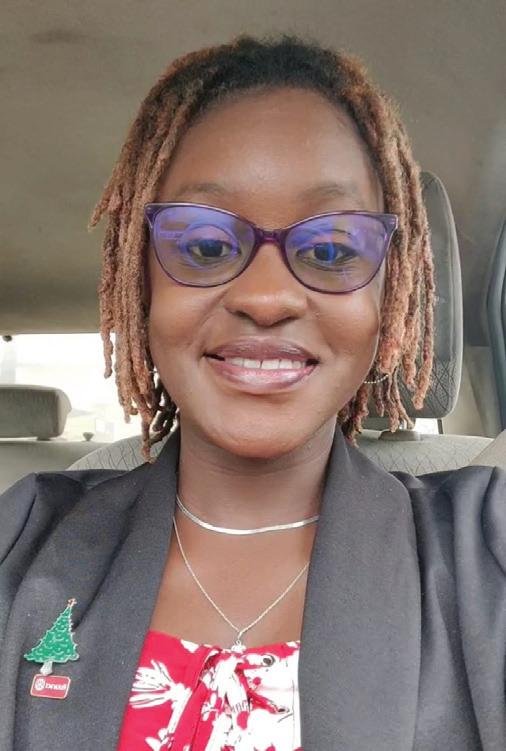

chology from the University of Guyana (UG), but she’d further need to get a ‘Master’s’ in OT (specialising in mental health) or perhaps a
problem. “The only thing I don’t have to do my Master’s right now is money. I have everything else - the drive, the interest, the passion; I just don’t have the money, because it’s not cheap.”
She has already looked into the possibility of being awarded a scholarship; otherwise, she has no idea how
ing it a reality.”
Just recently, Errica and the rest of OTs chipped in to make a nurses workshop related to mental health possible at the National Psychiatric Hospital in Berbice which would have benefitted approximately 20 nurses there.
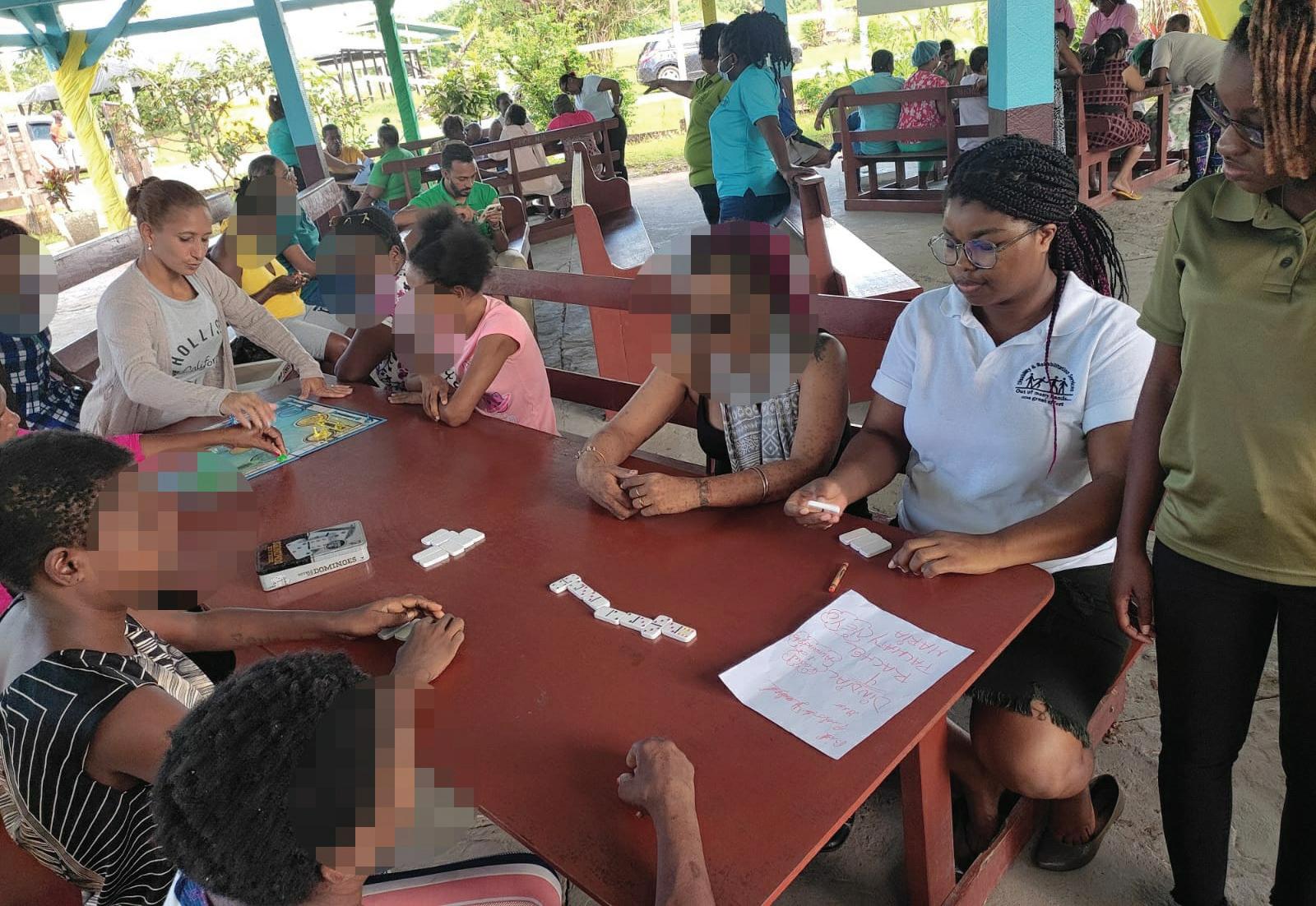
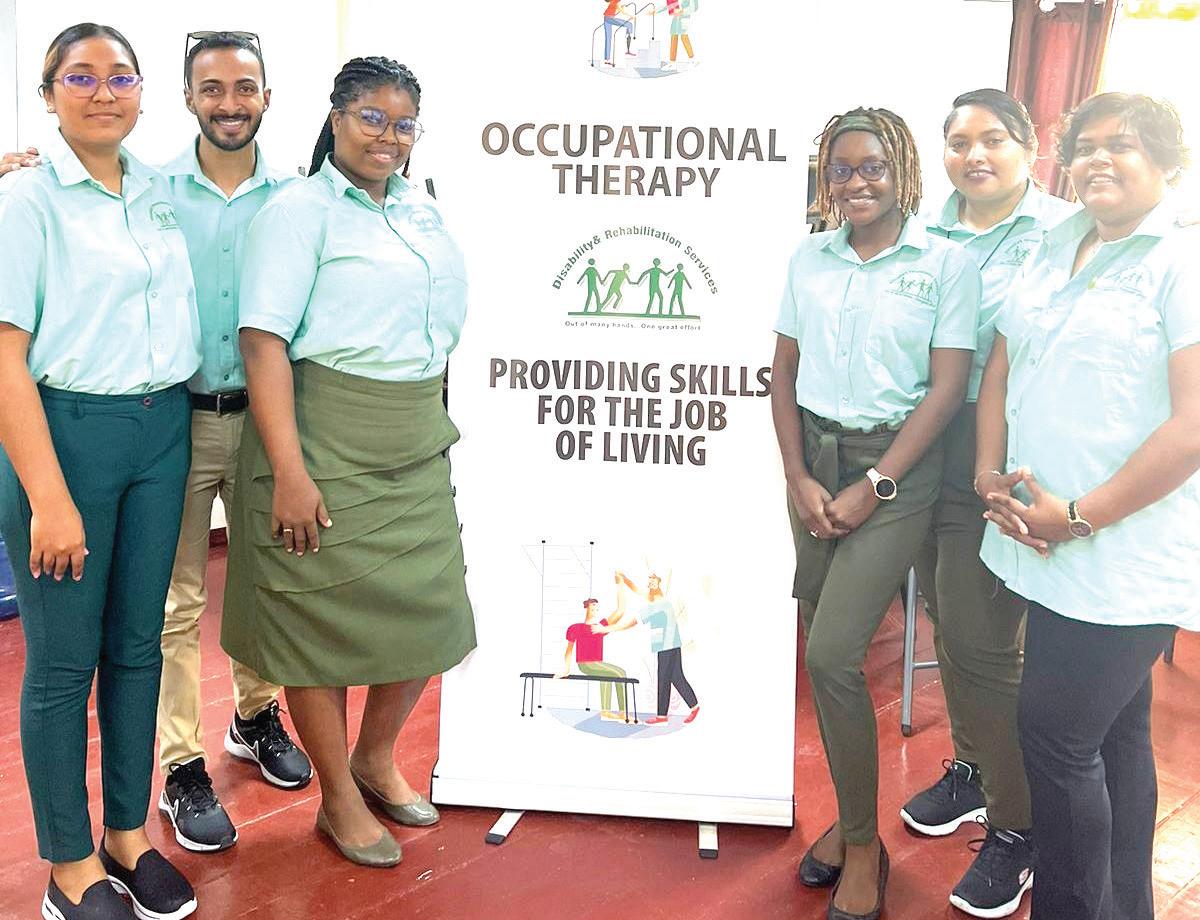
The training was done at the psychiatric hospital,
Because there was initially no OT at the Berbice hospital, the team of OTs decided to host the workshop. This is in addition to Errica’s personal interest in mental health. “I personally have a huge interest in mental health and Ms Barbara Lawrence was helpful in facilitating me in growing this aspect of my
at this point she’d be able to do the studies. Hoping and waiting to see how things work out is all she can do at the moment.
Because she knows the value of pursuing such a course, she is optimistic and plans to do the best she could to achieve her goal. “It’s something I am very passionate about and I intend to put my best foot forward in making it happen,” she expressed, adding, “It’s something that we see is helpful and beneficial, so if it means that I have to continuously work at this so that it becomes something normal here, then I am
specifically for mental health cases. “This, I would say, is the first step and it was successful.”
The OTs did a field visit there in early 2022 when they realised that there was a need for an OT to be based at the hospital. Although there is a Cuban OT there at the moment, Errica believes that their inability to speak English fluently hinders their ability to be of optimum service. “I felt that even when there is one one there, it wasn’t someone who could help in the fullest sense and to the best of the patient’s interest.”
career,” she shared.
With each patient she works with, Errica uses the opportunity to do more than just help with their physical rehabilitation. “When the person comes with their physical limitations but exhibits sadness or depression, I get to work on both the physical and mental aspects.”
With the fresh batch of OTs who graduated recently, she is hopeful that at least one of them has an interest in mental health, so that perhaps they can eventually build a team of OTs willing to work in mental health and push this aspect of rehabilitation forward.
III CHRONICLE PEPPERPOT ― Sunday, February 12, 2023
Occupational Therapist Errica Canterbury
Occupational Therapists from left: Afeeza Khan, Calvin Lawrie, Zoe Daniels-Walters, Errica Canterbury, Ashley Singh-Bacchus, and Deoranie Babulall
Day 2- Occupational Therapists (facilitators) and some of the nurses
A scene at the recently concluded workshop in Berbice
Exercise activity group during the workshop
Wado- Ryu comes full circle
By Trina Williams
FROM a little New Amsterdam boy to a well-renowned Martial Arts instructor, Sensei Compton Winston Dunbar has managed to transform the martial arts industry in Guyana.
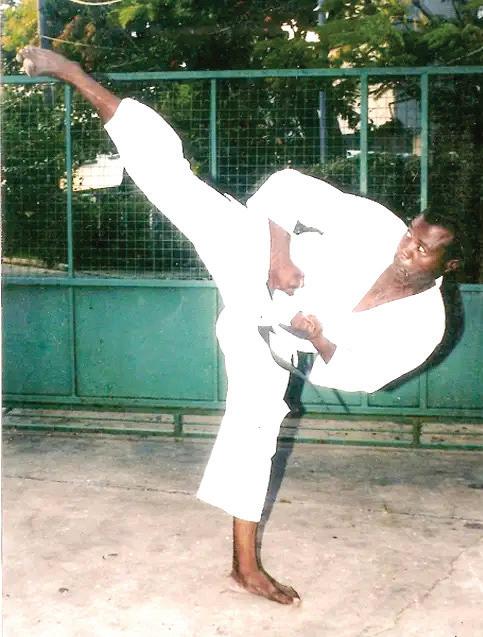
At the tender age of six, Sensei Dunbar and his mother, the late Stella Thomas left their home in New Amsterdam, Berbice, and relocated to Providence, East Bank Demerara.
Despite such a sudden
relocation, he explained thathe felt right at home and quickly adapted to the new surroundings.
Sensei Dunbar told the Pepperpot in an interview that he was first introduced to martial arts when he joined a community centre in his area.
Tackling all sports from cricket to weightlifting, he stated that nothing captured his attention like martial arts, and the hobby slowly manifested into a passion, which he has been pursuing for 57 years.
Under the guidance of
Brown Belt Dennis FordeSingh, a Shotokan karateka, the 76-year-old Dunbar of Wado-Ryu Karate started practising karate in 1967 at Lithographics Karate Club.
Wado Ryu is the karate style that Dunbar practices and teaches.
Wado Ryu is one of the four major karate styles and was founded by Hironori Ōtsuka. The style itself emphasizes joint locks, throws, and tai sabaki in addition to striking. Its roots are in Tomarite karate, but it has also absorbed elements of Shito-Ryu, Shotokan, and Jujutsu.
Dunbar stated that when he first got into Wado Ryu, the karate style was not as popular as it is today.
Sensei Alex Waithe, a First Dan Wado in Ryu Karate, and the then-Green Belt karateka met to start the new Wado Ryu Karate Club.
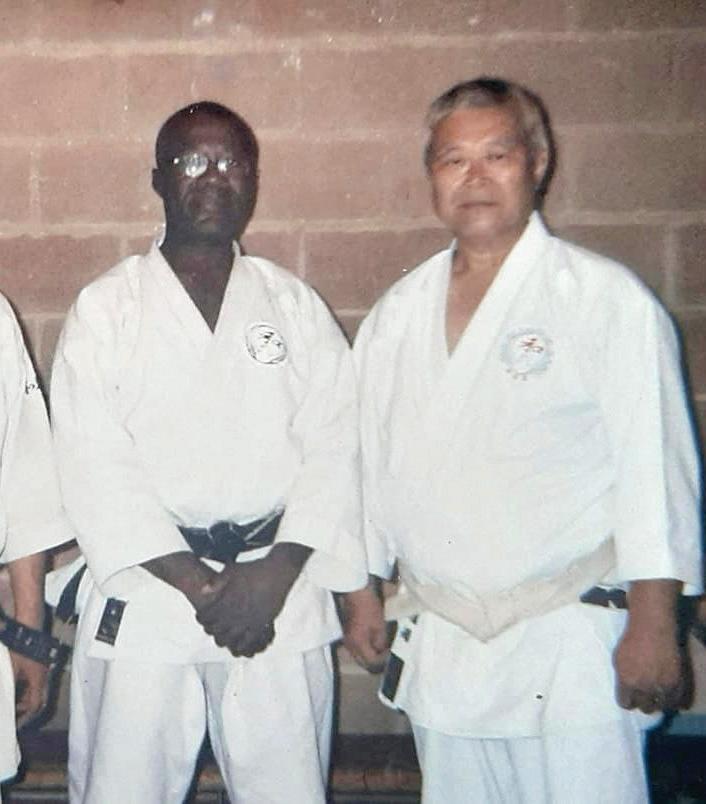
Dunbar was introduced to the Wado Ryu Technique by Sensei Waithe, a graduate of Professor Tatsuo Suzuki Wado Ryu Karate School in London, England, which is widely regarded as the best offensive style in martial arts.
He established his workshops at the Providence Community Centre in 1970 because he was passionate about seeing the discipline advance at the time.
Sensei Dunbar expressed immense appreciation for his inspiration and role model, the late Sensei Tatsuo Suzuki.
His admiration for him
sprouted out of how Sensei Suzuki mastered the craft. According to Dunbar, looks were deceiving when it came to the late Professor Suzuki. Even though Suzuki was of “small stature”, he was an excellent professor and fighter, said Sensei Dunbar.
Discipline is key
Dunbar stated that from day one, his mother supported his dreams.
“My mother doesn’t make a joke. She used to make my cow heel soup and fish broth,” he said as he relished how nurturing his mother was.
Despite the stigma behind martial arts, it is not solely about fighting. Sensei Dunbar debunked these misconceptions and highlighted the meaningfulness of the art.
“Martial arts is much more than fighting. It goes beyond that,” he said.
Highlighting the many ways in which martial arts can better a person, the karate apostle stated that it teaches one discipline and gives self-confidence.
Dunbar participated in the team fighting competition at the 1975 World Karate Championships in Los Angeles, California, where Guyana lost to Canada. Charles Woon-a-Tai, Maureen Da Costa Woon-a-Tai, Keith Da Costa, Leslie Brummell, Steven Embrack, and Frank Woon-a-Tai served as the team’s fighters and coaches. Dunbar served as the team’s captain.
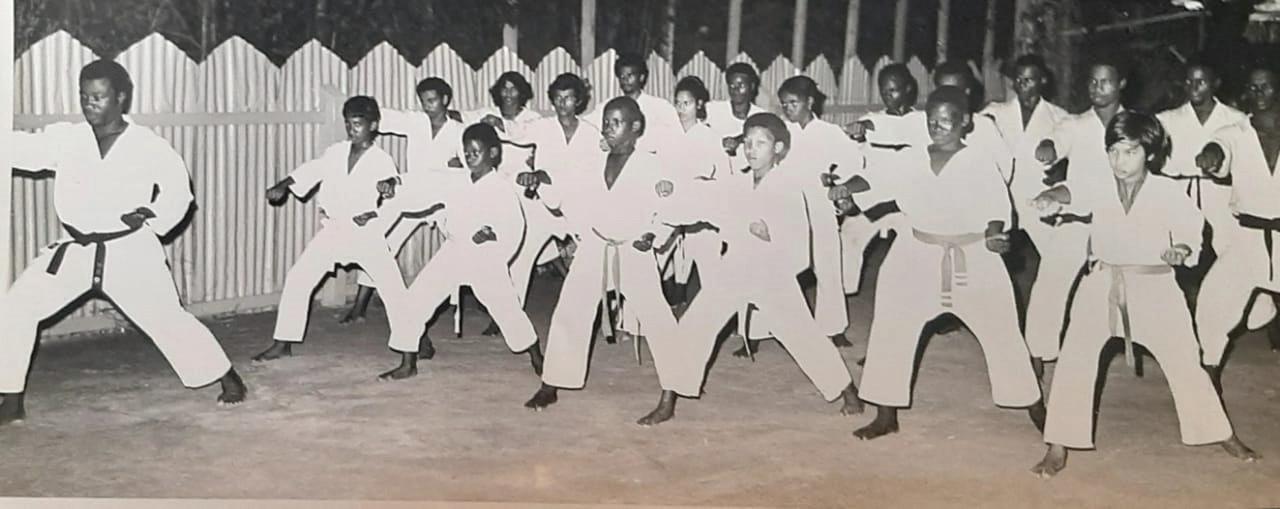
Although the Guyanese
team lost, Sensei Dunbar did not let this trample on his dreams and aspirations.
He stated that the competition was an eye-opener. “When I came back, I started looking at the other fighters, especially the Japanese team. I came back and gavemy students the same teachings and six months later, we came out successful,” he said.
The success of his teachings and accomplishments still prevails almost forty-eight years later.
Sensei Dunbar has become a favouritein the martial arts world in Guyana, more so, last week Sunday. His students hosted a surprise birthday bash to celebrate the karate disciple.
Dunbar has trained people like Eze Wickham, Ken Danns, Adrian Chesney, Angus Jeffrey, Dianne Ferreira-James, Darren Nurse, and Carwyn Holland, among others.
He further expressed to this Publication gratitude to Banks DIH Limited for supporting his work throughout the years.
There is an established dojo at Thirst Park. However, due to the COVID-19 pandemic, it was forced to close its doors. Nevertheless, according to Sensei Dunbar, practice is slated to recommence since the country has returned to some sort of normalcy.
IV CHRONICLE PEPPERPOT Sunday, February 12, 2023
Sensei Winston Dunbar
Winston Dunbar, left, and Sensei Masafumi Shiomitsu
Sensei Dunbar and a group of students
Relishing in the rhythmic beat of the Conga Drums
COLIN Stephenson is very passionate about the conga drums, percussions and music as a whole and has been playing music since he
mother was all classical butspicy, so my musical career started like six years old,” he recalled during his interview with Pepperpot Magazine.
Bongo drums, also called bongos pair of small single-headed Afro-Cuban drums. The two heads, which are respectively about 5 inches (13 cm) and about 7 inches (18 cm) across, are nailed or rod-tensioned to wooden, open-ended “shells” of the same height.
While the conga drum is a tall, narrow, single-headed drum from Cuba. Congas are staved like barrels and are traditionally used in Afro-Cuban genres such as conga and rumba, although they are now very common in some other forms of Latin music.
before he became leader, they were asking me to be leader, and I declined and utilised my skills to become an administrative leader,” Stephenson noted during his interview.
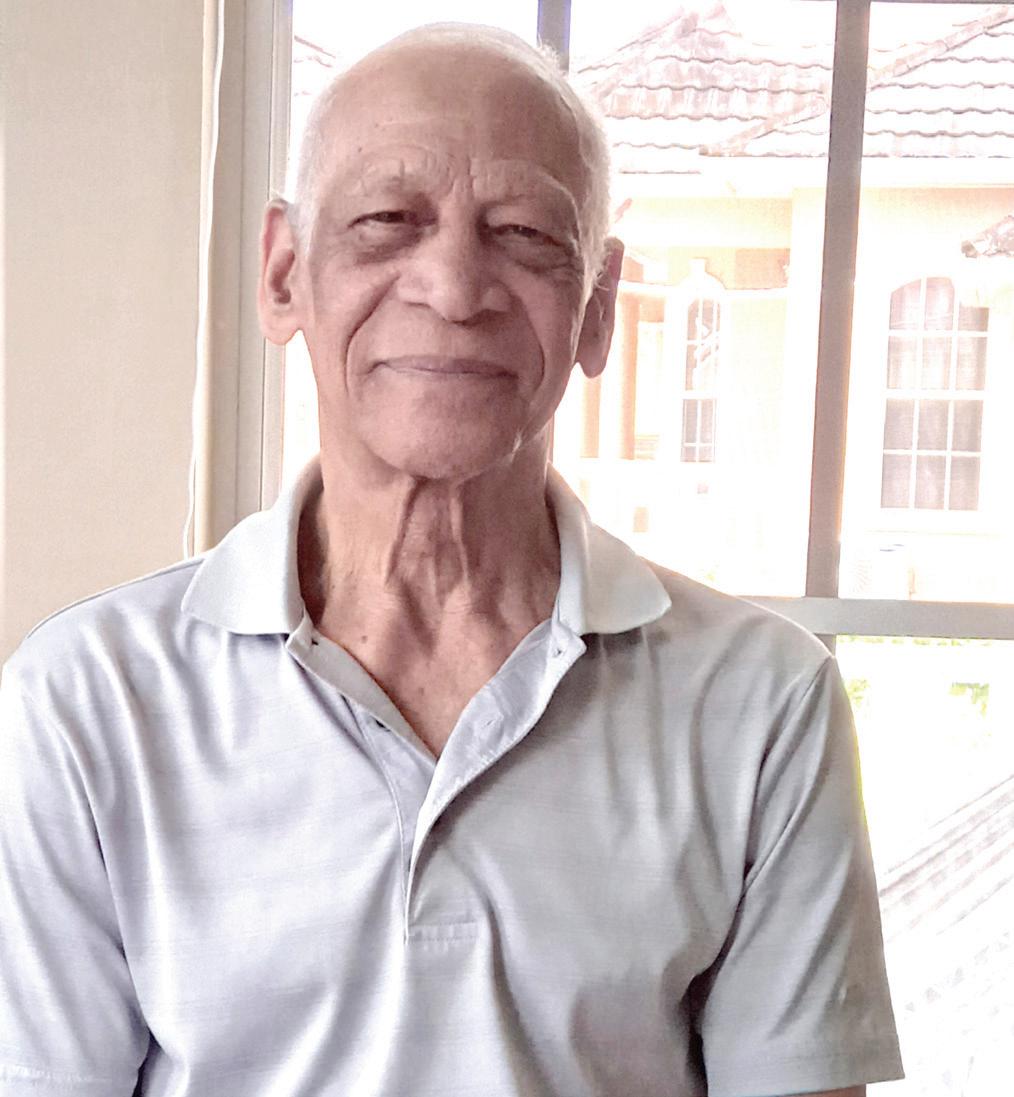

He noted that the band was so disciplined that they were honoured with an award from the President of Guyana at that time.
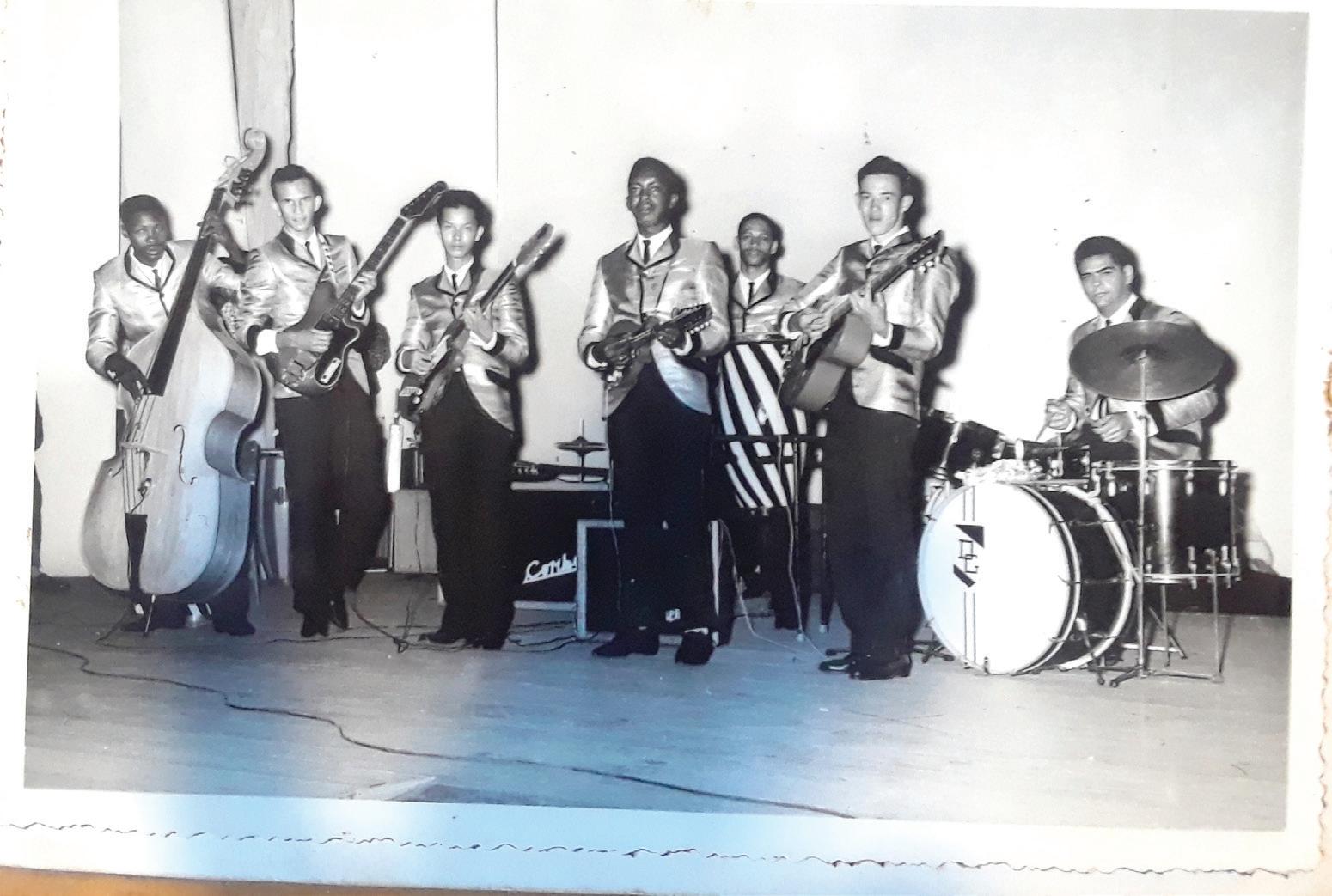
“It, therefore, meant that we gained much exposure on the international scene, where we gladly showed our presence,” he explained.
making “Conga drums”. So I always had a new pair of congas maybe every six months or so. Well I learnt from Bongo Charlie and I would just be playing the normal thing, and I remember that the Mighty Sparrow sent his guy because we played with Byron Lee and the Dragonarieson several occasions,” Stephenson noted during his interview.
explained.
During his time there is really where he gained his experience in the percussion instruments, he recalled. These include timpani, xylophone, cymbals, triangle, snare drum, bass drum, tambourine, maracas, gongs, chimes, celesta, and piano.
was a little child.
The Pepperpot Magazine sat down with Stephensonwho shared about his life and career in the music industry.
As he described it, he started out in the bottom house band with a group of friends who were living in Vreed-en- Hoop.

“When I started, I had no knowledge of percussions or anything, but I had a musicalbackground. My parents were pianists, but in particular, my
He recalled crowds outside his parents’ home as he played music with his mother and the likes of Tucker Whittaker, Dave Martin and a few otherswho were just as musically gifted as he was in displaying their God-given talent.
Stephenson recalled that he was introduced to the art of drummingand he began playing the bongos.
The differences between Bongo and Conga Drums
“There is a guy named ‘Bongo Charlie’, he is a Cuban, and his real name is Charlie Agard. He taught me to play the Bongos, while he played the Congas, but I liked what he was doing,and eventually, I ended up learning to play the congas, and I remember it took me something like six months to perfect what is called the ‘slap shot’, but I was well schooled,” Stephenson explained.
After learning to play the congas, whenever I had to play out on a session, I would normally hire Conga drums, prior to my usage of the Indian Tussa Drums from my Indian friends that I would have used to play in the Combo Seven Band.
The Formation of Conga “Noel Heywood is the founder of the band, but
“They say that I am the only professional Conga Drummer”
“There was this guy called ‘Wobbler’.He came to the band specialised in
According to him, as a percussionist, you must have good timing when playing in a band.
“But when I really perfected my Conga skills, is when I lived in Rio De Genaro Brazil for 16 years,” he
Stephenson says that he enjoys what he does and he is in love with he does and he shared with us that whenever he plays, he loves to dance while playing because he is so in love with his music.
V CHRONICLE PEPPERPOT ― Sunday, February 12, 2023
Percussionist, Colin Stephenson
Colin Stephenson and Combo Seven Band
Mon Repos
A community with all the required amenities
THIS WEEK, Pepperpot Magazine decided to highlight the bustling and diverse village of Mon Repos, on the East Coast of Demerara. The name stems from a French term that translates to “My Place of Rest,” in English.


This welcoming and lovely administrative division is tucked between the equally beautiful and hospitable neighbouring communities of Triumph and Good Hope and is about seven miles outside the city of Georgetown.
A small village that was known for its sugar and rice cultivation in the 1940s, quickly grew in population because of its famous market -- the “Mon Repos market” -- that was held on the weekends (Saturdays and Sundays). According to some of the grassroots residents, “people from all over Guyana came to the Mon Repos market to trade and sell their produce in those days. It was the market that everyone wanted to be a part of, everything was happening here and people even began to take up residence in the area just because of
the market.”
Singh (only name given), an older native of the village, said, “This village is also a fishing and boat-building village. When people want to build a boat or make fishing nets, they come here. The people are talented and know how to work hard for a living.”
The village is also well known for housing one of
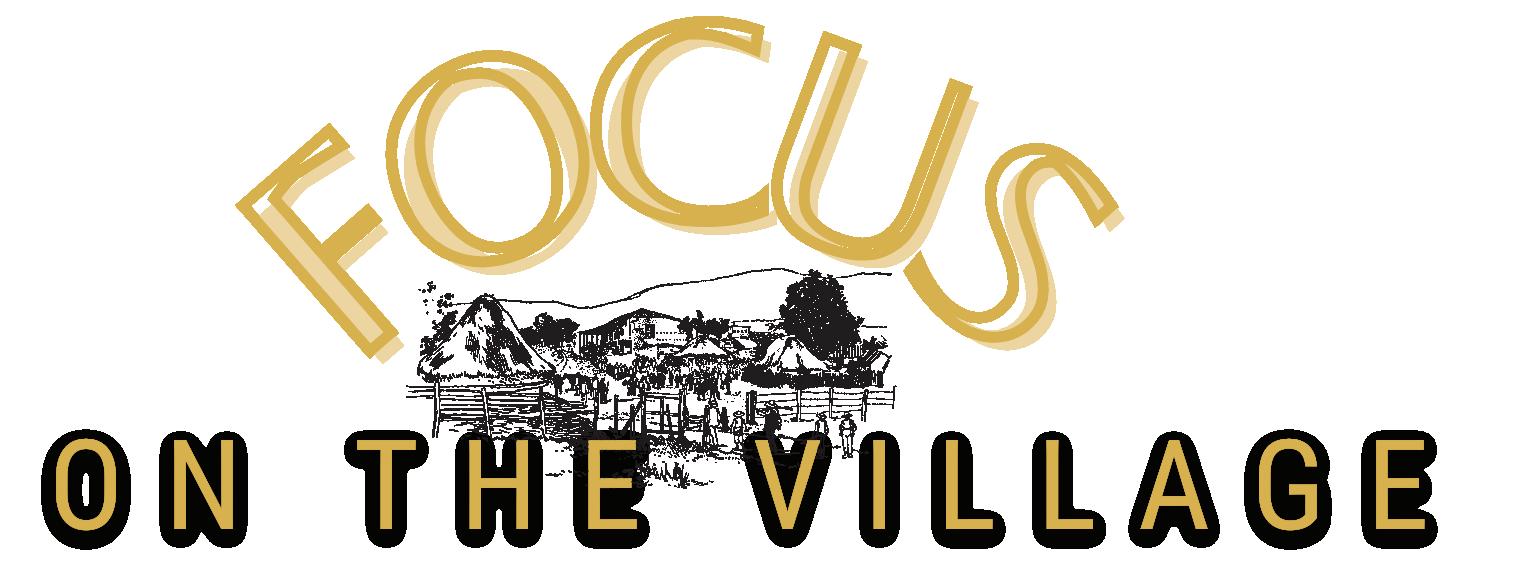
Guyana’s most prestigious educational institutions, the Guyana School of Agriculture (GSA), as well as the country’s most valuable research centre, the National Agricultural Research and Extension Institute (NAREI). These two institutions can be found within close proximity of each other on the prominent “Agriculture Road.”
shops, ice factory, supermarkets, the Caribbean Inn hotel, hardware stores, livestock farms, furniture stores, a temple and restaurants, which include the well-known Sunny and Sweetie local food joint among other businesses.
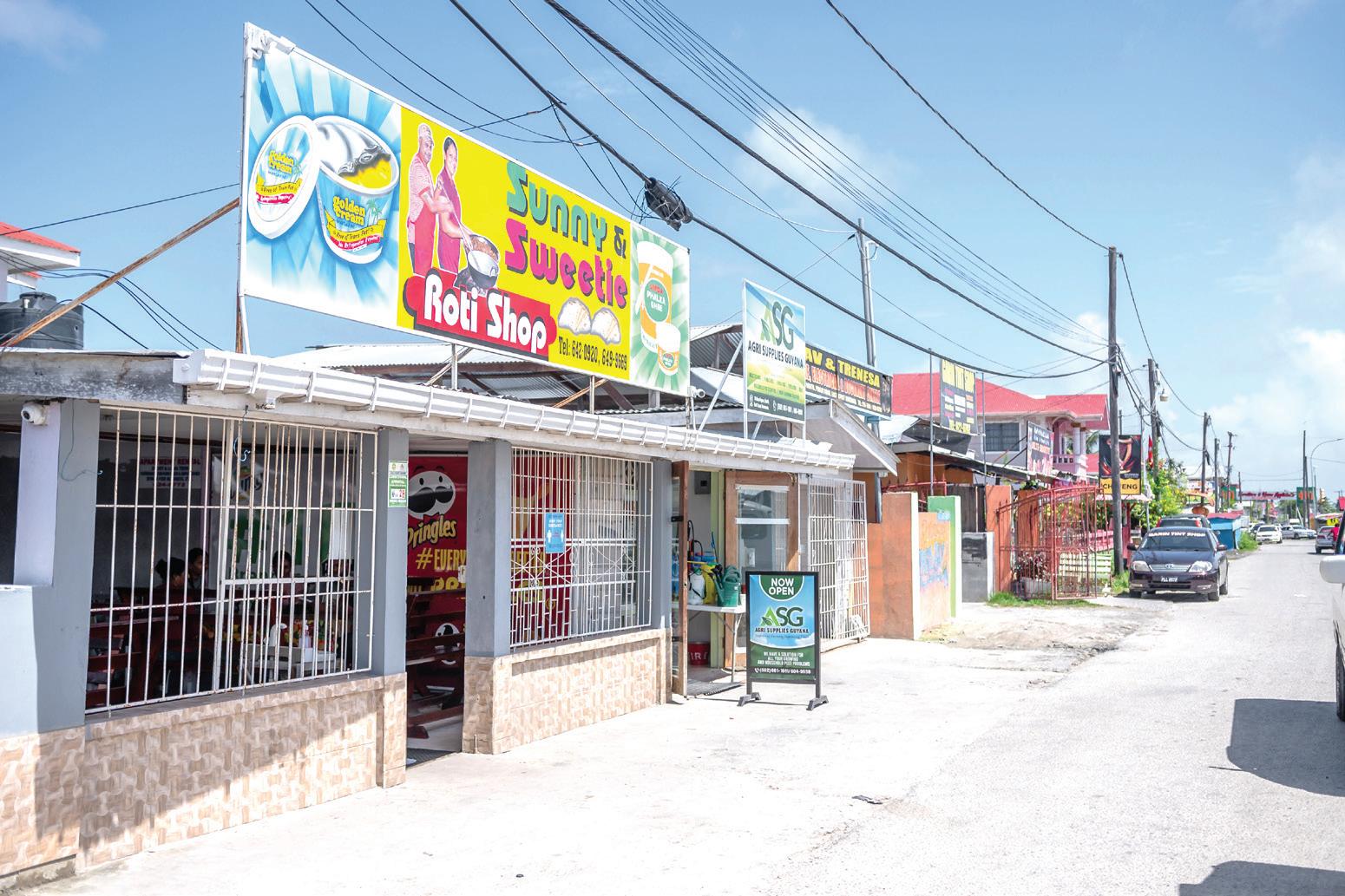
The village is also divided into several sections, including Django Town, Mon Repos Housing Scheme, Martyrs Ville, Block CC, Block 8, and a few others.
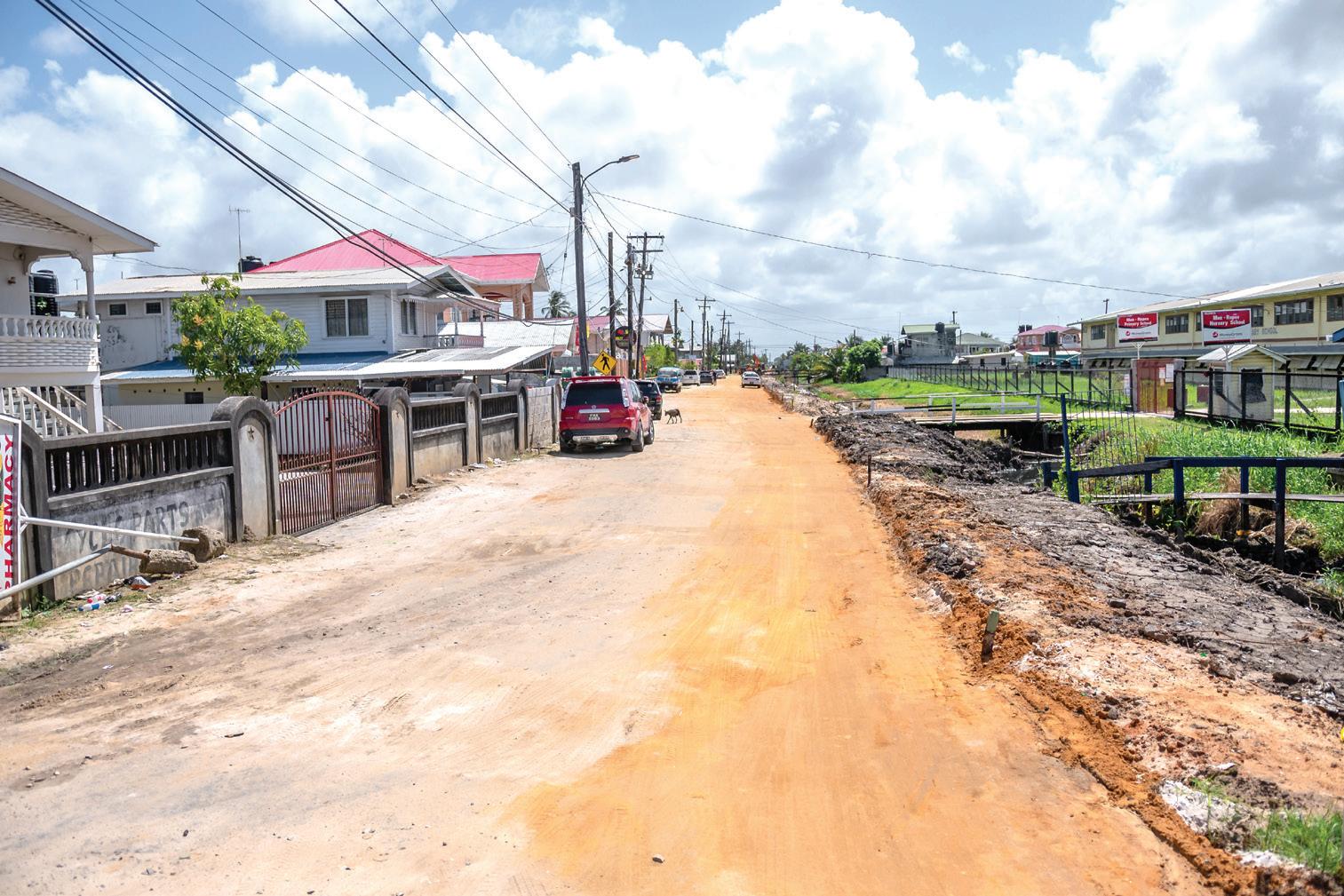
Another distinguishing feature discovered by the Pepperpot Magazine about Mon Repos is that it is one of the few villages in Guyana where most residents work in almost every professional field in the country. There are lawyers, doctors, teach-

There are a number of young people within the community as well, some of whom are in school, some are working and others are seeking employment.
While speaking with some local vendors and shop owners, they expressed gratitude to Pepperpot Magazine for visiting their community and showcasing their village.
Aunt Patsy, a vegetable vendor, said, “We are happy to have the focus on our village and we thank you all. Mon Repos is a village that everyone has heard of, whether they live in Guyana or overseas. Like any village, we have our own differences too, but we are a united community; we look
Apart from those two major institutions, this village is also equipped with a primary and a nursery school, a mall, gym, taxi services, pharmacies, pet
ers, policemen, persons in administrative positions, farmers, fishermen, vendors, construction workers and the list goes on.
out for each other.” The other locals expressed similar sentiments as Aunt Patsy.
SEE PAGE VIII
VI CHRONICLE PEPPERPOT Sunday, February 12, 2023
Fruit and vegetable vendors at the Mon Repos Market
Sunny and Sweetie roti shop (local food)
The road to Mon Repos Primary and Nursery Schools
The Mall in Mon Repos Village
The Guyana School of Agriculture
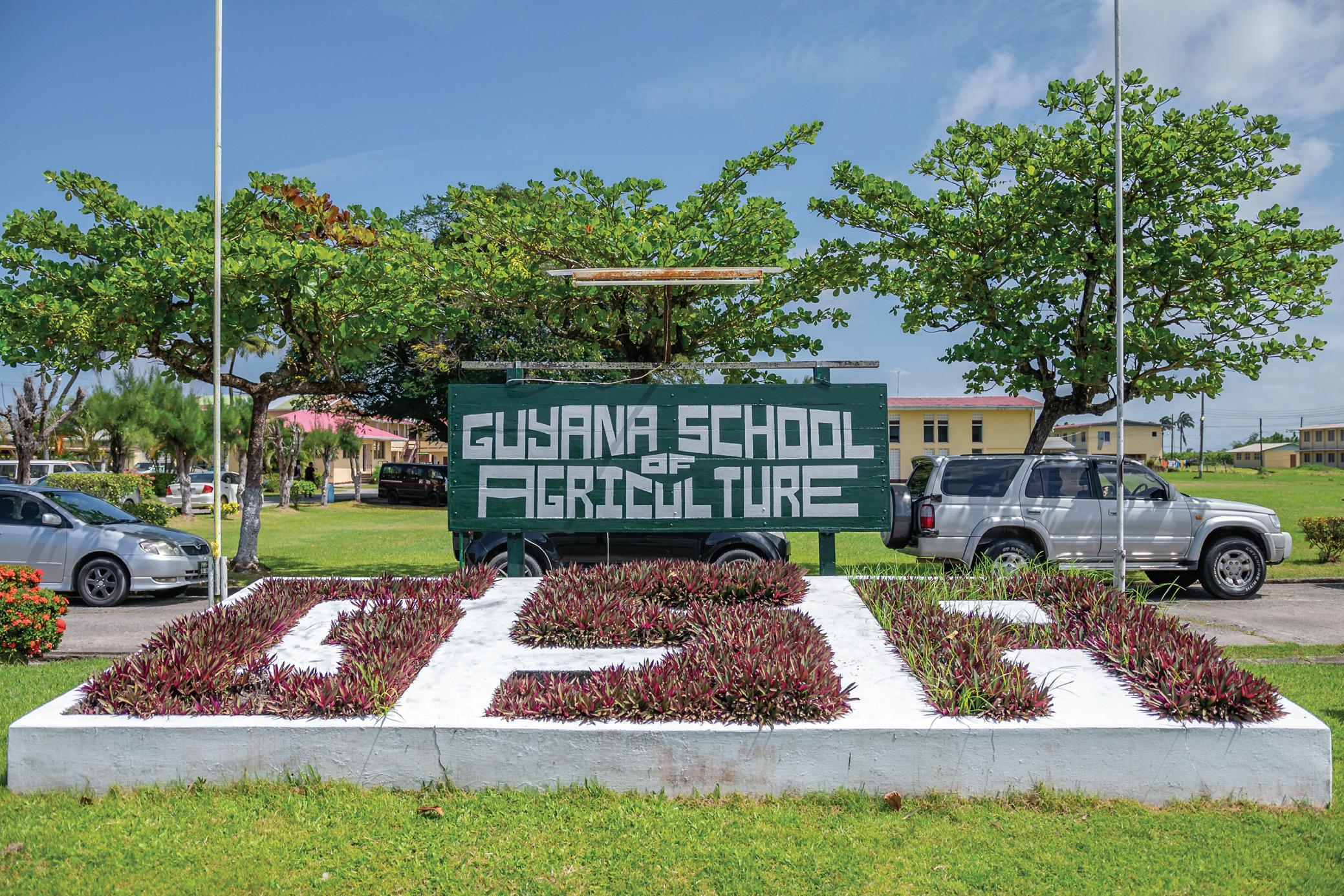
One of Guyana’s most historic institutions
By Cindy Parkinson
ANCHORED firmly in the village of Mon Repos on the East Coast of Demerara, along Agriculture Road lies one of Guyana’s most historic institutions: the Guyana School of Agriculture (GSA).
This institution was founded in 1963 and commenced its operations on September 9 of the same year, by the late President of Guyana, Dr Cheddi Bharrat Jagan. It was his vision to satisfy the need for national agricultural training in Guyana, which produced the opportunity for middle-level technicians and skilled practitioners in agriculture.
In 1964, GSA became a state corporation and had one of its proudest moments in history in 1966, when the first batch of 15 students graduated from the institution and were sent into the world of work.
As the years progressed, specialist training in forestry, animal health, veterinary public health, fisheries studies, and agro-processing have been added. This training was also offered in two main
programmes: the diploma and certificate in agriculture.
In keeping with the school’s mission statement, “To promote and support agricultural development through education and training of young men and women interested in an agricultural career,” the institution extended a branch of its campus in 2008 in Region Two (Pomeroon-Supenaam), on the Essequibo Coast, where they offered a Diploma in Agriculture and a Certificate in Forestry.
Speaking with the Pepperpot Magazine, CEO of the GSA, Mr Gavin Ramnarine, explained that Dr Jagan believed that Guyanese should be trained in the technical aspects of agriculture and be able to go out into the fields with the necessary skill sets and tools that were needed in order for them to become entrepreneurs and make a life for themselves and their families.
According to the CEO, “Agriculture is not just about farming, there is a tremendous amount of science behind it, and the only way to progress in agriculture production is to actually un-
derstand the basics.”
Ramnarine explained that any agricultural business in the country that is existing or anyone with the intention of setting up one will more than likely have a graduate
from GSA as their “ground man.”
“What we found is that the University of Guyana graduates tend to gravitate towards administrative things, such as working at different offices or ministries. But the GSA graduate is actually
they are residential. Accommodation, three main meals and snacks are provided to everyone who goes to the GSA. This is to assist a lot of young Guyanese, especially those who are from the interior regions, as well as those who cannot afford accommo-

eggs, cattle rearing that produces milk for the students of the institution and sells from it as well as a pig farm, which the CEO said brings in a “nice change” during the Christmas season. He also mentioned that there are three crop farms and farms for
the man who does all the work. They tend to go into the extension service as well as work for the Ministry of Agriculture, NAREI and other institutions, with some returning to the school as lecturers,” said Ramnarine.
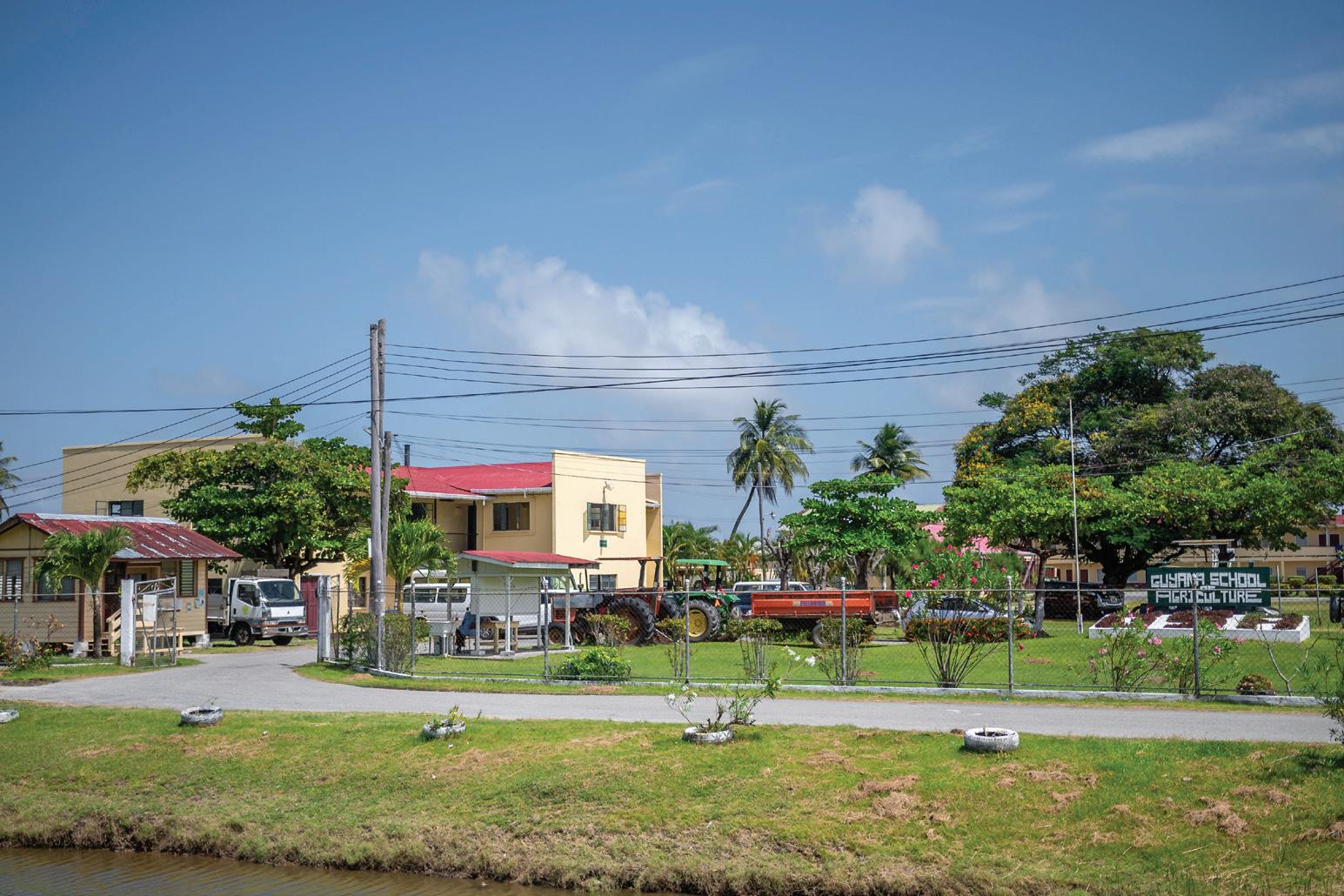
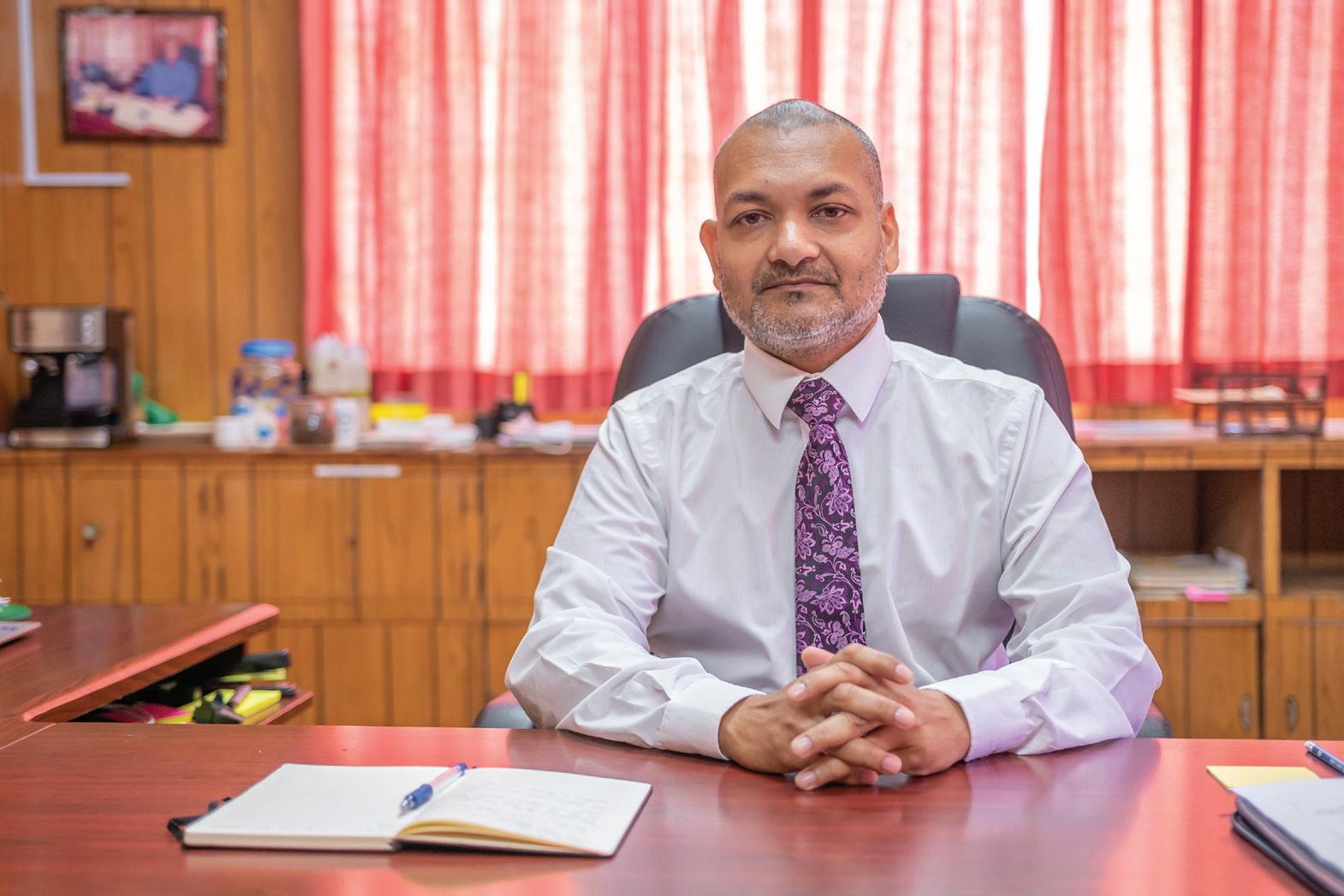
According to him, GSA gives people a “very good grounding” and the difference between GSA and a lot of educational institutions is that
dation and other basic necessities. Ramnarine also noted that GSA is a safe place that is equipped with security, a matron, a warden, councillors and all the relevant personnel that are required to make the students’ lives comfortable.
The CEO mentioned that they are committed to having a commercial farm. The institution also has a livestock farm that produces its own
fruits and vegetables. According to Ramnarine, the GSA has evolved, and working in the agricultural field is no longer tedious. He also took the opportunity to encourage all the young people of Guyana to get into agriculture, saying, “There are so many options and oppor-
VII CHRONICLE PEPPERPOT ― Sunday, February 12, 2023
CEO of GSA, Mr. Gavin Ramnarine
Partial view of the Guyana School of Agriculture
The compound of the GSA
SEE PAGE IX
By Cindy Parkinson
THIS WEEK, the Pepperpot Magazine decided to feature some students who are benefitting from one of the institutions in Mon Repos and how they are influenced by the people and the village in which they live temporarily.
One such student, Hadali Atkinson of Paloma, Santa Rosa Village, Kumaka, Moruca in Region One (Barima -Waini), has expressed her gratitude to the people of Mon Repos for welcoming her and the other students with warmth and pleasantness at the Guyana School of Agriculture and, by extension, their community.
Coming from a divorced home, the second-year student explained that she shared her time between her two
parents. According to her, she spends some time with her father, who resides in Region One and then comes to Georgetown and spends time with her mother. As fate would have had it, sometime in 2019, while Hadalli was with her mother, she decided to surf the web and stumbled upon a site for GSA.
Hadalli stated at the time that she saw the Agro-processing course and thought it was interesting, but she knew nothing about it. “I had never decided to ambitiously get into agriculture after I finished high school, but it just took a turn for the worse. I said I would apply and try the course, even though I didn’t know what it was about,” she explained.
Due to the COVID-19 pandemic, Hadalli said that she didn’t apply to GSA for
her second year, but she was given a “grand opportunity” by Mr Raymond Latchman, who hosted a community meeting that she attended in Santa Rosa. “Mr Latchman explained that there was a scholarship that was available for one person from the community to pursue their studies at the University of Guyana (UG) or GSA in the agricultural field and along with that, she was given a financial grant from the Ministry of Agriculture,” the student said. “It is exciting, but I had a lot of challenges, but they did not stop me. I grooved in, and I wanted to know more about agro-processing. It made me want to know more about agriculture and how it starts, meaning from scratch.”
Hadalli went on to say that being in Region One
never allowed her the opportunity to have a kitchen garden, nor was she exposed to livestock. She explained that Santa Rosa does more substantial farming— nothing on a large scale, but the residents are more into crops and not so much livestock. Poultry and meat are usually sourced from Region Two (Pomeroon-Supenaam) when it is required by the people of the community. “I have never seen liquid cow’s milk in my district, but only the milk in its powdered form,” she said.
Hadalli expressed how proud she feels that the people from Santa Rosa now call her and ask questions about agriculture and even livestock. According to Hadalli, she has been motivated and cannot wait to go back and help the people because of

the knowledge and practical skills she acquired from the GSA. “These skills will help me help others, especially those in Region One,” said the enthusiastic young lady.
Hadalli wants her peers to know that they can accomplish anything to which they put their minds, and she wants the residents of

GSA student thanks Mon Repos for being welcoming Mon Repos...
Mon Repos to know that they have everything that is needed in their community. It is easily accessible compared to Santa Rosa, said Hadalli and she is thankful that people of Mon Repos were nice to her while she ran her errands through the village.
FROM PAGE VI
Patrick Williams, who weeds yards for a living, said that he recently came to live in Mon Repos with his family; and he didn’t know what to expect from the people, but Patrick said that his new community was welcoming to him and his family and he was grateful to the residents.
Presently, the Government of Guyana is in the process of erecting a modern market facility for the residents of Mon Repos at the old market location.

Some of the residents who spoke with this publication said they were “thrilled” to have such a facility in their village and cannot wait to enjoy it. They also thank the President of Guyana, Dr Mohamed Irfaan Ali and his government for giving them “this long overdue and much needed” structure.
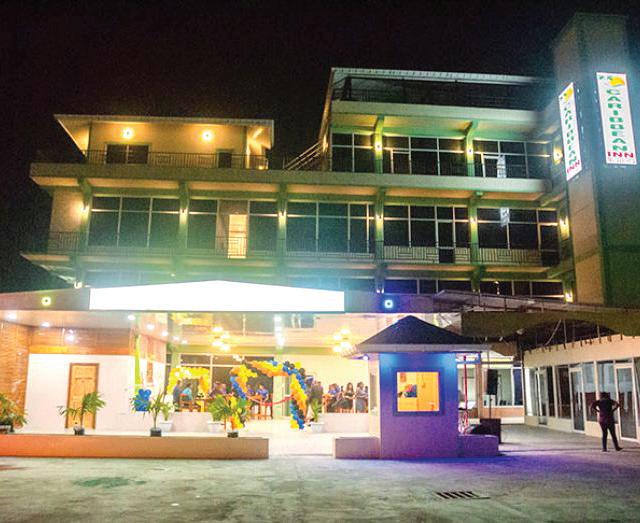
VIII CHRONICLE PEPPERPOT Sunday, February 12, 2023
Caribbean Inn Hotel in Mon Repos
‘Being a female shouldn’t limit your dreams’
GSA student makes Mon Repos her ‘home away from home’
By Cindy Parkinson
BRITNEY Sarius is a second-year student who is studying for her Diploma in Agriculture at the Guyana School of Agriculture (GSA). She thanks the people of Mon Repos for helping in preservation of the institution, so that students like herself can have a place to further their studies.

Britney is a resident student from the village of Orealla, in Region Six (East Berbice-Corentyne), an indigenous community on the Corentyne River. Coming from that area, Britney explained that agriculture is not the main economic activity: “Logging, fishing and small-scale farming are what the people mostly do in my community.”
As a child, Britney explained that she grew up in
a single-parent home with her father as a young child, and later she lived with her mother as a teenager. Life wasn’t always easy for Britney, but she fell in love with agriculture after being exposed to it in secondary school. According to her, she developed a love for the subject, especially the practical aspect of it. Even though it wasn’t the ideal job in her community and considering the fact that she is a female, it seemed a bit far-fetched for her to join the sector.
However, Britney did not allow those reasons to stop her from pursuing her dreams, more so, she saw that it is one of the sectors that provide an opportunity to earn a lot of money if it’s done correctly. “I love farming and I decided that I will continue my studies in agriculture. I know it is
profitable and I want to earn an honest dollar too. But I didn’t think about GRA; I was thinking more along the line of going into forestry,” said Britney.
Britney explained that she always wanted to be an independent person -someone who does not have to wait for someone to give her anything and could afford to buy herself whatever she needs. “The way I grew up, it was tough. From what I saw growing up, I never wanted to be like that; I always wanted to have my own stuff, but I wanted to work for it and accomplish my dreams,” Britney related.
Britney said she had a cousin who did the diploma in agriculture at GSA and shared her experience with her. Upon hearing that, she decided to “follow in her footsteps,” but Britney also
The Guyana School of....

FROM PAGE VII
tunities that are available for you, the young people. You just have to have the courage to seize the opportunity when it’s there. Regardless of your circumstance, take the first step and break the
mental barrier that is there in front of you. Everyone has an opportunity, get your education and have patience.”
Through the agro-processing unit, the institution now produces a lot of plantain, cassava flour, and por-
ridge, a major income-generating commodity for GSA.
Even though the government of Guyana gives the institution a subvention, the CEO explained that there is need for a pool and other recreational facilities to
saw the need for and importance of it in her community of Orealla. According to her, “I see that we can do this on a large-scale basis so that the people can generate money for themselves and that will in turn help in the development of the community.”
Britney took the oppor-
help ensure that the students are well rounded when they leave the institution. He also stated that, in comparison to previous years, more than 60% of the students are female.

He is asking persons from the private sector to contribute towards enhancing and modernising some of their buildings, erecting facilities, providing tools and donating sanitary pads for the females
tunity to tell the young people to stay focused, educate themselves, and know that anything they put their minds to, they can accomplish it. She always wanted them to know that it is hard work and you must make sacrifices to get what you want to accomplish, but she reminded
at the institution, which will help in the reduction of the cost for the students.
Ramnarine mentioned that Sterling Products Limited and the Beharry Group of Companies have been helping GSA for a long time, but he is also asking the other private companies to take one of their students and let them see how a proper business is run and operated, so that they can gain
them that anything is possible through God.
Being at GSA was hard for Britney to get adjusted to at first, but she noted that her fellow friends and students are friendly, they are all faced with their own challenges, but they are also a family there too.
the experience and pool it back into their communities, which will, in turn, help the country’s economy to grow.
GSA has a total of 4138 students who have graduated from the institution since its establishment, including several prominent individuals in Guyana, some of whom are owners of large, successful businesses in the country.
IX CHRONICLE PEPPERPOT ― Sunday, February 12, 2023
From NARI to NAREI
The evolution through the years
By Cindy Parkinson
ANOTHER one of Guyana’s most important educational institutions is found in the village of Mon Repos on the East Coast of Demerara, a stone’s throw away from the Guyana School of Agriculture (GSA).
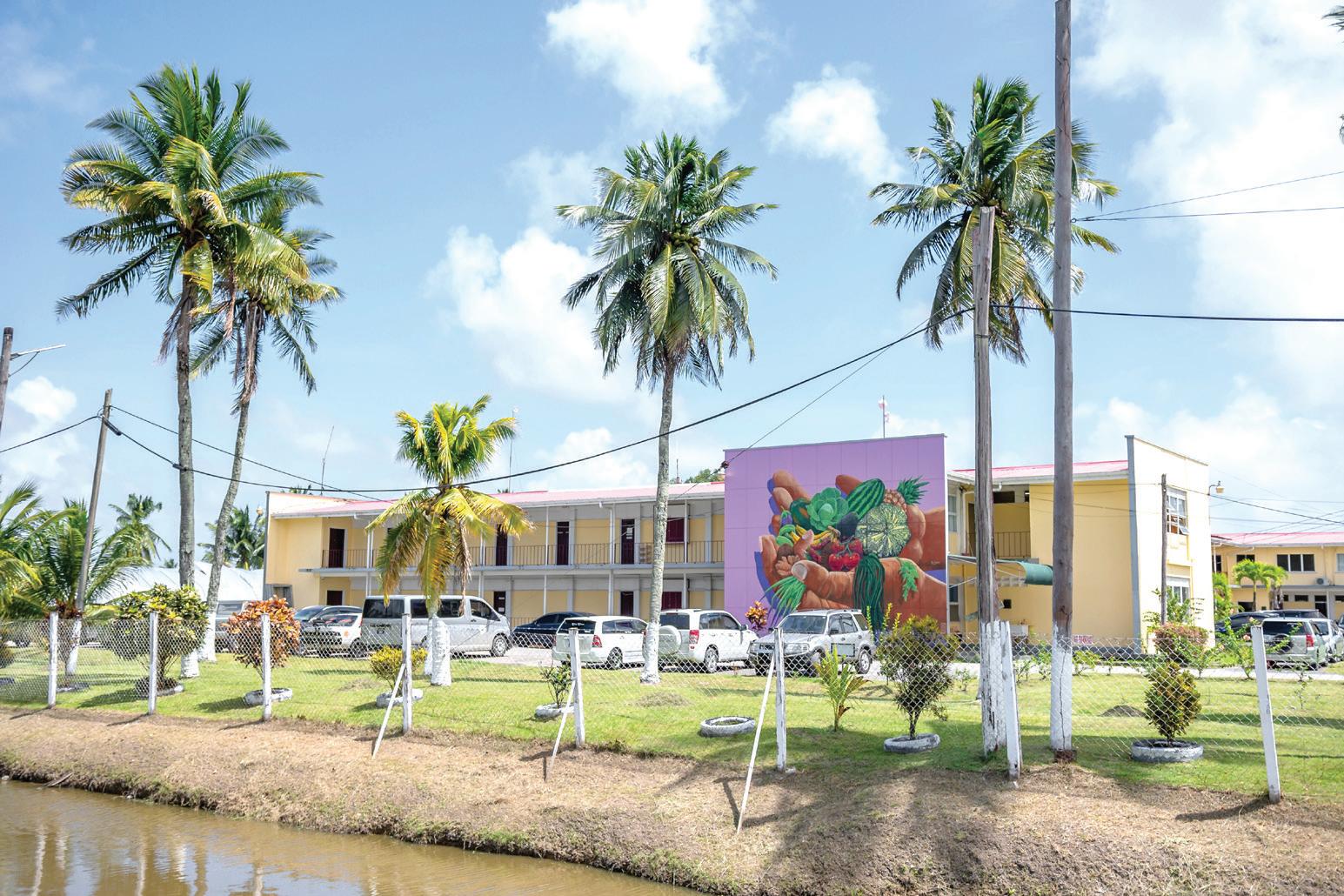
According to the Parliament Act, the National Agricultural Research Institute (NARI), as it was known at the time, was formed in 1984, but the institution came into being in 1985. After some decades, the establishment evolved and the Ministry of Agriculture brought in the extension arm under the 2010 Act. NARI was later renamed the National Agricultural Research
fering laboratory services, assisting in the analysis of
once the NARI Coastal Plain Field Research Unit (CPFRU) and they were looking primarily at rice. Over the years, GRDB has evolved into an entity of its own.
farmers, and the results and recommendations are given to them to better their lives in the agricultural field.
Fredericks explained that he began working at NAREI in 1986 when few people had PHDs and Master degrees. He said that the institution has evolved tremendously and went through a transition period from having technicians that were operating as heads of departments -which he credited for doing a “fairly” good job at the time -- to an institution that is equipped with the proper qualified personnel in the respective fields.
He also noted that there was a programme in place that systematically allows
have people with their PHDs and Masters and that was the basis of the evolution of where NAREI is right now,” said Fredricks.
NAREI was the first institution to have imported mangrove trees in Guyana. Mangrove is a crop, and there is a department that is looking at the mangrove tree, which is a “soft sea defence” that is a very active, productive and beneficial plant for the country that protects the people and the coastline farmers.
Apart from normal traditional crops, Fredericks mentioned that NAREI, with the government’s support, is looking to diversify and “scale up” other crops such
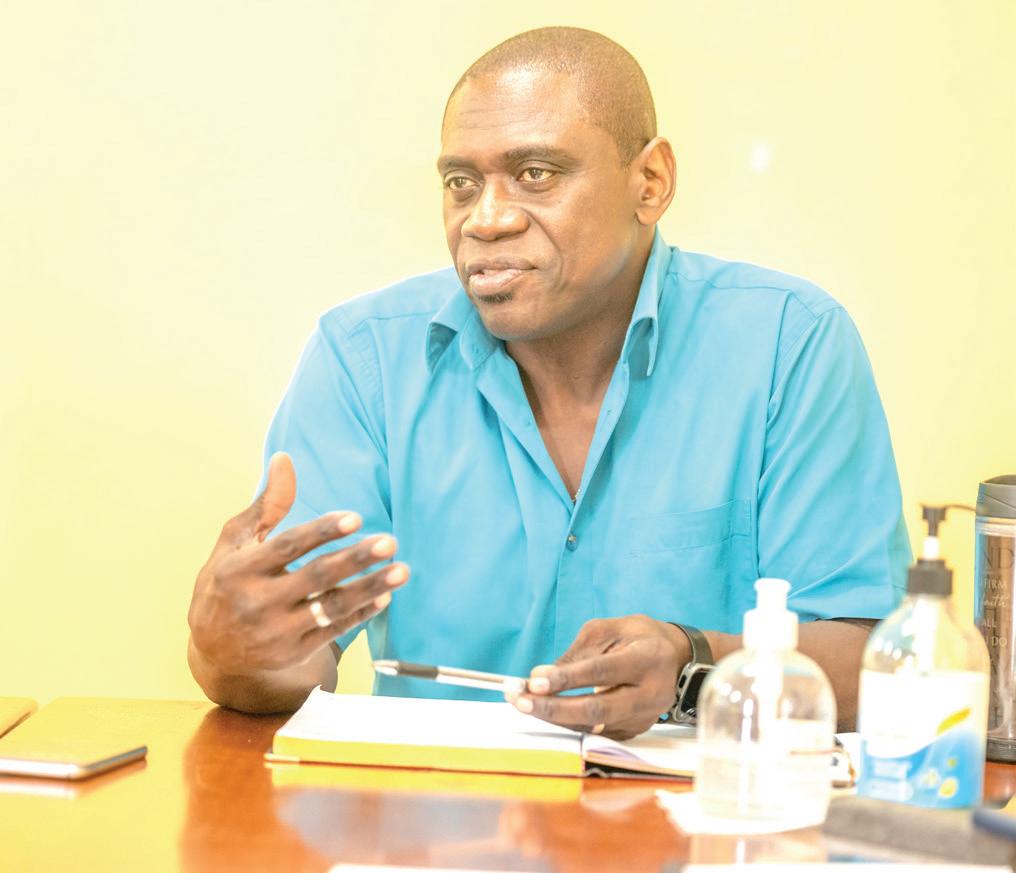
and
Extension
Institute (NAREI).
The head of research at NAREI, David Fredricks, explained that in those days with NARI, there was a wider spread of responsibilities that focused on the traditional crops, rice and sugar and the non-traditional crops, which included all the other crops such as ochroes, bora, pumpkins and everything else.
Under NARI, there was also a “livestock arm” and the institution was also of-
sugar, and doing some of the quality assurance by checking via the lab to ensure that the same methods were used and that the results were the same every time. There were also several stations at the time, and the institution was referred to as the Mon Repos Field Research Unit (MRFRU), where the labs were located and people looked at most of the other crops. The Guyana Rice Development Board (GRDB), presently located in Burma, Mahaicony, was
There is also an operation of NARI that was referred to as the Intermediate Savannahs Field Research Unit (ISFRU). This research station is located at Ebini, in Region 10, along the Berbice River. With a sandy type of terrain, the centre was focused on crops that were more suited for that environment, such as red peas, blackeyes, corn, soya beans, cotton, etc. The Minister of Agriculture, the Honourable Zulfikar Mustapha, visited the location in 2021 and signalled his government’s intention of resuscitating the station so as to improve the agricultural sector and better serve the farming community in that area by giving them the technical support that is needed.
Evolution of NAREI
With the evolution of those three units, NAREI now has a presence in all 10 administrative regions of Guyana, ensuring that there is an oversight for the farmers within the communities and gives them technical ser-
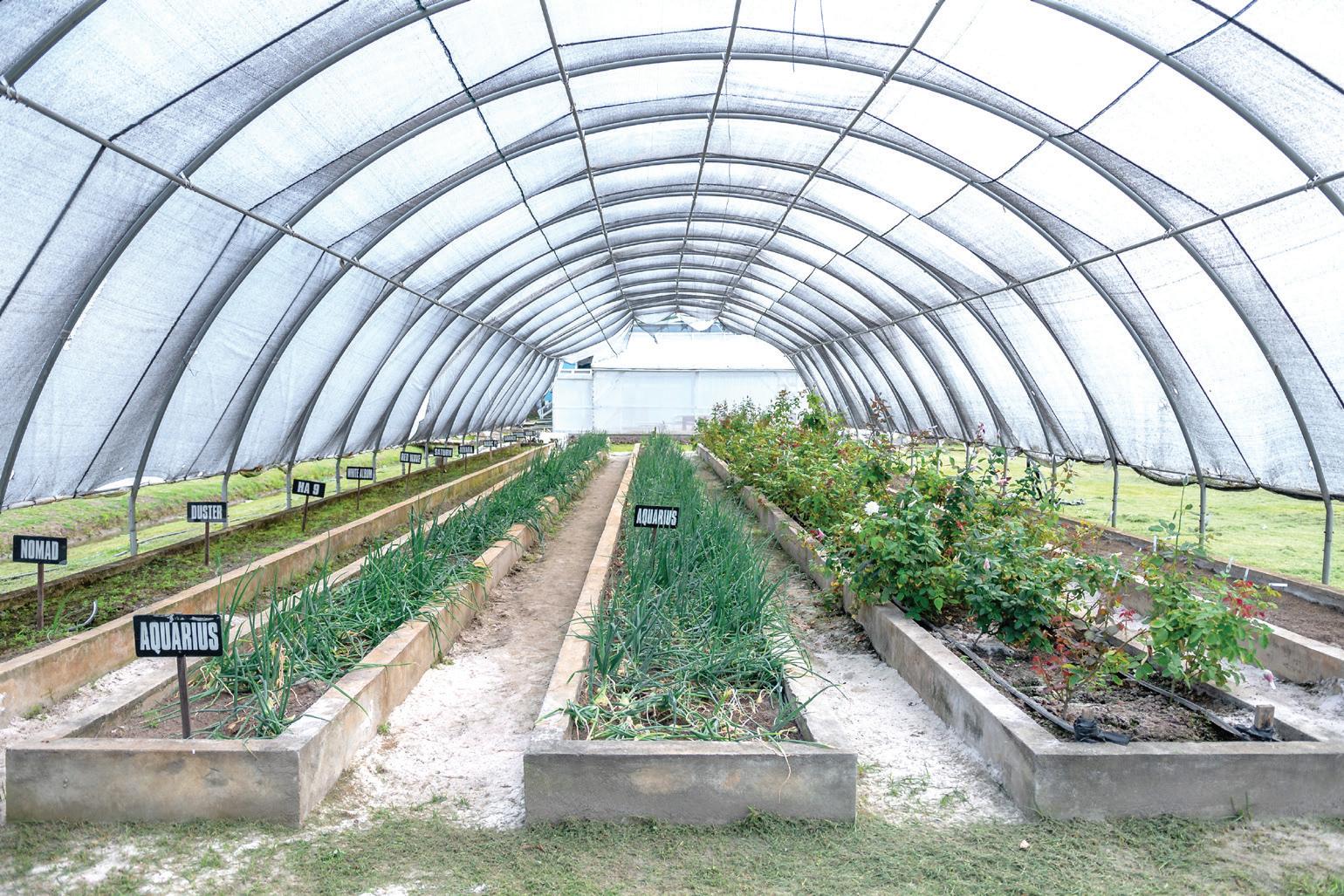
vices in terms of issues that they are facing. Farmers who have problems with Acoushi ants, for example, are given assistance to control them. Soil testing is done for
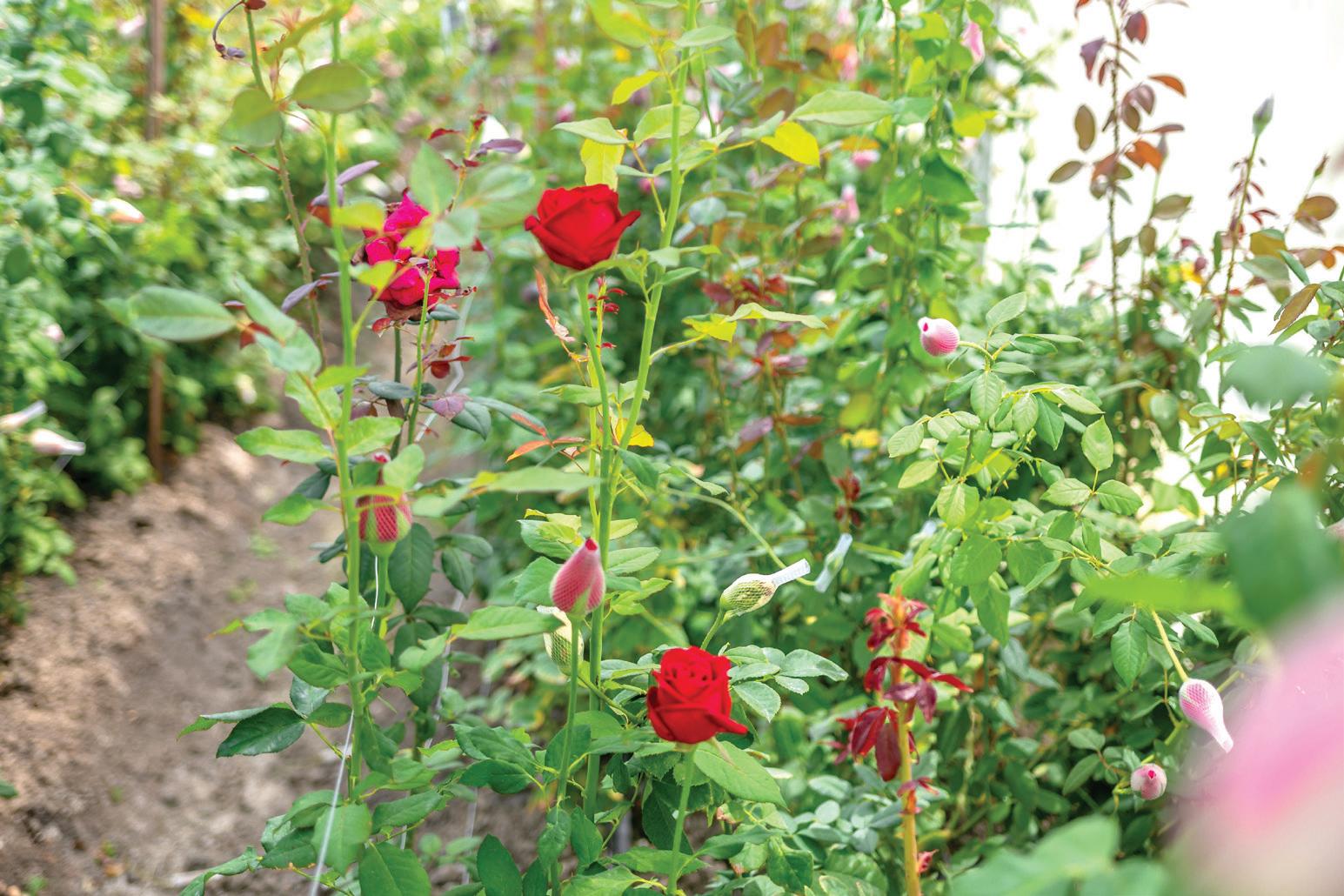
you to study for your Master’s or PhD while working at the institution. “In almost every department and sector of NAREI right now, you

X CHRONICLE PEPPERPOT Sunday, February 12, 2023
as strawberries, blueberries, grapes, and onions. NAREI’s
NAREI’s main building
David Fredricks, Head of Research at NAREI
A variety of onions
PAGE
President of Guyana, Dr Ali, Rose Production Initiative
SEE
XXII
The Black Panther comes home
--to the Land of the Jaguar
ACCLAIMED actress Letitia Wright visited her ‘birth land’, Guyana, and humbly outpoured her honesty of the makings of a star on the world stage of the cultural industries of Film and Theatre.
I was comfortable and pleased with her expressions of hard work and persistence upon recognising the innate talents that drew her to the Performing Arts. I was also happy that she had migrated to a country that would allow her talents to be nurtured, expand and attain the esteemed level to be celebrated for excellence, or, as I would interpret it, being the shining one who stepped out of the ‘Rainforest’.
Her visit and what this young woman expressed to us, coupled with, above all, the inspiration that emanated through ‘The being of her achievements so far’ has brought a glimpse of a world stage that remains a fleeting but not hopeless quest for those of us still embattled in the creative fields at home.
There is no doubt that her frankness would have transferred an even more intrepid dedication towards success, through a deeper understanding of what is required in the fields of the ‘Cultural Industries’, a trillion-dollar business that is no less as ruthless as any other area of a profit-making enterprise. But this is not selling merchandise that requires you to be an agent or possess a franchise, or can instead be an able merchant with a reliable turnover, once a dependable account is made due to suppliers. The Cultural Industries still have much more to their credit, because their products are among the oldest in human trade; they have always required levels of excellence and laws of protection. To attempt, without permission, in the ancient world, to trade in building designs, maps, and religious figurines to other nations could have cost the most brutal execution of such a transgressor.

Wars were fought for religious statues, negotiations conducted and traditional enmity entrenched for items. For example, the removal of the Quadriga from the top of the Brandenburg Gate by Napoleon, who took it to Paris, entrenched malice between those nations up to the end of WWII. Likewise, the then British governor of the Ashanti nation demanded the Golden Stool as an admission of their submission to British rule. His request declared the final war with the Ashantis. This is where the value of sacred symbolism merges with what we today conclude as Cultural Industries.
ORIGINS OF THE BLACK PANTHER
Two important bits of information that are necessary to be aware of are the origins of the Black Panther’s character,
and the world it was enveloped in. The Black Panther, as a graphic storytelling character, did not originate in the book of the same name, but as a part of the Fantastic Four superhero team in the mid-1960s, which was published by Marvel Comics and owned by Stan Lee, and initially founded by Martin Goodman under the name, Timely Comics, in 1939. By the time my little crew became aware of its existence, it was in the early 1970s. We were hooked on Commando,

Batman, and, of course, the daily ‘comic strips’. But, in retrospect, learning from copies exchanged at book stands that included the early Black Panther, it was a story of colonisation. Thus, its subliminal relevance came over clearly, as friends and relatives from North America also added the urban mystique of the real-life ‘Black Panther Party for Self- Defense’, which was founded in the US in 1966 in Oakland, California. The names of the founders would be part of our reference influence forever: Huey Newton, Bobby Seale, and Eldridge Cleaver, the latter, whose book, ‘SOUL ON ICE’, I would recommend to anyone interested in the Civil Rights struggle across borders and continents. I did, while in New York City on an occasional visit to Midtown Comics, come upon ‘BLACK PANTHER’ in his own-‘Direct Edition’. This was in 1998. I bought the November and December issues and headed for home.
From where I stood, being present as a witness to the events of Ms. Letitia Michelle Wright’s visit was the University of Guyana’s page of that event. The conferral of the Honourary Doctor of Arts and Letters is described as an ‘Extraordinary Convocation’. My highlights were the incredible rendition of the hymn, ‘How Great Thou Art’ on the programme, which I had immediately ascribed to so many funerals, but that accustomed influence was quickly overshadowed by the rendition by Madam Oselyn Rose of the Faculty of Social Sciences, deserving a standing ovation. Any residue of expected boredom was evicted next by AL Creighton’s citation on the Conferral of the ‘Honourary Degree’ that was an expression of the ‘Art of language’ and itself merited another standing ovation. Next came the Acceptance Speech: The further learning clarification of an inspiring journey, by the now Dr. Letitia Wright. Following this, came to a warning of concluding the ceremony by the Vice-Chancellor, as a pressing next event demanded.
This visit was necessary, a relief in many ways, and is expected to offer some clarity and guidance towards the necessary excellence and the state of awareness that must accompany the journey through the ‘inner and outer’ shadowed wild forest of depression, predators, and mirages, towards purpose fulfilled. Thanks to this gifted member of the ‘Guyanese’ Wright family, I presume the ancestors are well pleased.
XI CHRONICLE PEPPERPOT ― Sunday, February 12, 2023
Malignancy in the mouth
PART of the reason oral cancer has such a poor prognosis is that more than half of the cancers have metastasized (spread) at the time of diagnosis. Detecting oral cancer early is the key. As an example, one type of oral cancer, when treated while the cancer is still less than half an inch in diameter, has a survival rate of about 60 percent. The same cancer, if not treated until it is double that size, reduces the patient’s survival rate to only 15 percent on average. When diagnosed, surgery is usually required with follow-up radiation and chemotherapy treatments. The surgery is often disfiguring, and the radiation and chemotherapy therapy can cause severe complications.
Besides being involved with pulpal and periapical disease, the dentist is very much involved with the detection of oral cancer. Oral cancer is the sixth most common cancer in the world. Studies show oral cancers are more common than leukaemia, melanoma, and cancers of the brain, liver, kidney, stomach, thyroid, ovary, or cervix. Each year in Guyana it is estimated that oral cancer strikes 100 people, with a five-year diagnosis, 90 percent occur in the over 40 years age group, and males are affected more frequently than females. Statistics further show that 95 percent of all oral cancer is squamous cell carcinoma related to tobacco use.
Major risk factors for oral cancer include the use of tobacco products (smoking and chewing), the use of alcohol, and exposure to the sun (lip cancer), dietary factors, and exposure to carcinogens in the workplace. All parts of the oral cavity are affected by oral cancer: the tongue, lips, the floor of the mouth, soft palate, tonsils, the back of the throat, and salivary glands. Oral cancers most frequently occur on the lips (usually the lower lip). This is probably from chronic exposure to the sun and is especially prevalent in people with a light complexion. The tongue is the second most affected site. These cancers occur most often on the side of the back two-thirds of the tongue. The floor of the mouth is the third most affected site. Cancers on the floor of the mouth and the tongue are the most aggressive and result in the highest death rates because the cancers here spread most frequently to the lymph nodes and then to other parts of the body.
The gingival (gums), roof of the mouth, and the inside of the cheeks are less frequently affected. But oral cancers certainly can and do occur there.
It is estimated that 75 percent of all oral and pharyngeal cancers are caused by excessive smoking and heavy consumption of alcohol, especially when the habits go together. Most authorities feel that alcohol promotes the effects of cancer-producing agents found in tobacco.
Smokeless tobacco (which is not so common in Guyana) is a dangerous substance that has been proven to cause oral cancer. In addition, it has also been proven in numerous heart attacks, high blood pressure, strokes, and kidney diseases.

Dental health professionals have the greatest opportunity to identify oral cancer while it is asymptomatic, innocuous, and unsuspected. Patients who smoke and drink alcohol can visit my clinic for a free cancer examination at least every six months. It only takes about two minutes to do an oral cancer exam. When examining inside the mouth the dentist usually wraps gauze around the tongue and pulls it forward. He then feels and looks at the tissue under the tongue and inside the cheeks for texture or color changes, bleeding, lesions, masses, ulcerations, and lymphadenopathy (swollen lymph nodes).
When I was in California last October attending the American Dental Association meeting, the FDA announced that it was currently reviewing a new diagnostic system called OraScan that is being developed by Zila Pharmaceuticals. This system

SEE PAGE XXIII

XII CHRONICLE PEPPERPOT Sunday, February 12, 2023
TORN PETALS V
SARAH returned to the military base at the end of the week with a satisfied and more relaxed mind.
“It’s amazing how in a short time, after so many years, I could have calmly dealt with the disturbing issues related to my past in the most unexpected ways,” she expressed silently.
For all her life from fifteen years, she had been wary of trusting anyone and had taken careful, cautious steps on the new road ahead.
“I never stopped praying, asking God for his help,” she reminisced, a knot forming in her stomach and he sent good people to rescue me, who gave me a home, love, and care.

Her missionary family she knew in her heart would forever be a great part of her life and now she had found a precious gem, her son.
As days, weeks, and months went by he would message her, asking how was her day, giving her updates on his studies and more poems he had written. It gave her a feeling that he had found some comfort in talking to her, maybe because her world was different.
The humanitarian work she sometimes did, took her to different regions so she would send him pictures that gave him a peek into lives in the villages and communities. It would help him, she knew, to learn more about people and places. The interesting facts about the country’s exotic flora and fauna, splendid resorts, and awesome waterfalls impressed his mind. It kind of opened a whole new world for him, different from luxury vacations in Europe and North America.
He told her once, “I’m happy to have you to talk to sometimes because my father is getting sicker and my mother is overwhelmed with worry and taking care of the businesses.”
“I’m happy I can talk to you too, my son,” she said to herself.
He did not speak much of his father’s health and she never asked him anything, not wanting to know. She never made inquiries about her mother also, but one day, a month ago, a message came from one of the missionaries in the city.
The note read, “An old lady named Maya has died.”

It was her mother.
Only the missionaries knew of her relation to her.
Sarah had sat there for a long moment, not sure how to feel but the mother’s death had now brought closure to that part of her life. She sighed deeply and said with regret, “Pity it had to end this way.”
New pages are written as the wind blows away the past and fresh blooms rise for something new.
Something beautiful had been her simple dream for though poor, she had found little joy in her life as a child. In the small mirror in the hallway, she would look at her reflection and smile. But when bad things began to happen, she couldn’t look in the mirror anymore for there were always tears on her face.
But two years ago, a little smile came back, and her heart felt, again, a little joy when she met someone from a National Geographic team.
He was from the UK and had come here to do a documentary film on the Iwokrama forest, home to the best of nature. From the first moment they met, he had shown a deep interest in her but Sarah was still scared to be close to a man. They stayed connected as good friends as he travelled the world but eventually, his messages became fewer.
“I guess he has moved on,” she rued, “Wonder if I’ll ever be freed of this fear to share my life with someone?”
It stunned her when the answer came sooner than she had expected. Aryan hadn’t messaged her in quite a while and Sarah was beginning to wonder if everything was fine
with him, when she received a brief message from him, late one night,
“My father is gone.”
She had read the messages three times before it sank in, and though a surge of relief pulsed through her body, she felt sorry for her son and responded.
“So sorry for your loss. Try to stay strong.”
“Thanks,” he replied, “It’s a great loss and my mother is quite broken by his passing.”
“Well, you have to be her SEE PAGE XXI

XIII CHRONICLE PEPPERPOT ― Sunday, February 12, 2023
‘Fulfilling the...
FROM PAGE II
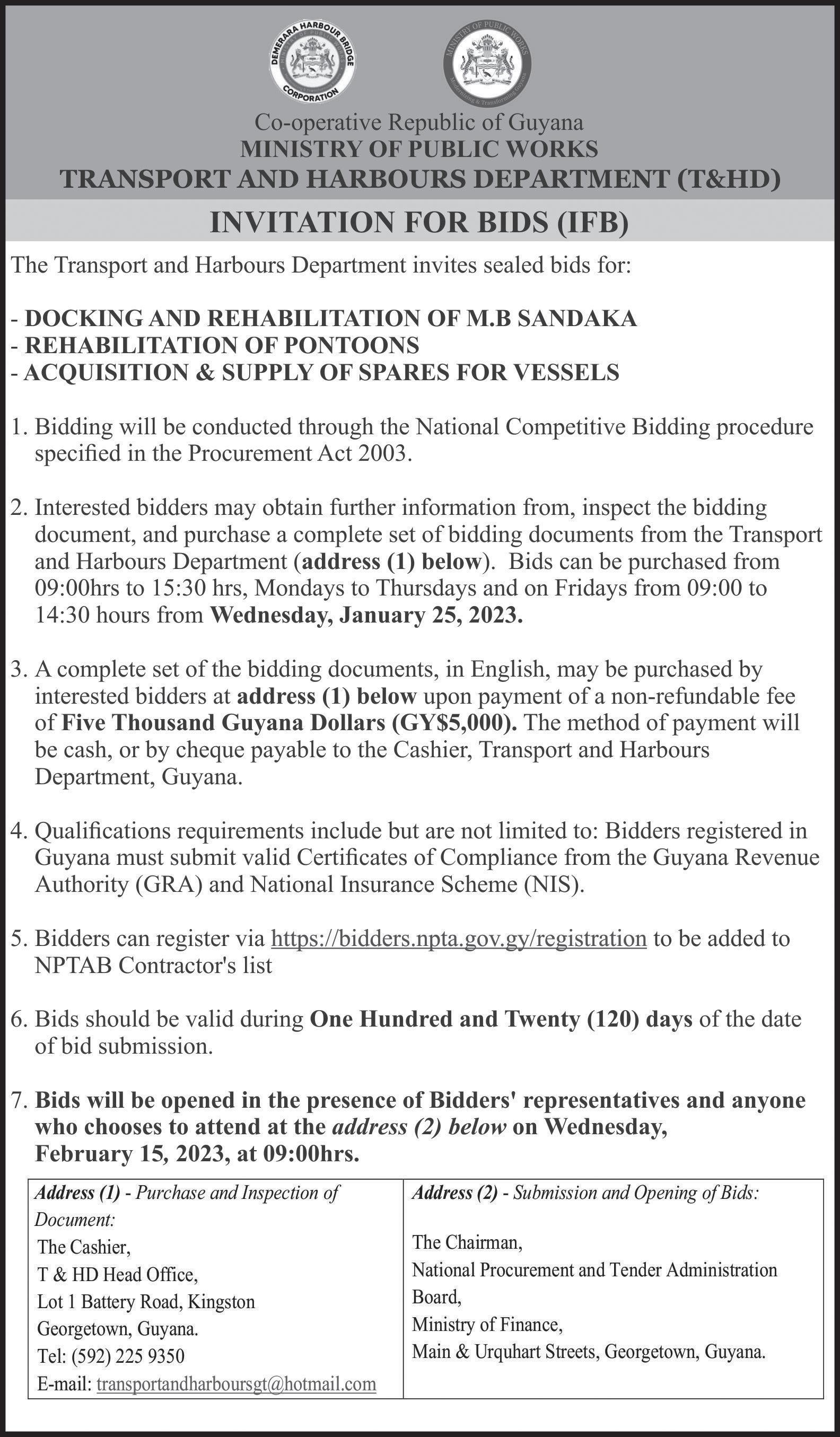
mom’s positive and affirming words, ‘You’re going to make it,” he recalled.
ON THE PLANTATION
Thus began Joseph’s stint at Plantation Farm. However, because of his stature, he was assigned light work in the form of providing water for the workers, and serving with others in the punts/pontoons to fill buckets with limestone.
Gaining a promotion to ‘lead boy’, Joseph led the mules that pulled the loaded punts/pontoons from the sugarcane fields along the canal to the factory. The ‘lead boy’ was also involved in other duties, such as feeding, watering and bathing the mules, and delivering the boss’ lunch at his home.
Dr. Murugan revealed that at that stage of his life, he felt disappointed, since his future seemed hopeless. A welcome change came when his father encouraged him to become self-em -
ployed through farming and raising cattle. The change, he said, ended the early-morning race to get to the canefields, but he still managed to do some assignments at home. That change was, however, short-lived, since Joseph agreed with his father to return to the sugar plantations, this time in the general- purpose gang.
“Fortunately, I was selected as a ‘Back-dam Boy’ attached to an overseer to prepare his mule by bathing, cleaning, drying and saddling it. The animal had to
be ready for the overseer’s trip to the back-dam for the purpose of checking on the workers,” he said.
Having “graduated” to assistant superintendent and Office Boy/Clerk and later an office clerk, Murugan explained that the latter assignment gave him some time to study, socialise and reflect on his family and religion. “There were some lifestyle changes that were manifested in how I dressed for my job, and the friends with whom I was associated. After reflecting on the changes in my life, I was convinced that the Lord had led me to the job at the
Farm and Diamond Estates, where I served from 1947 to 1960.”
Dr. Murugan disclosed that he struggled to find reality, and realised there was more to life than just working, which came through his spiritual awakening at the age of 12. “I began a quest for peace and forgiveness in Hinduism and Islam, but I felt a deep sense of hopelessness in religious rites and ceremonies, as well as a lack of freedom from guilt. That drove me to drinking, smoking and other worldly pleasures,” he admitted.
CHALLENGES OF LIFE
During what he described as a troubling time in 1952, when he failed in his attempt to elope with his girlfriend, Dr. Murugan felt life was not worth living, and many thoughts flooded and burdened his mind, including memories of his mother’s death, and his father’s decision to end his education. He even contemplated suicide. After what he described as an experience with the living Christ, Dr. Murugan
SEE PAGE XV
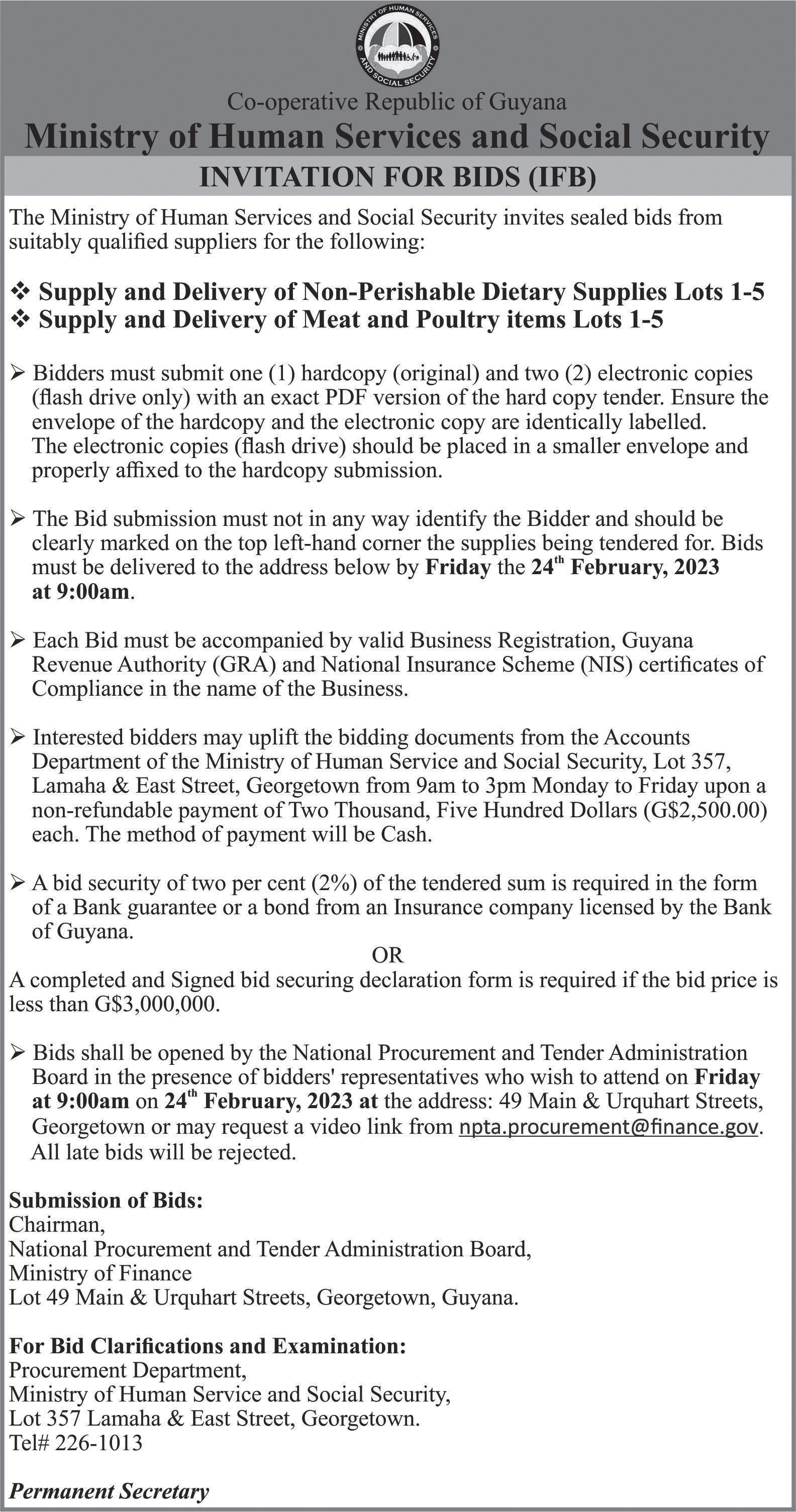
XIV CHRONICLE PEPPERPOT Sunday, February 12, 2023
‘Fulfilling the...
FROM PAGE XIV
became a member of the Pilgrim Holiness Church in Agricola, but was still associated with the Nazarene Church in Herstelling from its very first service in 1953, the very year he met his wife, Alice. The following year, he became one of the chartered members of the Church of the Nazarene, developing a deep sense of appreciation for the church, its mission, and its leaders. Several other senior roles followed, which provided a deep perspective on the
policy and practice of the local church.


Following their marriage in 1957, Joseph and Alice were mainly responsible for the transformation of the Grove Nazarene Church, but harboured doubts regarding the adequacy of his salary, despite completing more than six years at the bookkeeping office at the Diamond Estate.
NEW LEASE ON LIFE
Now fully immersed in the church, and with the birth of his first child, Sam,
Joseph “surrendered to train for full-time ministry,” which necessitated training at the Nazarene College in Trinidad & Tobago. His relatives were, however, displeased that he would relinquish a financially secure position to pursue ministry. In his senior year at the college, he became the President of the Student Body.
At the graduation ceremony, after three years at the college, which saw both himself and wife graduating, Joseph said he remembers vividly when the Permanent Secretary of the Ministry of
Education spoke about “The Voice, the Vision and the Venture” in his address. “I believe that the basic outline of the graduation message has motivated me over the years, and I have utilised it in my own preaching many times,” he said.
By the time the Murugans departed Trinidad and Tobago, Alice was pregnant with their second child, Sandy. A third, Susie, followed a few years later. After serving six years in the pastorate at Grove, on his return from T&T, Joseph was ordained
as an Elder in the Nazarene Church in 1967, before returning to Trinidad to serve in Piarco. Back home, after a few years, he was appointed as the first National District Superintendent, making him the first local leader of the Church of the Nazarene.
After ending his role as the District Superintendent of Guyana, Dr. Murugan expanded his vision through the Nazarene Caribbean Regional Office in South Miami, Florida, from 1984 to 1988 before being appointed as the Regional Project Coordina-
tor of the English-speaking Caribbean.
During his time in the USA, he used the opportunity to further his education, earning a BA in Business Administration at City College of Fort Lauderdale, and a Masters in Religious Education from Covington Theological Seminary. He also received an Honorary Doctor of Divinity from the latter. Dr. Murugan and his immediate family have been residing in Miami since the 1980s.
XV CHRONICLE PEPPERPOT ― Sunday, February 12, 2023



XVI CHRONICLE PEPPERPOT Sunday, February 12, 2023

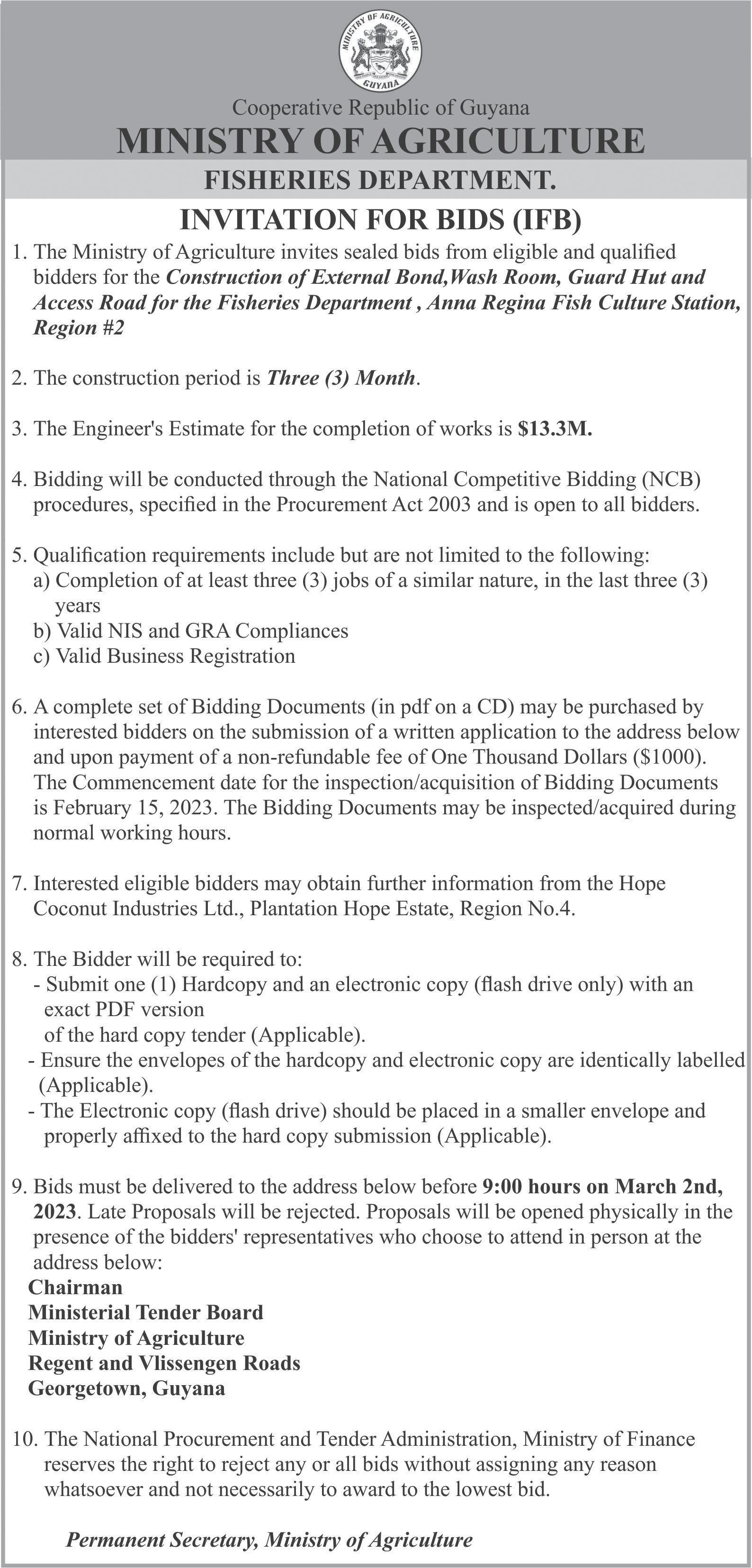
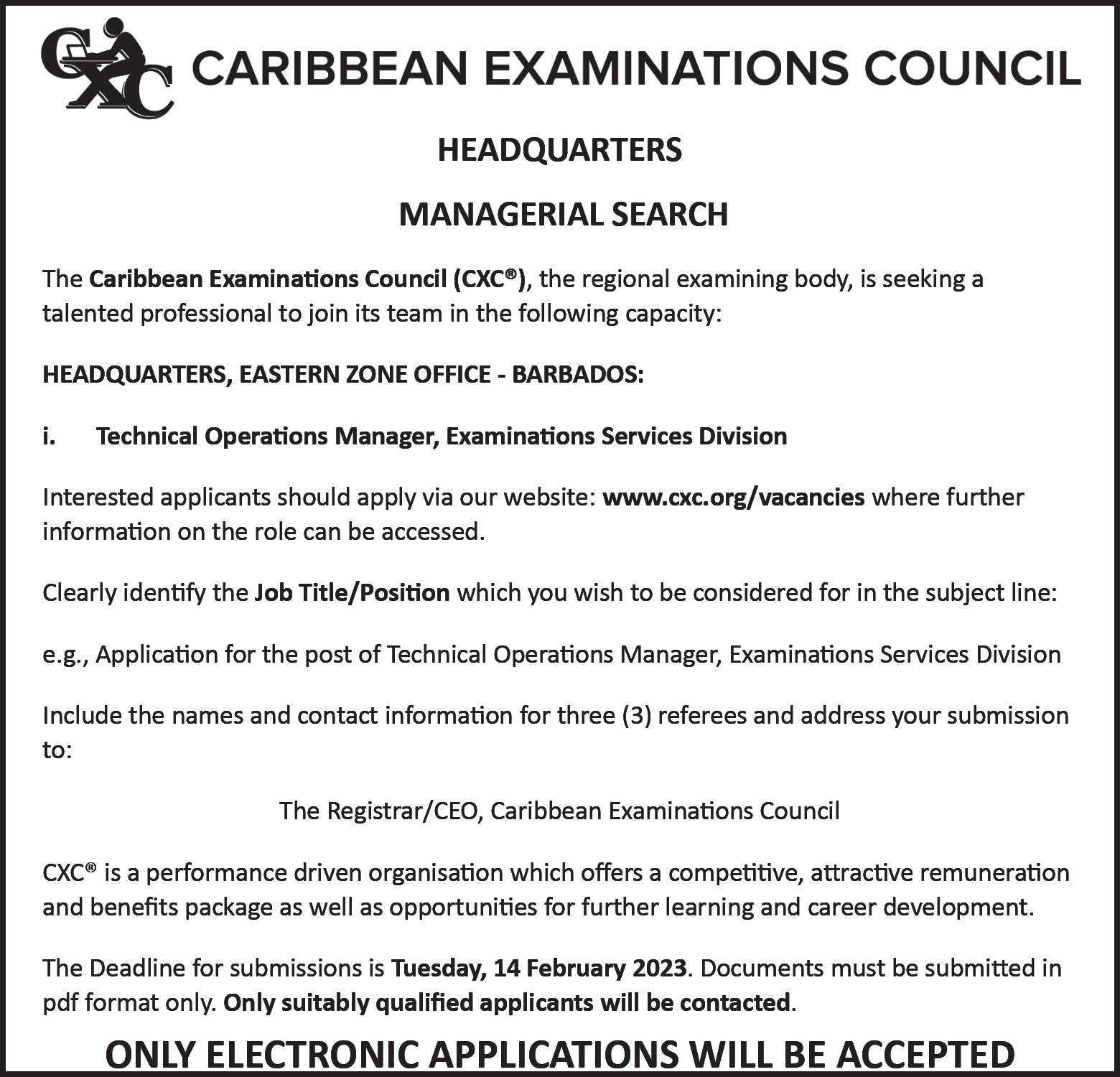

XVII CHRONICLE PEPPERPOT ― Sunday, February 12, 2023

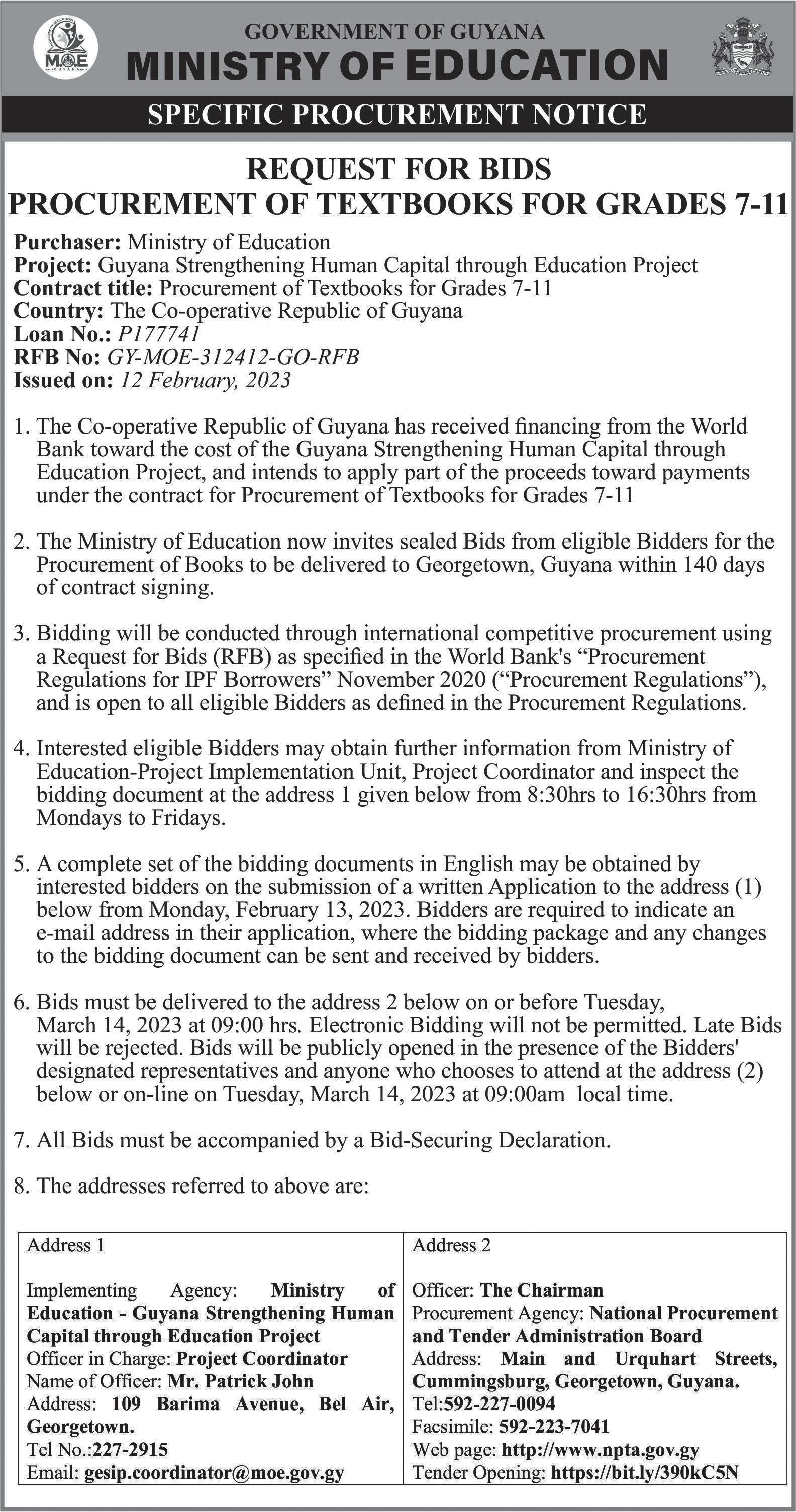

XVIII CHRONICLE PEPPERPOT Sunday, February 12, 2023
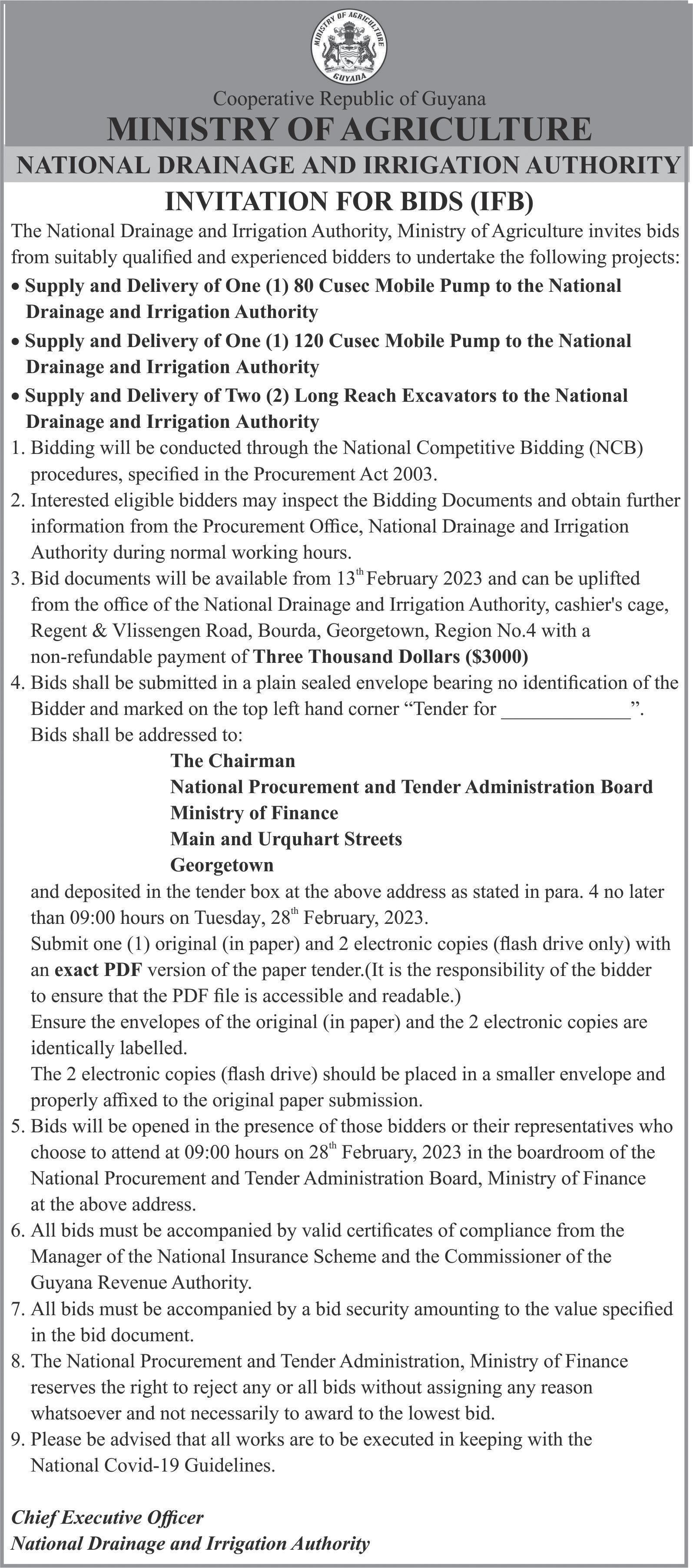
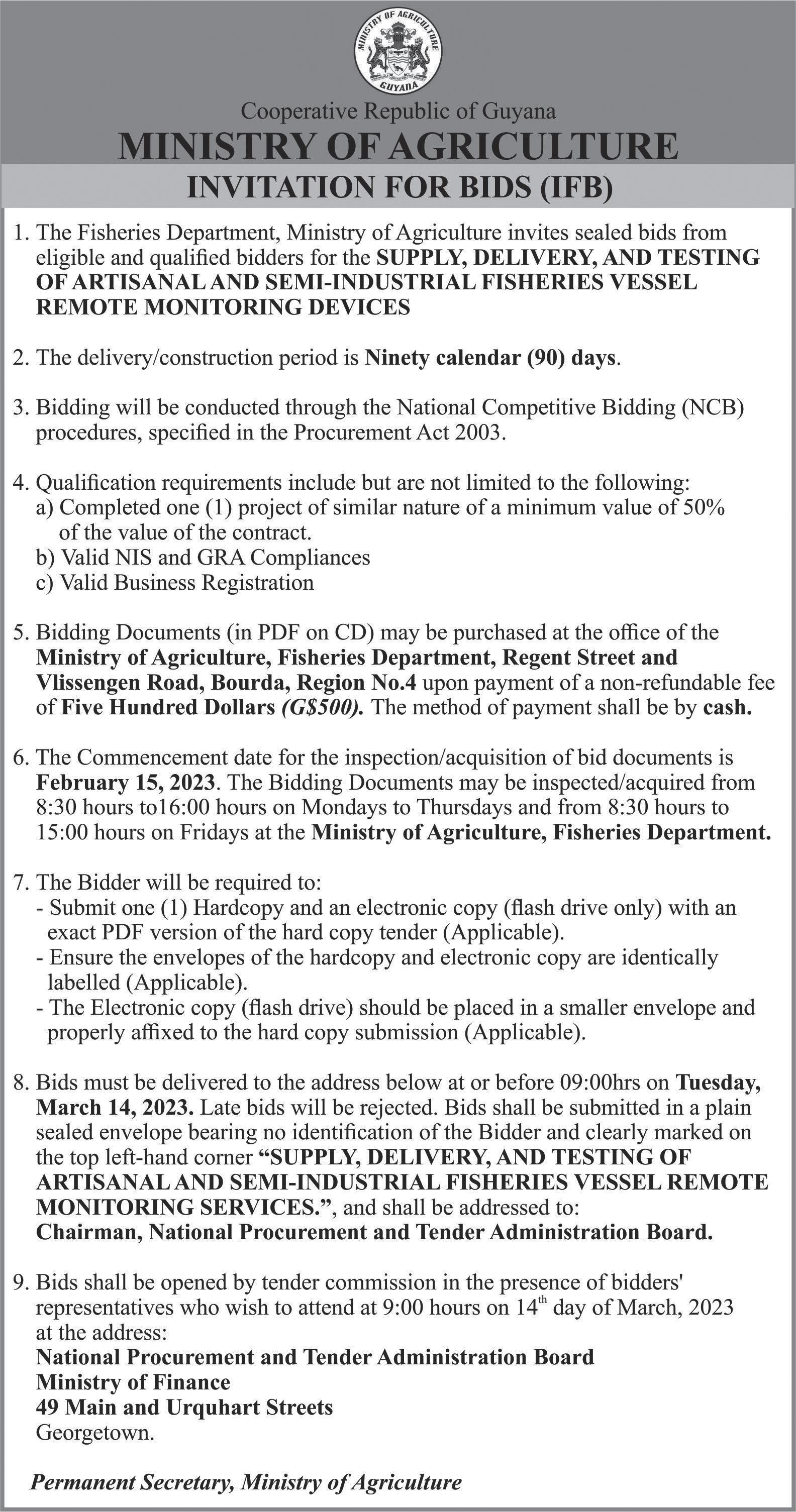

XIX CHRONICLE PEPPERPOT ― Sunday, February 12, 2023
Using minimalism to declutter your life

WHEN I first heard the term “minimalism”, I was picturing Kim Kardashian’s mansion or the idea of limitations on life. I’ve always thought about minimalism as something that relates to restrictions and limitations. Minimalism is not just about restrictions or an art form. These days, it’s a lifestyle. Throughout the years, it has gained popularity in mainstream media. In the past, minimalism could be found mostly in artwork and paintings. Artists use the concept of “less” to establish “more”. Likewise, minimalism has become a way of life for some people.

Minimalism encourages you to own only things that add value and meaning to your life and the lives of the people you care about—while removing the rest. In essence, it is about removing the clutter and pile of rubble within your life (figuratively or not) so you will have enough time and energy for the good things that remain. Our time and energy are limited—there’s only so much we can give to certain people, things, and places. As such, minimalism allows you to focus on only the things that matter the most. Everyone will have a different take on what it means to be minimalistic, but the general idea is that we should prioritise our best interests and possessions.
There’s no handbook or structure on how to be a minimalist. It’s more about holding a general belief about life and implementing it to suit you and your needs. It’s not a hobby, a project to complete, or a Pinterest ideology. Many people are quite serious about it; it should be a continuous lifestyle change if you’re serious about decluttering your life. I’ve decided to write on this topic because I believe it’s highly misunderstood and there are a lot of misconceptions about what it means to be minimalistic. It goes beyond Instagram and celebrity trends. Many of you may have an overwhelming amount of workload, you may have way too many things to do all at once, and you may have a life that feels crowded in almost every aspect imaginable.
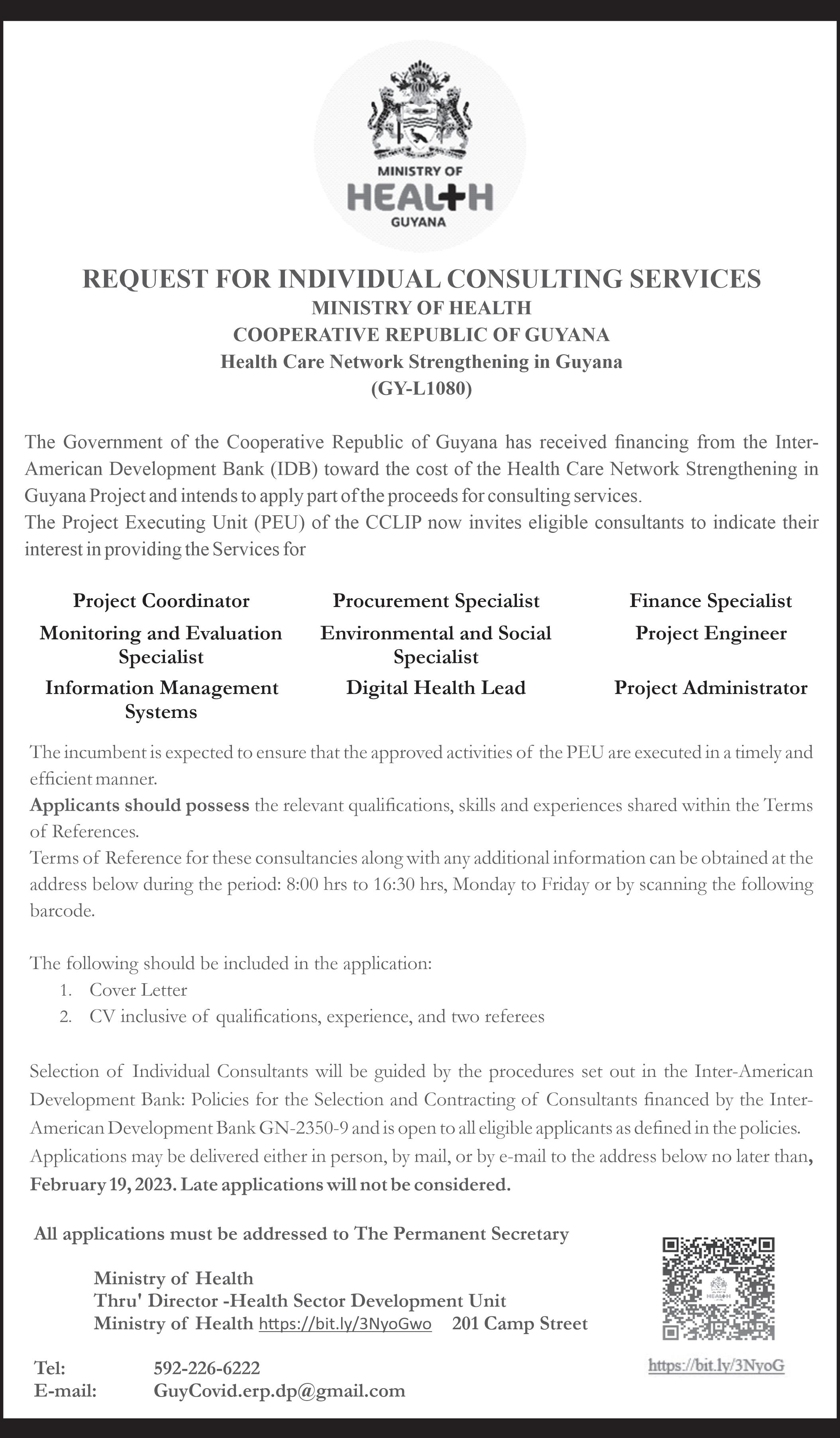
Realistically, we should all be minimalists. Even if it’s not extreme, doesn’t it make sense to not have unnecessary clutter, baggage, and people around in your life? Isn’t it better to just focus your energy on what matters the most? Minimalism encourages a meaningful and intentional life. In the consumerism society we live in today—there are so many false values about things. There’s a nonstop cycle of people always wanting more, bigger and better. Some, they’re never content. There will always be something better than the things you currently have or own. Minimalism allows you to understand the values of the things you already have—instead of promoting a narrative that you need more.
In hindsight, your ability to focus on the things that matter the most should spark a high level of productivity. It should allow you to zoom in and understand a bit more about the things or people you hold dear to your heart. If you’re interested in learning more about what it takes to be a minimalist, then you can always research what can work best for you. I find that if you start small and gradually work your way up to your list of significant things, it makes the world of a difference. Start small—start by decluttering your makeup bag and your closet, and maybe then move on to your list of friends on Facebook. Minimalism is having “less” work to produce “more” for you. Your list of opportunities can grow, your availability in time can increase, your stress levels can decrease and your relationships can flourish—all by being intentional with your priorities in life.
XX CHRONICLE PEPPERPOT Sunday, February 12, 2023
TORN PETALS...
strength and support.”
FROM PAGE XIII
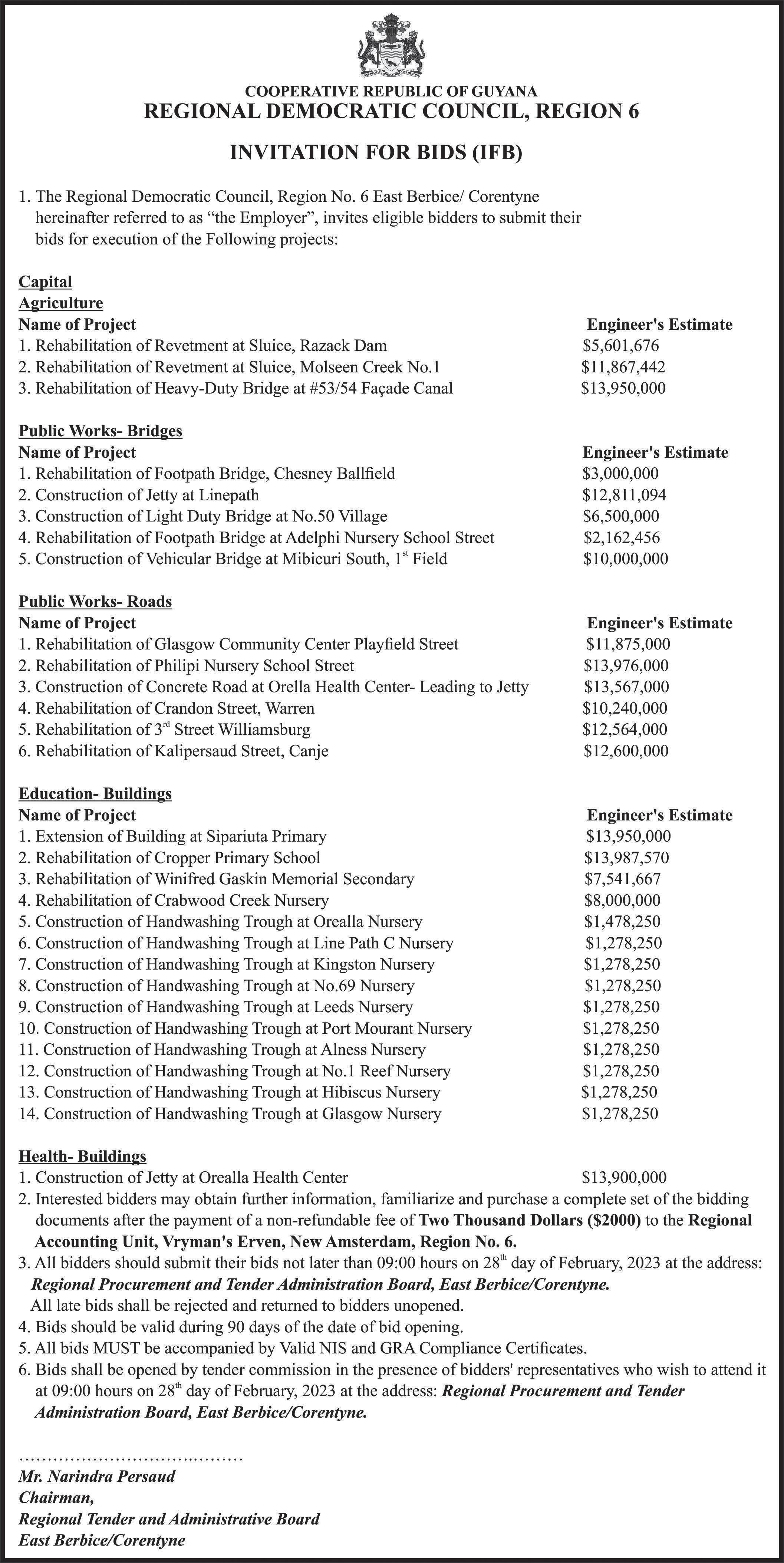
As she wrote those words, she knew how much the mother would need him by her side. The fact that she brought him up from baby as her own, it would be difficult for her to let go.
“How now does Reshma, the real mother, return?” she questioned, “The truth will cause more grief.”
Sarah’s life was defined by care and compassion and she knew she won’t be able to cause the mother any more pain but it was taken out of her hands when Aryan called her a month later to tell her, “My father left a dying confession with a lawyer for me.”
A chill passed through Sarah’s body and silently, she whispered, “Oh my god.”
Aloud she asked, “What’s that about?”
She could hear Aryan inhaling deeply before he answered, “It’s about my birth mother, a girl named Reshma. That’s just shocking and unbelievable.”
For a moment Sarah froze, not knowing what response to give him.
The truth had finally been revealed!
She managed to calm her mind and said to him, “I’m not sure what to say.”
“It’s very difficult for me to accept that my father was a bad man,” he said, a deep quiver in his voice, “That he abused a girl and my mother played a role in taking away her baby.”
His voice broke and he took a while to regain control.
“Now I understand the feeling of something that was missing from my life.”
She remembered him mentioning that before and she asked cautiously, “And, would you like, maybe, to see her know who she is?”
He didn’t answer for a long moment and Sarah held her breath, knowing his answer would unite mother and son or keep them apart.
“Yes, I want to see her but—I can’t leave my mother because she’s still broken with grief.”
“I think Reshma would understand that.”
Sarah knew he would need time to adjust to this revelation and its consequences, having to find a balance between his biological mother and the mother he grew up with. She also knew Mrs. Malhotra would be resistant to that transition so she would have to support Aryan, the best she could.
“No one knows where she is though,” Aryan said.
“Maybe she’s close but never returned because of fear. I’m sure you’ll be able to find her.”
“Well,” he said and she could hear the strength in his voice, “I’m young but I have to be strong, and being her son, I hope she can return.”
“Oh gosh!” Sarah exclaimed quietly, his words filling her heart with joy.
Sarah allowed a little time to go by and then messaged Aryan that he would see his mother soon.
On that day, Reshma returned as Sarah dressed in her finest military wear and stood proudly as an accomplished young woman. Aryan was taken completely by surprise and he exclaimed, “It was you all the time! Oh my god, this is so crazy and awesome!”
He couldn’t contain his joy and with tears in his eyes, he greeted her, “Mom.”
She couldn’t stop the tears when she said, “My son.”
He hugged her and in that blessed moment, there was not a dry eye among Sarah’s military friends and her missionary family but no one paid attention to the displeased look on Mrs. Malhotra’s face. She couldn’t believe that Sarah was Reshma.
Money it is said, cannot buy everything.
And not to forget what karma can do.
So today, after thirteen years, a mother can now hug her son.
Fate does have a way of playing its cards.
XXI CHRONICLE PEPPERPOT ― Sunday, February 12, 2023
From NARI to...
FROM PAGE X
goal is to get it out to the farmers and have them produce acres of crops, so that the government can cut down on the import supply.
The roses are one of NAREI’s most popular crops at the moment and this was an initiative that was introduced by the President of Guyana, Dr Mohamed Irfaan Ali. The president aims to introduce rose-planting to single mothers across
Guyana, so that they can earn incomes for themselves.
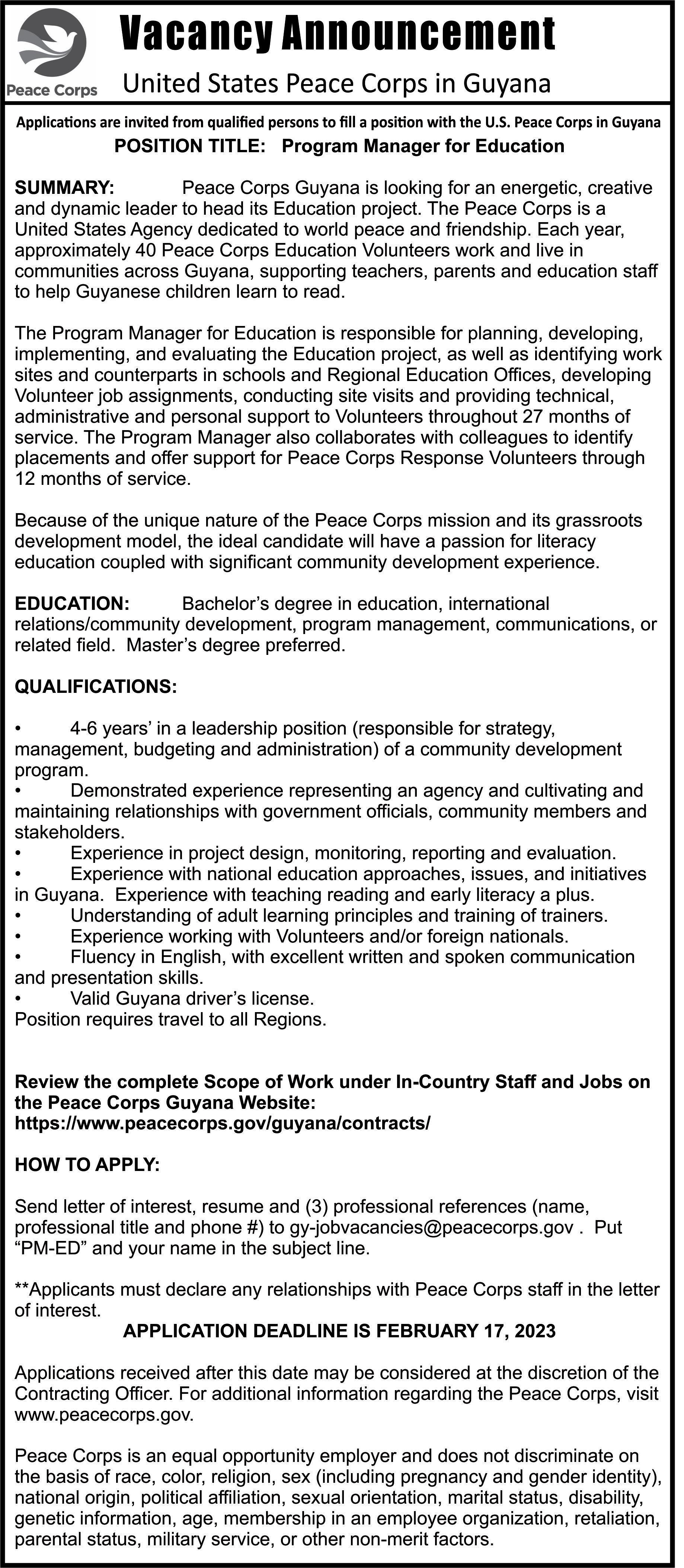
NAREI has developed technologies that can make the soil classified as non-agricultural land fertile now by adding biochar (charcoal) as an input to the sandy soil, which will allow the soil to maintain moisture and nutrients so that the crop can benefit from it.
According to Fredericks, many farmers have used their recommendations to plant and harvest their produce successfully. Regarding the legume farmers, NAREI also caters to them and hopes to encourage more farmers to invest in legume farming.
The nursery systems of NAREI are located in every region of Guyana and they produce plants that farmers can go and get at an affordable price.
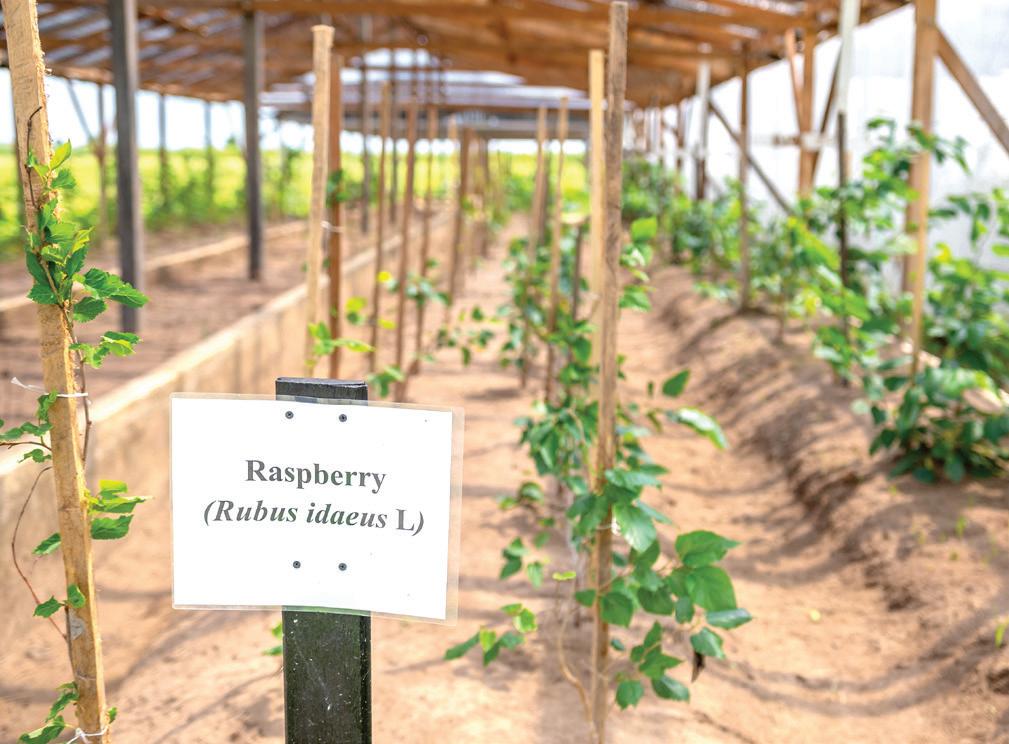
When it comes to preservation, NAREI continues to evolve in tissue culture by investigating germplasm conservation and having their germplasm stored in vitro in solution within the facility.The idea is to conserve the plants they have, regenerating them for use by the farmers and keeping them in store in the field and in the laboratory, germplasm plants. In the case of something going wrong the institution can resupply farmers.
NAREI continues to promote greater efficiency in the crops and agricultural products industry, providing enhanced services in agricultural research, extension, and crop protection, thereby allowing effective administrative administration and regulation of trade, commerce and export of crops and agricultural produce.
The institution’s vision is to ensure food security, the empowerment of farming communities, and the enhancement of their livelihoods through improved and environmentally friendly technologies. It is also their goal to become a centre of prominence in agricultural research and development through appropriate technological development and dissemination, commercialization of research results and support services excellence to support the development of a competitive agricultural sector in Guyana.
MISSION STATEMENT
NAREI’s mission statement is to advise, develop and transfer appropriate systems to promote balanced, diversified and sustained agricultural production through adaptive and investigative research, using a market-driven approach and a range of regulatory services to the sector.
XXII CHRONICLE PEPPERPOT Sunday, February 12, 2023
A section of the raspberry shadehouse
The Confidence Becomes You virtual programme
“THIS programme demanded that I work on how to identify myself to provide the best version of myself. I thought that all it was was just my name, and Sonia Noel crushed and destroyed that. One of my best takeaways from this programme was how to sell my entire business in just 60 seconds. When I got to the topic of purpose, it opened my ability to speak boldly in public; I even started to think more positively about myself. It was then I learnt who I was, and what the difference between confidence and self-esteem was,” Marcia Trotz, Entrepreneur.

Words like these encourage me to keep hosting the Confidence Becomes You virtual programme. I have been hosting this programme for years, but implemented the virtual version during the pandemic. I have not counted the many testimonials that were shared over the years. I am a very confident woman today, but it wasn’t always like this. I was a shy and very introverted young lady who was extremely unsure of herself; I hardly interacted with people, because of my low self-esteem, which caused me to doubt myself repeatedly.
Looking at me now, it’s very difficult for people to believe that confession, because of the woman I have become today. I had to intentionally change my mindset and challenge myself to improve my self-esteem and self-confidence. This intention allowed me to look through a clearer lens and visualise the image of the person I was created to be.
Self-esteem refers to the overall sense of personal assurance we feel; the self-reliance, the positive self-regard and the self-love we possess. Self-esteem is developed from our responses to the many experiences, and the varied situations that have shaped how we view ourselves today.??Self-confidence influences how we feel about our abilities, knowing
that we can express ourselves differently in each situation. For instance, I may generally have a healthy self-esteem, but very low confidence, particularly in situations involving math. So, in the final analysis, I would need to channel my confidence to maintain my composure in the face of this insecurity.
When one loves oneself, one’s self-esteem improves, which makes one more confident. When one is confident in many areas of life, one increases one’s overall sense of esteem. All in all, one can work on both at the same time. I am passionate about this programme because I saw the transfor-
mation manifested in many lives, some of whom have shared their testimonials below. I believe in proactively charting positive outcomes in individuals. Many are still fine-tuning the goals for the new year, although a month has gone by very quickly. Confidence is necessary as you chase down any goal; it allows us to be self-reliant, committed, resilient and focused. Not having confidence can cause you to doubt yourself, act on fear, sell yourself short, and give up.
When you are confident, you don’t need validation from others to acknowledge your achievements.

A few days ago, I received a very encouraging call from Victory, who has grown through the programme. She is from Nigeria, and was studying medicine in Guyana. She left to go home, and called to thank me for influencing her life in a positive way, and she shared with me again the benefits she received from the Confidences Becomes You Programme zone.
Confidence pushes you outside your comfort zone. Everyone has a comfort zone, where we feel completely safe and at peace; success is not alive in this zone. Live in your comfort zone, and you won’t achieve anything extraordinary; take just one baby step outside the lines, though, and the possibilities are limited only by your imagination. I have attended events where my confidence introduced me before I said one word. The confidence you gain and give to the world will allow others to see and share in your true beauty.
I always receive great feedback from my pics, because they exude confidence. I am so relaxed in front of the camera, and that inner beauty, mixed with the outer creates magic through that lens. Cleveland is amazing, and he did my first shoot for 2023 a few days ago. He always explains how easy it is to photograph me, and a shoot that would take two hours is wrapped up in 45 minutes.
Sharing the pics outdoors from my new collection. I will share some more in another column after the preview on 12 February. Confidence has made me jump and grew my winds down; lack of it robs you of the opportunity to live your best life.
I love this quote by JM Barrie. “The moment you doubt whether you can fly, you cease forever to be able to do it.”
I invite you to join us for the next Confidence Becomes You virtual class (WhatsApp 5926848129), which commences in a couple of weeks. Remember that you are worth it as we celebrate this beautiful journey called life BEYOND THE RUNWAY.

Malignancy in the...
incorporates a series of oral rinse solutions to enhance the visualization of abnormal tissue. The disclosing agent leaves areas of unhealthy cells clearly defined in blue, allowing the disease to be diagnosed in its early, more treatable stages. A dentist can complete the OraScan diagnostic procedure in less than five minutes as an adjunct to a routine checkup.
However, you the patient can look for these other warning signs:
1. A sore on the lips, gum, or inside the mouth that bleeds easily and does not heal within two weeks.
2. A lump or thickening in the cheek that can be felt with the tongue.
3. A numbness or loss of feeling in any part of the mouth.
FROM PAGE XII
4. Soreness in the mouth or a feeling that something is caught in the throat with no known cause.
5. A white or red patch on the gums, tongue, or inside the cheeks.
6. Difficulty in chewing or swallowing food
The value of self-examination is strictly for screening purposes. When questions arise, your dentist is the best source of information about any suspicious sores in and around the mouth and neck areas. If your dentist feels you have a suspicious lesion he will probably do a biopsy. This involves taking a tissue specimen from the affected area and sending it to a pathologist to examine it under a microscope to determine the cells in the area.
XXIII CHRONICLE PEPPERPOT ― Sunday, February 12, 2023
EPA AND NOISE MANAGEMENT
MANY people, especially noisemakers, are quick to think of noise as a by-product of recreation, their livelihood, or give no thought to it at all. Often, the neighbour trying to sleep after a long day or desirous of having some quiet family time would raise an alarm or file a complaint with the relevant authorities. Whether we like it or not, noise is all around us, and sources of noise are ever-present. Situations involving noise nuisances/disturbances often escalate when they become a regular feature.
Effects of noise on health
Frequent noise exposure can have serious impacts on human health, which include but are not limited to: increased heart rate leading to elevated blood pressure, sleep deprivation, hearing impairment, headaches and migraines, psychological triggers for people with PTSD, anxiety, etc.
Noise also affects animals by disrupting migratory patterns, causing the inability to hear and escape from predators, and abandonment of territory, and loss of ability to reproduce.
What is acceptable when it comes to noise*
The Environmental Protection Agency (EPA) has a duty under the Environmental Protection Act, Chapter 20:05, Laws of Guyana, and the Noise Management Regulations 2000, to control and prevent pollution, and set standards for what is scientifically acceptable when it comes to exposure to noise. The Noise Management Regulations established in 2000 fixed standards and gave the Agency enforcement powers for noise management.

Activities producing noise from the construction, installation, operation, modification, or extension of any facility must be authorised. Anyone who wishes to operate a loudspeaker or any other sound-making device or equipment at a public space (e.g. open-air concerts, weddings, barbecues, shows, nightclubs, fairs, etc.) or any private premises must seek per-
mission from the Environmental Protection Agency (EPA). Depending on the nature of the activity, the EPA grants two types of noise permits - Noise Permit (Short Term, which is for activities such as open-air concerts, weddings, barbecues, etc.) and an Environmental Authorisation (which includes night clubs, restaurants, etc).

What you need for a Short-Term Noise Permit
* Proof of event
* Affidavit
* Proof of rental (if you are renting the space)
* $20US fee (or that which is equivalent to the daily exchange rate at Bank of Guyana)
* Proof of ID of the applicant
* Completed application form
Noise Management Task Force
The Ministry of Home Affairs, through the Commissioner of Police, took the initiative to establish an Inter-Agency Task Force to combat noise nuisance. The unit was established following the signing of the Memorandum of Agreement on May 16, 2022, “having recognised the right of citizens to live in an atmosphere of peace and tranquility, and free from undue discomfort.”
With the efforts of officers of the Guyana Police Force and the EPA, the main goal of the Task Force is to ensure greater enforcement of the laws/regulations on noise nuisance, which in turn will reduce the discomfort caused by noise pollution across the country.
The key objectives of the Task Force are:
* enforcing existing (or creating new) rules governing codes for all establishments that cater to the use of amplified sound equipment;
* enforcing silent zones;
* eliminating the emission of loud music in public transport vehicles;
* recommending adjustments to laws that allow the use of available technology to establish and measure noise levels for compliance and prosecution;
* curbing random and spontaneous open air and roadside “boom boxes”; and
* examining complaints made about industrial noise and taking necessary action as deemed fit to eliminate or reduce the level of noise discomfort.
Equipping officers to tackle noise
The Agency continues its collaboration with the Guyana Police Force to provide capacity building through training on Noise Management with officers of the Force. The training sessions were designed to build the technical capacity of Police Officers to respond to noise pollution reports from the public and to aid in the SEE PAGE XXVIII

XXIV CHRONICLE PEPPERPOT Sunday, February 12, 2023
ST VALENTINE’S DAY
TODAY, Sunday, is often called “Valentine’s Sunday” since St Valentine’s Day falls within this week. This year St Valentine’s Day falls on Tuesday, February 14, and throughout the Western World, it is celebrated as a day for lovers - a time when young lovers pledge their love for each other and when engagements and weddings often take place.
In the United States, the day is celebrated with greater elan than in other countries: The shops and even homes are decorated with the colour red enveloping everything and with Valentine’s motifs of Cupids, broad red hearts, and red roses, and the big shops are heavily stocked with chocolates in beautifully decorated boxes, cakes iced in Valentine colours with cupids and hearts on them, expensive perfumes and toiletries, jewellery especially diamond rings, fancifully wrapped gifts with red ribbons, real red roses or even artificial ones, and beautifully designed Valentine cards. There are discreet advertisements of top-of-the-line restaurants where couples could dine. Gifts for older friends, relatives, and small children are available, underscoring that Valentine’s Day encompasses all loved ones though lovers are centre stage. The staff of business places, especially female staff, are attired in red and white Valentine garments. Business on Valentine’s Day in the USA is worth more than $20 Billions.
Before World War II, St Valentine’s Day was celebrated in Guyana as a quiet Church feast. After World War II, with the spread of American culture, Valentine’s Day was quickly adopted into the Guyanese celebratory calendar, and the whole population became celebrants irrespective of their religious background. In addition to the American borrowings of decorated and well-stocked shops with Valentine’s goods and the motifs of red hearts, Cupids and red roses, and so on, a Guyanese flavour was added to the celebration. Young people would have their house parties and spontaneous engagements were often announced in the schools. The youngest children would make Valentine cards for their parents, and the older classes would present their teachers Valentine gifts. As the feast day becomes more rooted, more Guyanese contributions would be made to the evolution of Valentine customs.
To most people, St Valentine’s Day is merely a celebratory day to be enjoyed and many even believe it was invented by the commercial community. Its History begins in Roman times, that is, over two thousand years ago.


In Roman times, a fertility festival known as Lupercalia honouring Faunus, the god of fertility and crops, and Juno, the goddess of marriage, was celebrated between 13th and 15th February every year, but with all the main religious rites and robust celebrations taking place on 14th. Goats were sacrificed to the gods and their skins were cut into small strips making switches with which the male celebrants would strike any female they encountered as they ran into the streets. Any female who was switched would be assured of becoming pregnant in the coming year and many women placed themselves in the path of the celebrants to be touched by the switch.
From the first century A.D., Christianity began to make its way in Rome and by the third century it had become established among the lower classes. Young men were becoming married at a higher rate than formerly and preferred to remain with their wives and children than enlist in the Army which was now affected by a serious shortage of recruits. Emperor Claudius, therefore, issued a decree against marriages.

Many young couples still desired marriage, and Bishop Valentinus secretly performed such marriages. Eventually, Emperor Claudius learned of the Bishop’s ignoring of his decree and had him arrested and imprisoned. Bishop Valentine was a person who practised loving kindness to all
and was loved and respected by all who met him. The jailor soon became a friend of Bishop Valentine and asked him if he could restore sight to his young daughter Julia who was blind. With prayer and the intercession of God, Julia was cured. The jailor and his family then became Christians.
The Emperor, who had heard much of Bishop Valentinus summoned him and immediately liked him when they met. He was offered his freedom if he would revert to the old Roman religion but he refused to do so. He irritated the Emperor when he tried to convert him to Christianity. The Emperor upheld his death sentence and he was bludgeoned to death on February 14, 269 A.D. On the evening before his execution, he wrote Julia a farewell note ending with “Your Valentine”, words which were perpetuated to today in all Valentine’s Day correspondence. On February 14, 496 A.D. Pope Gelasius had him canonized as a Saint which thereafter became the Saint’s Feast Day.
Though most of the celebrants of Lupercalia had become Christian, the old un-Christian activities of the Festival continued. The Church, therefore, Christianised the Festival by omitting its non-Christian aspects but maintaining its strong insistence on marriage and raising families and fusing it into St Valentine’s Day, February 14. And for centuries thereafter, St Valentine’s Day was celebrated as a day when the virtues of marital love and marriage were promoted.
In the Middle Ages, European populations were small
and even declining since the ravages of the Black Death Pandemic had not completely disappeared. St Valentine’s Day was seriously commemorated because of its important social implications in maintaining populations. By the 18th century, however, the world, beginning with Europe, began to experience the Medical and Sanitary Revolutions which resulted in the Population Explosion - death rates fell, infant mortality was greatly reduced and people began to live much longer. Large and growing populations were regarded as an undesirable burden, symptoms of which could be seen in the world refugee problem.
The population explosion however, seems to be running its course and many countries in the world, especially the developed ones, are beginning to have aged and stable populations, and some have declining populations; among these are Japan, several countries of Western Europe, and recently, China.
St Valentine’s Day, whose core meaning is the perpetuation of families and increasing populations, is again regaining its relevance and importance. It is expected that its present celebratory being will coexist with its more serious societal aims. Indeed, its celebratory aspects allow it to be fully adopted in a multi-religious, multicultural society.
XXV CHRONICLE PEPPERPOT ― Sunday, February 12, 2023
Addressing labour shortages

A FEW weeks ago, a friend and I spoke briefly about the unfolding labour situation in Guyana. We are, in no way, experts on the labour market or upskilling efforts. We are, however, two young Guyanese professionals who studied in Trinidad and Tobago (T&T) and often relate Guyana’s pursuits to what we saw/ experienced in that country.
That sounds vague, so let me explain. My friend opined that free tertiary education for all Guyanese could lead to a saturated job market. As we saw in T&T, my friend believes that even though thousands of new university graduates would be churned out every year, there could potentially be fewer opportunities to employ their knowledge and skills. And that could be a problematic situation.
Undoubtedly, with tertiary education becoming more affordable (though tuition might be free, there are other expenses to think about), it is expected that more people will capitalise on the opportunity to further their studies. That should, in turn, lead to more knowledgeable graduates being able to lend their skills where needed. I acknowledge that it
becomes tricky to navigate after that, however. Indeed, as my friend suggested, some sectors can become inundated with people, making it difficult for people to get their preferred jobs.
It is, however, essential to note that Guyana is faced with substantial labour shortages and needs many more skilled workers across almost every sector. And it is expected that growing labour needs will exist for some time as the country continues to expand. Resultantly, I believe that upskilling the population could help address the ongoing labour shortages and provide the much-needed, highly sought-af-
ter skills needed right now as Guyana’s economy expands.
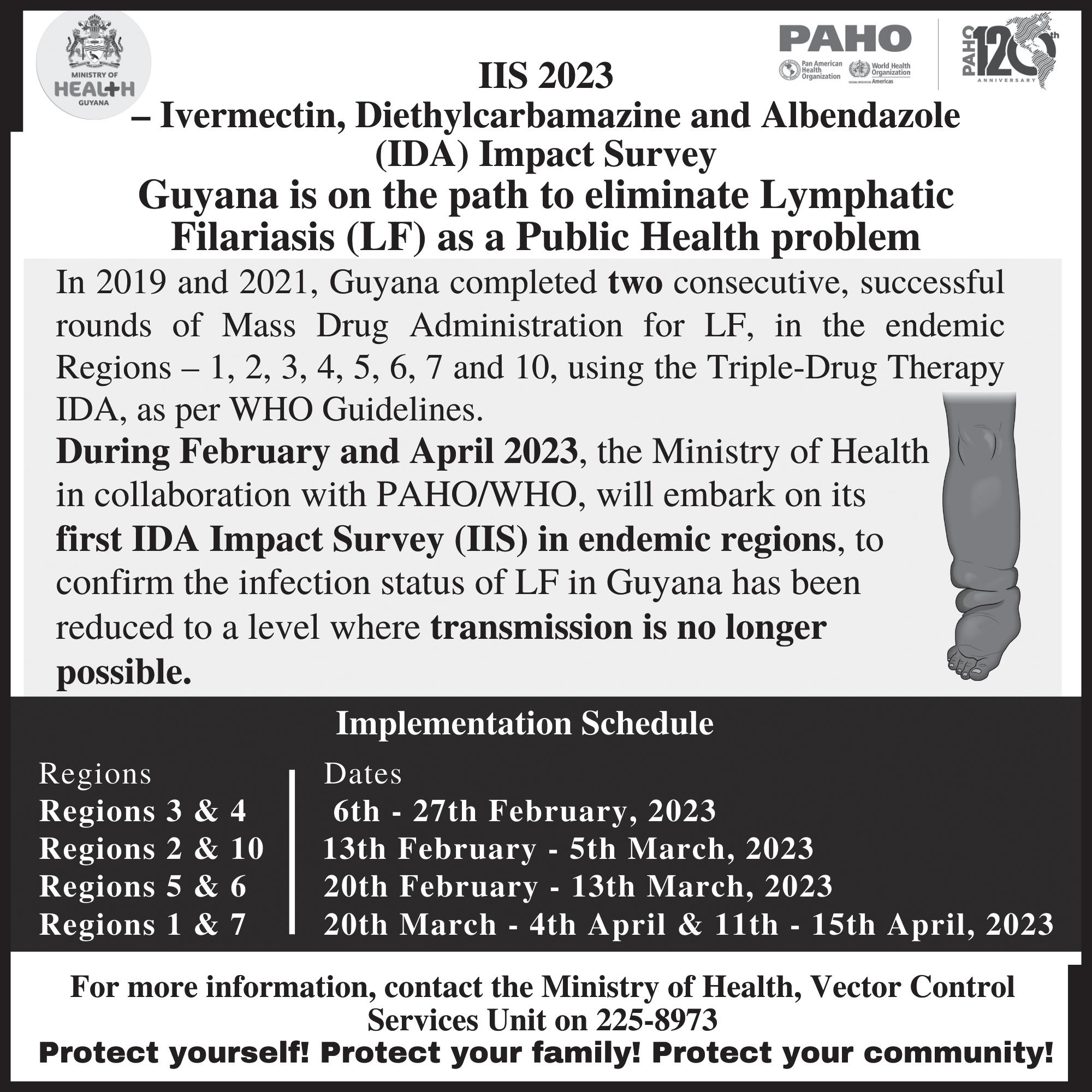
Still, it is worth mentioning that, regardless of the skill needs, if much focus is directed toward one or a few areas of study, labour market saturation becomes an inevitable phenomenon. And then, we could be faced with the dual problem of needing skills across sectors and the saturation of one sector.
So what, then?
A continuous assessment of the skills needed locally is important to guide policymakers. With that assessment, policymakers would be able to better determine what areas of study they could support. Equally important is providing that information to the public so that people pursuing tertiary education can make informed decisions about their course of study. Because Guyana has been grappling with the migration of its talent (through the ‘brain drain phenomenon’) for years, key interventions and considerations are needed to help develop, retain, and attract the much-needed skills.
For the record, this isn’t to say that people should only choose to study those fields or disciplines where the greatest need for skills exists. Of course, people should be able to study what piques their interest and seek income-generating opportunities that align with their interests, skills and/or talents. If we’re talking about labour shortages and saturation, however, it is worth considering the reality we are confronted by.
Already, Guyana’s President, Dr. Mohamed Irfaan Ali acknowledges that labour shortages impact sectors all across the country. Similar acknowledgment has come from the private sector. Both the government and private sector believe that the solution to the issue- or at least part of the solution- lies in training more people in the areas where there is a dearth of skills. Training is a longer-term solution simply because training takes time. In the interim, efforts are being made to comb through the country and encourage those willing and competent, to work. Efforts are also being made to encourage remigration. It was reported recently that private sector players believe more women can be integrated into the formal workforce, too.
Altogether, the conversation on Guyana’s labour needs is happening. I think more people are becoming aware of the needs that exist and that should inform policy, training, and employment. I believe that there should be a greater focus on linking local labour market needs with training and clearlydefined provisions for Guyanese to avoid becoming forced to import skilled labour while the local human resource pool remains largely untapped.
If you would like to discuss this column or any of my previous writings, please feel free to contact me via email: vish14ragobeer@gmail.com

XXVI CHRONICLE PEPPERPOT Sunday, February 12, 2023
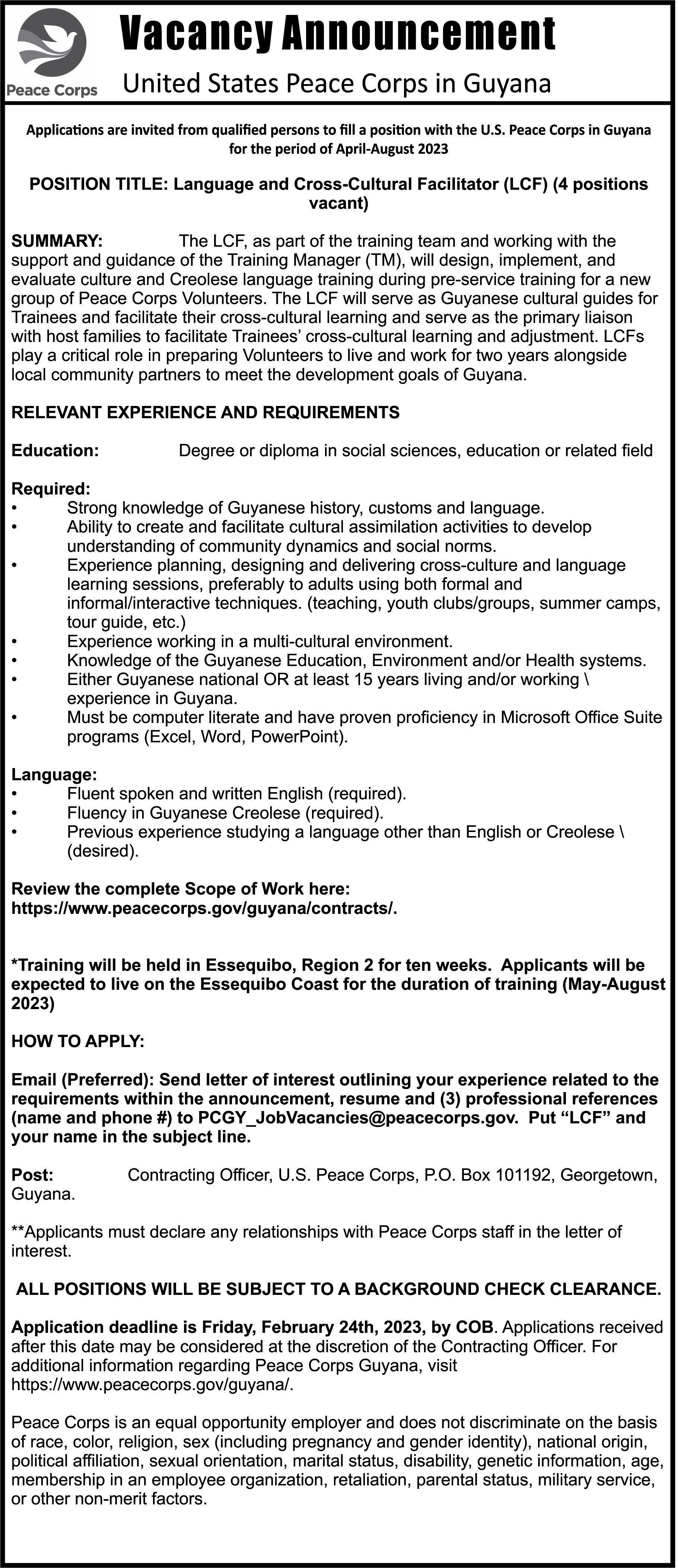
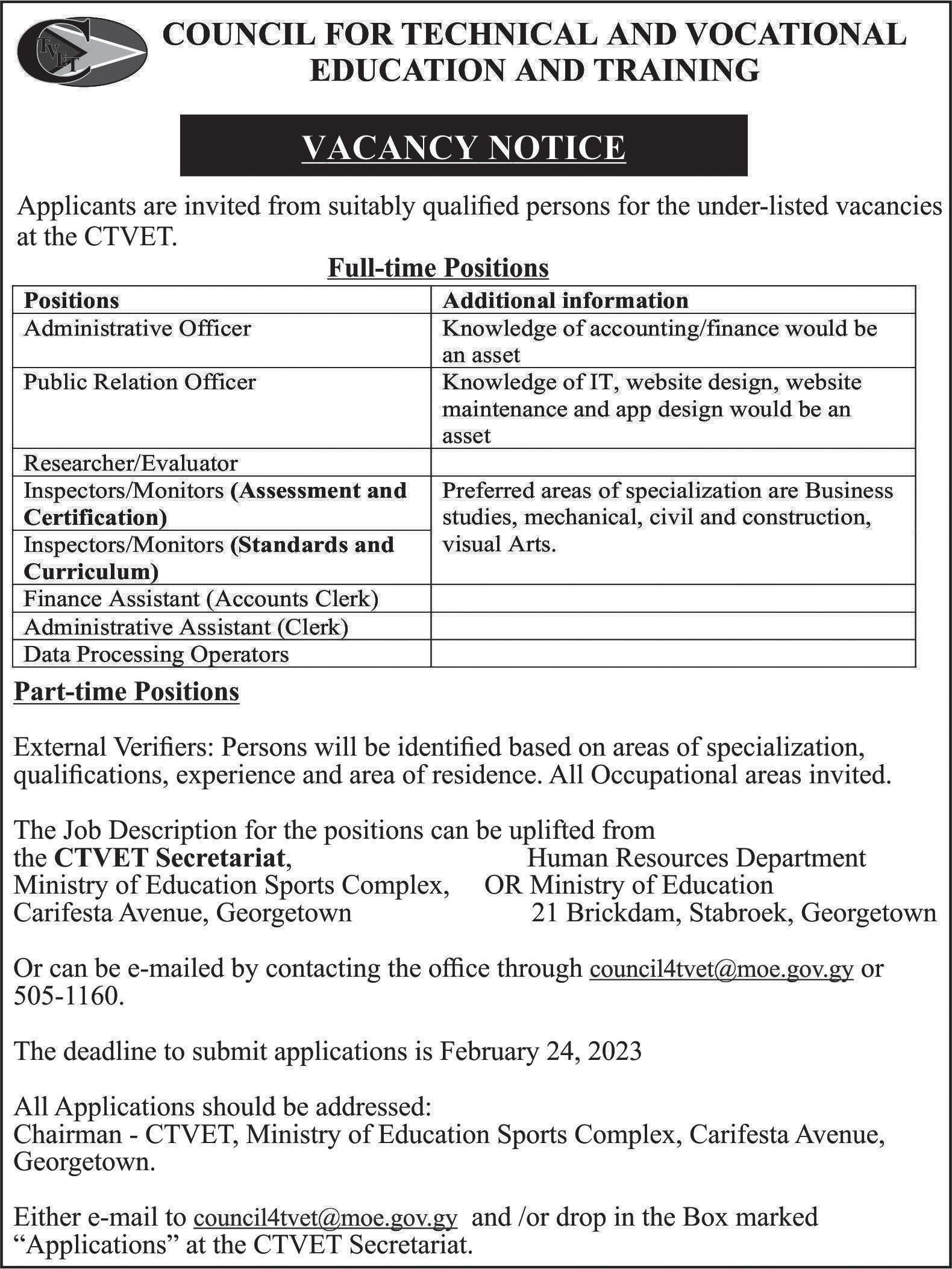

XXVII CHRONICLE PEPPERPOT ― Sunday, February 12, 2023
EPA AND NOISE ...
Court’s prosecution process of offenders. Police Officers were trained in the areas of EPA law, the nature of evidence, and footage for noise nuisance, including the use of the decibel noise meter. The Agency has not only equipped 386 Officers of the Force in Regions 2,3,4,5,6,7,9, and 10 with the knowledge and tools to manage and respond effectively to noise-related complaints, but it has also presented 15 sound level meters to the Force in 2022 for in-the-field use and evidence collection.
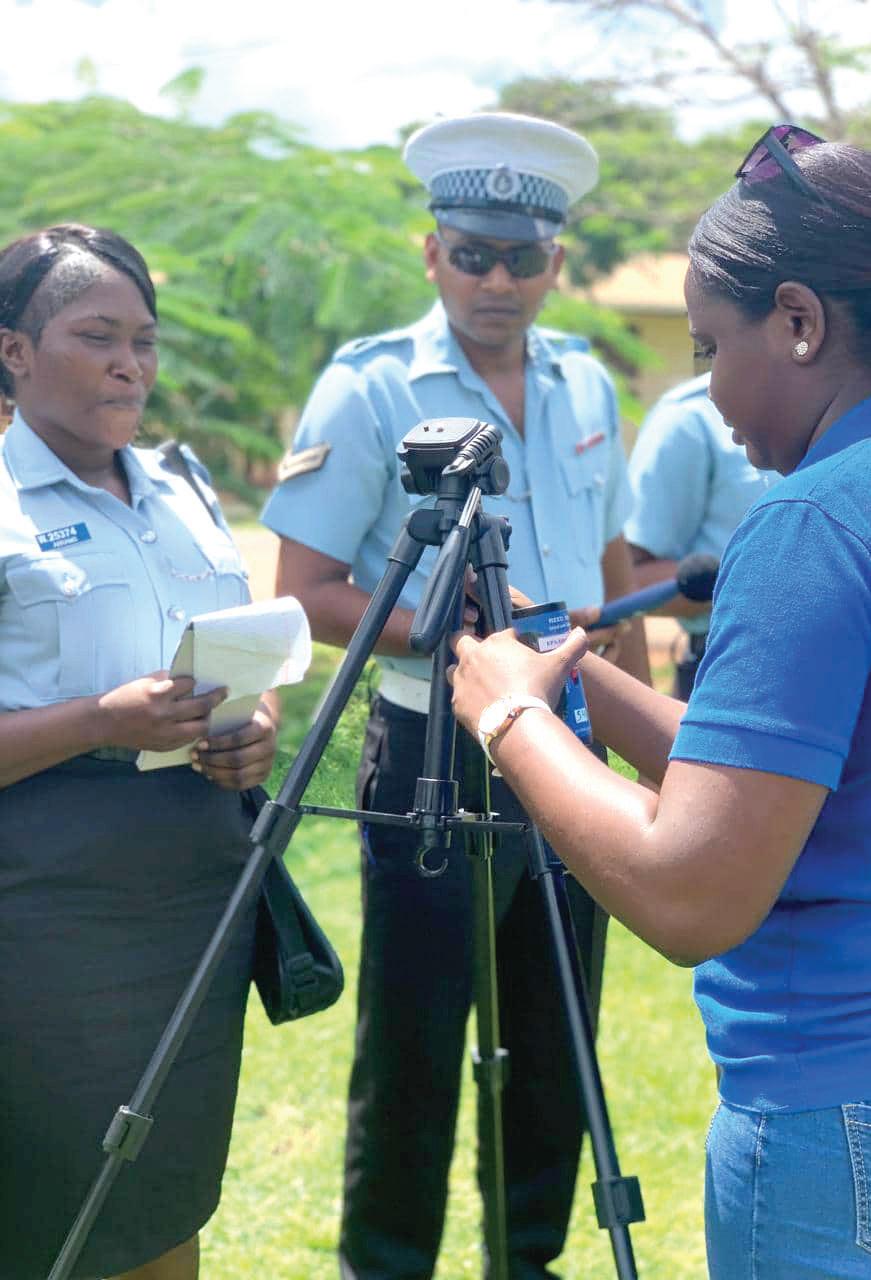
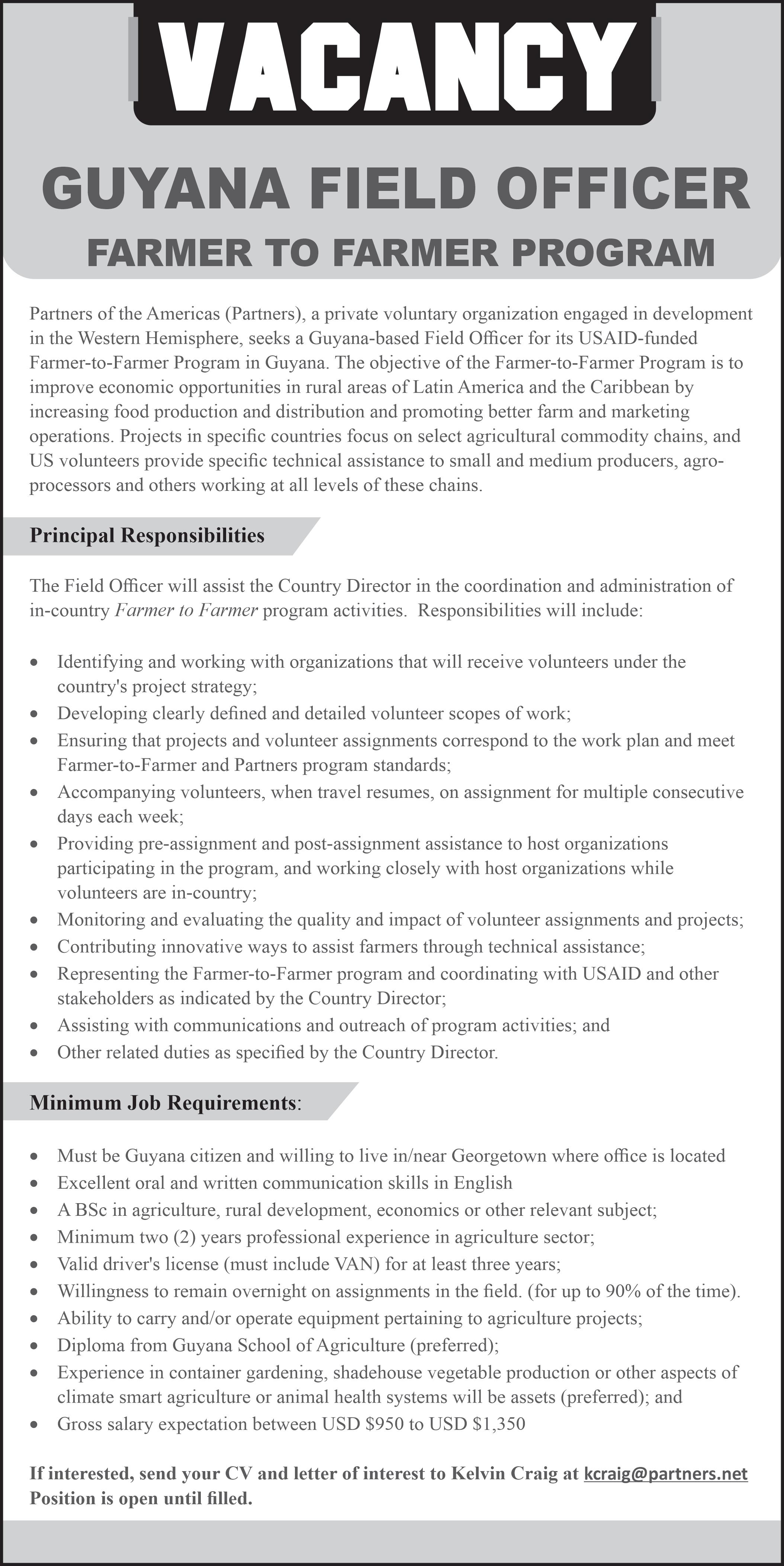
FROM PAGE XXIV
You can share your ideas and questions by sending letters to: “Our Earth, Our Environment”, C/O Communications Department, Environmental Protection Agency, Ganges Street, Sophia, GEORGETOWN, or email us at: eit.epaguyana@gmail.com. Follow us on Facebook and Instagram and subscribe to our YouTube channel.

XXVIII CHRONICLE PEPPERPOT Sunday, February 12, 2023
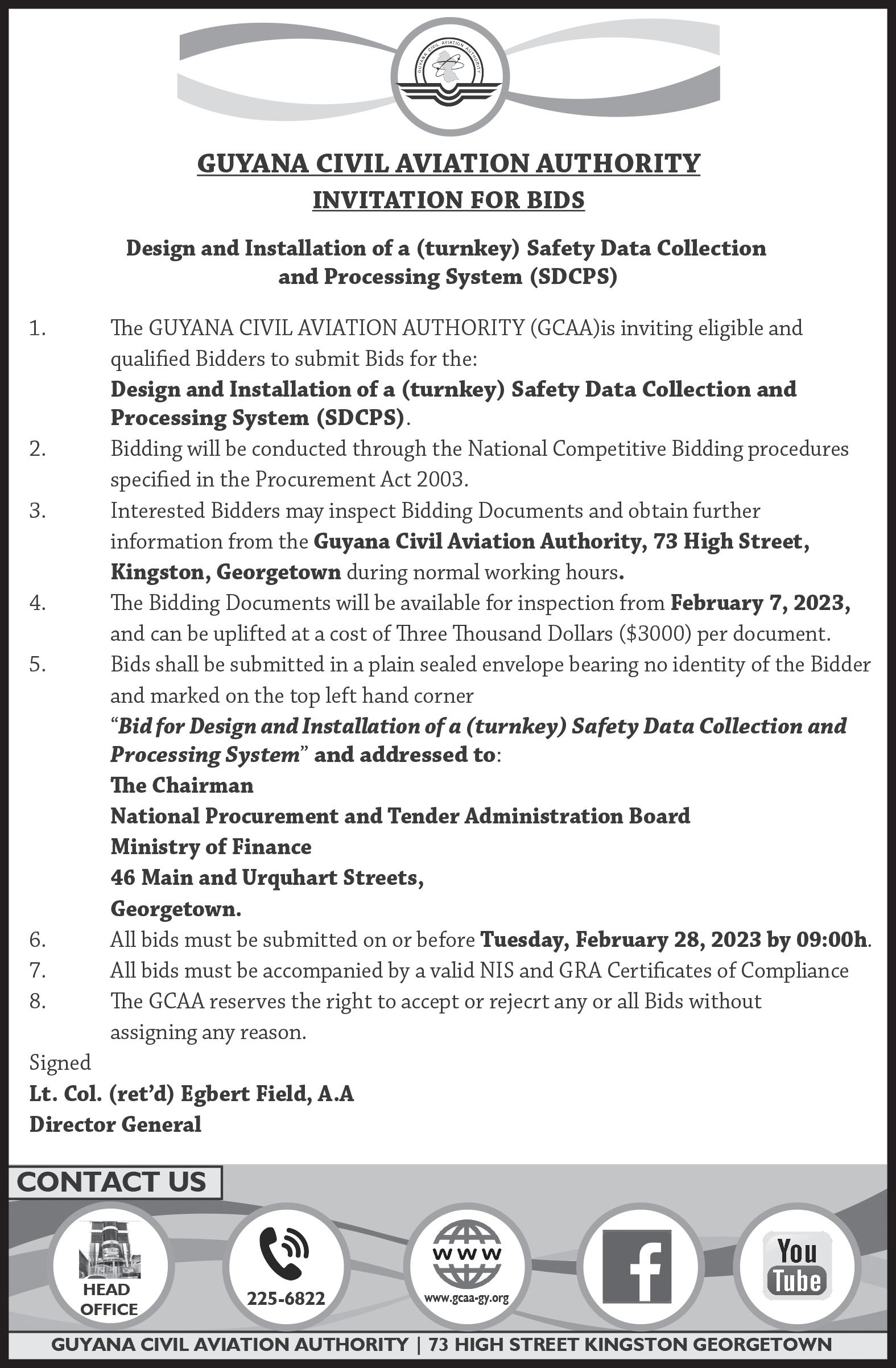
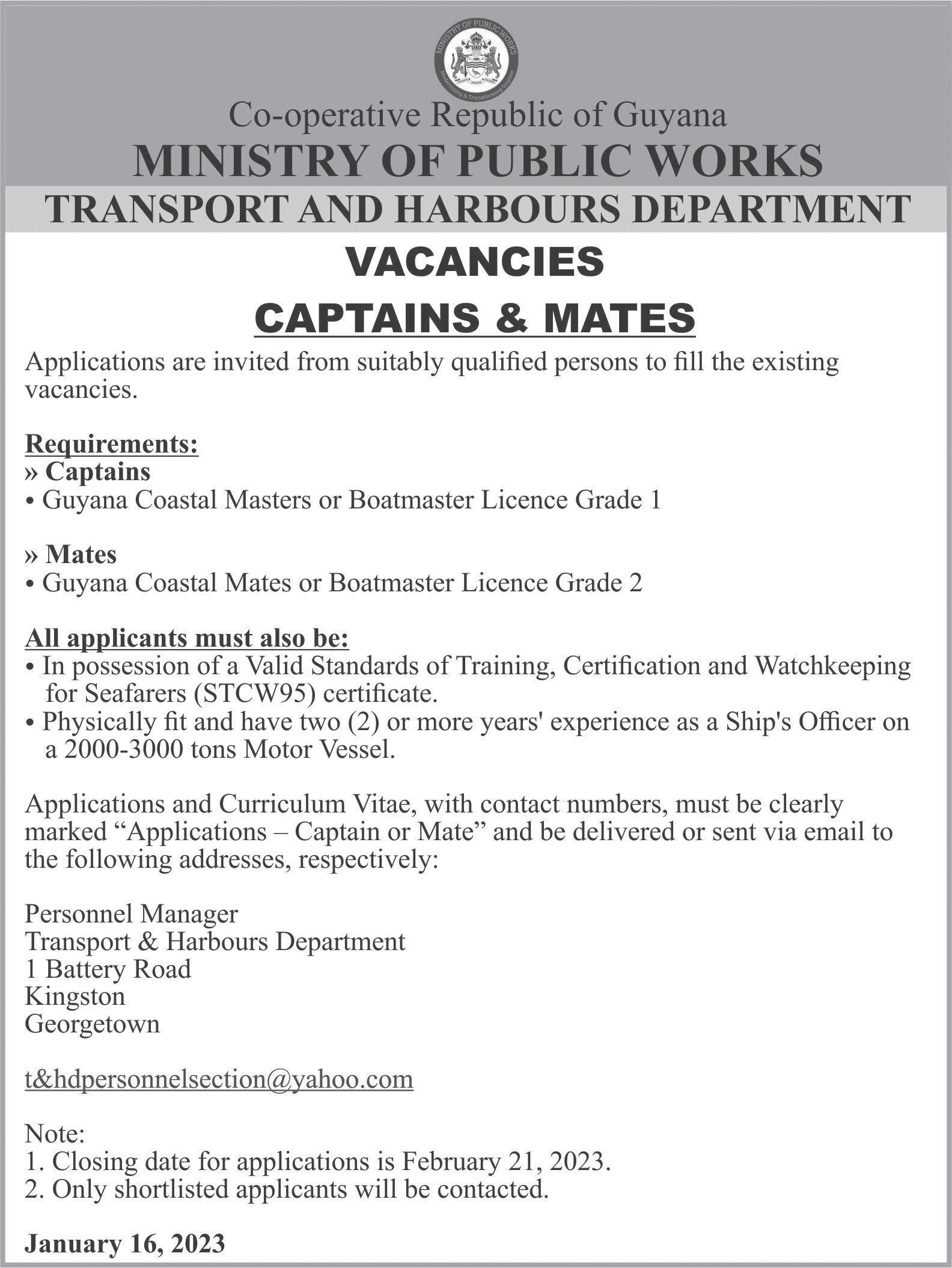


XXIX CHRONICLE PEPPERPOT ― Sunday, February 12, 2023
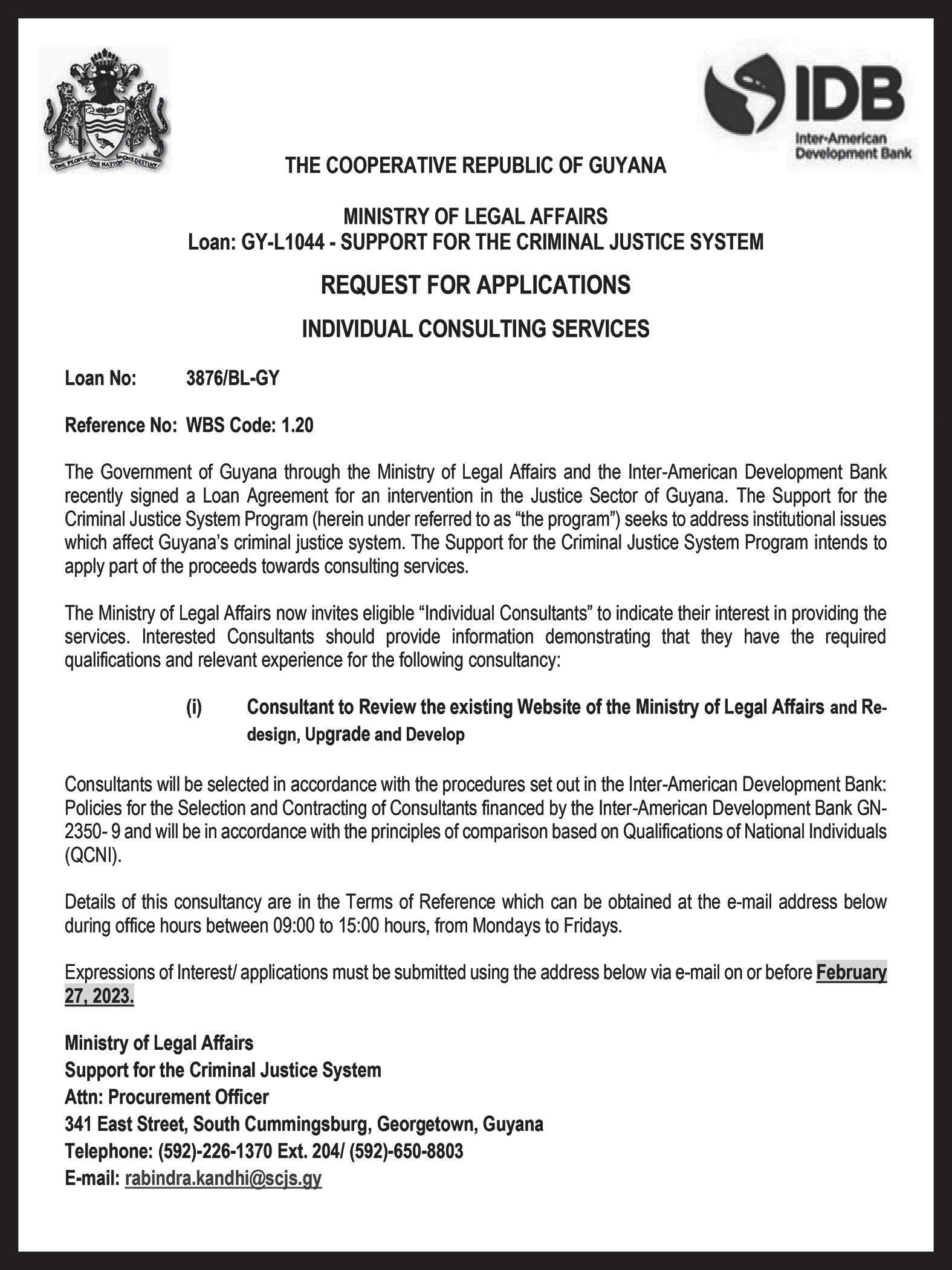

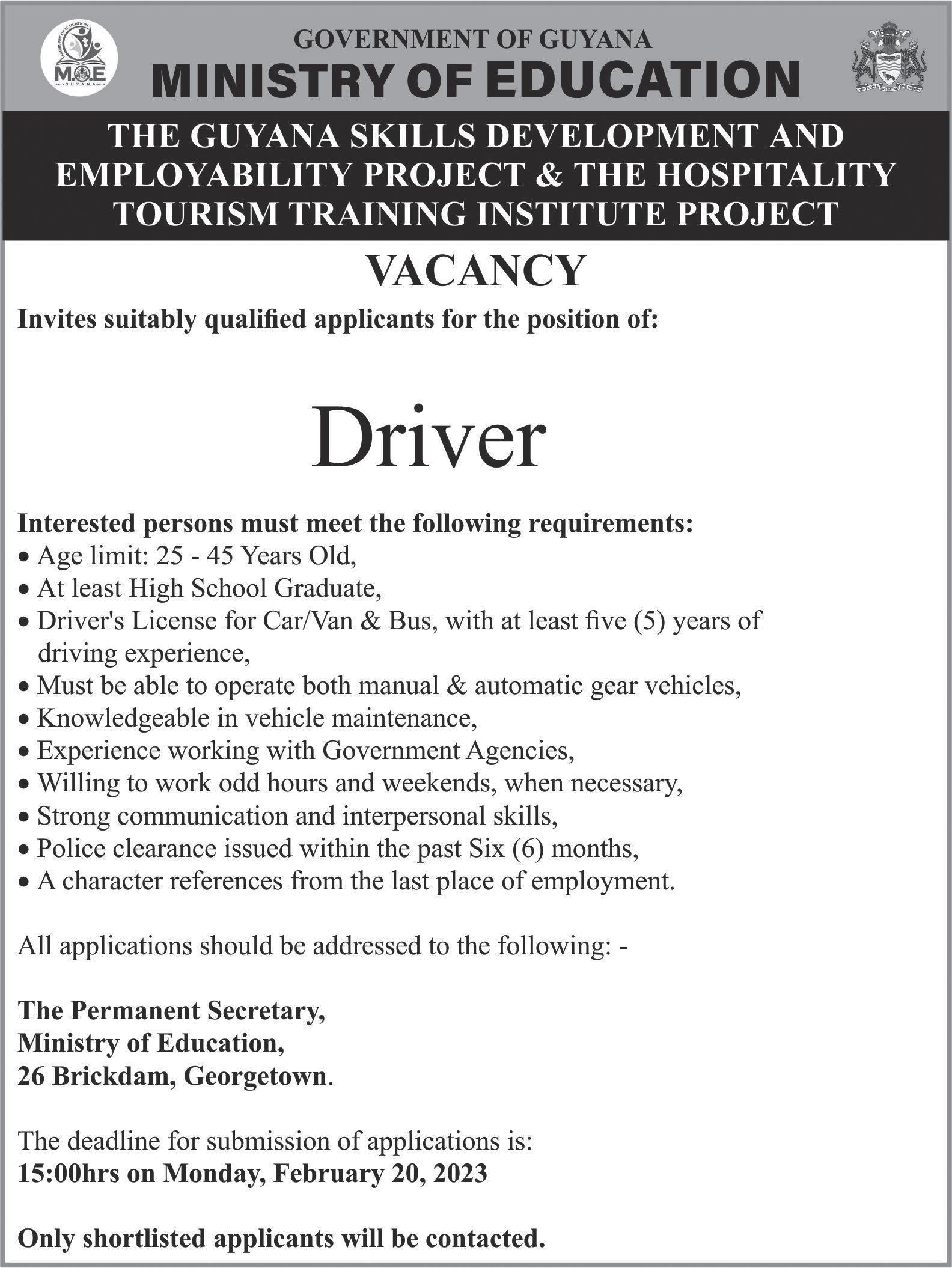

XXX CHRONICLE PEPPERPOT Sunday, February 12, 2023
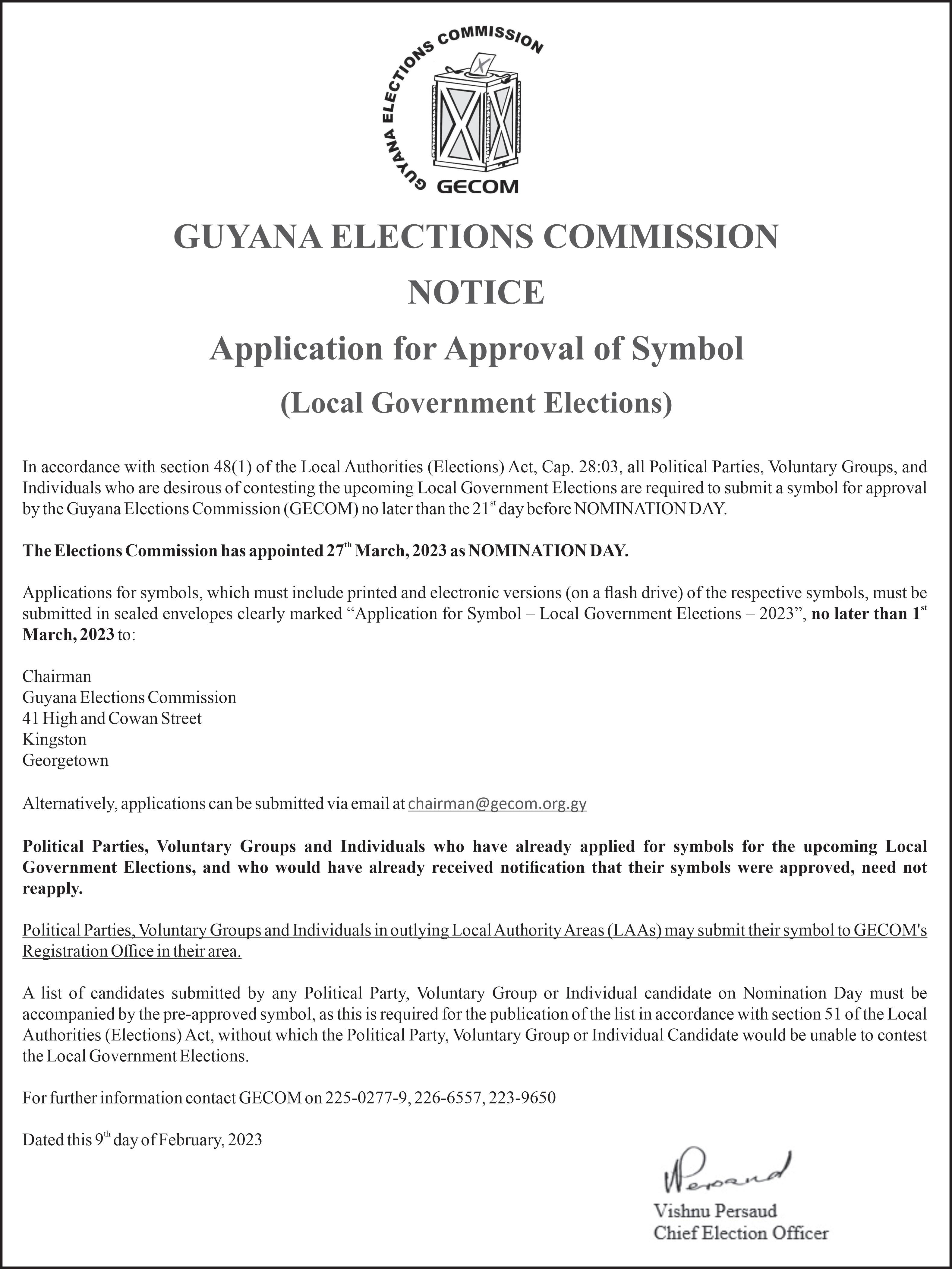
XXXI CHRONICLE PEPPERPOT ― Sunday, February 12, 2023

XXXII CHRONICLE PEPPERPOT Sunday, February 12, 2023
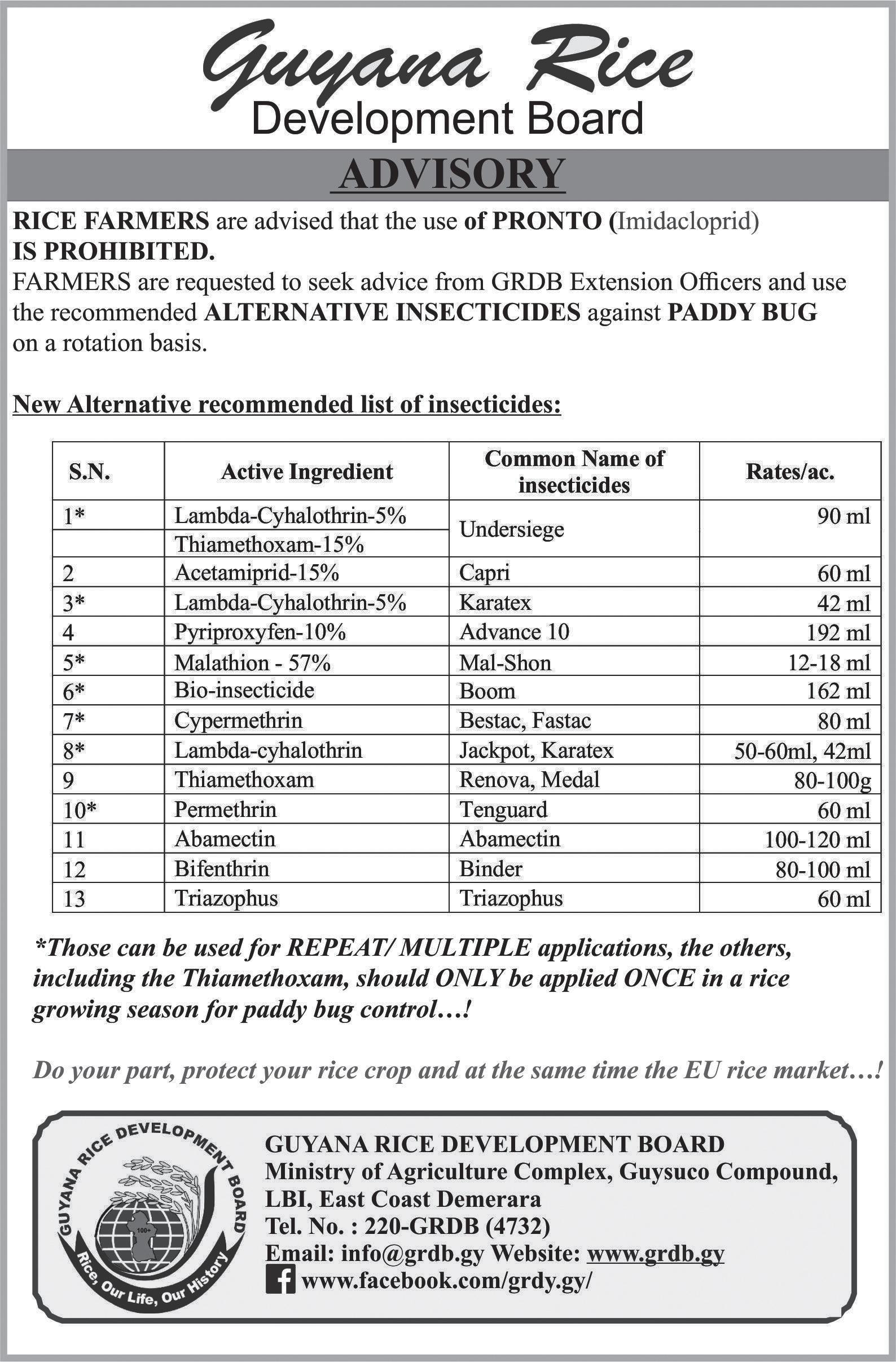



XXXIII CHRONICLE PEPPERPOT ― Sunday, February 12, 2023
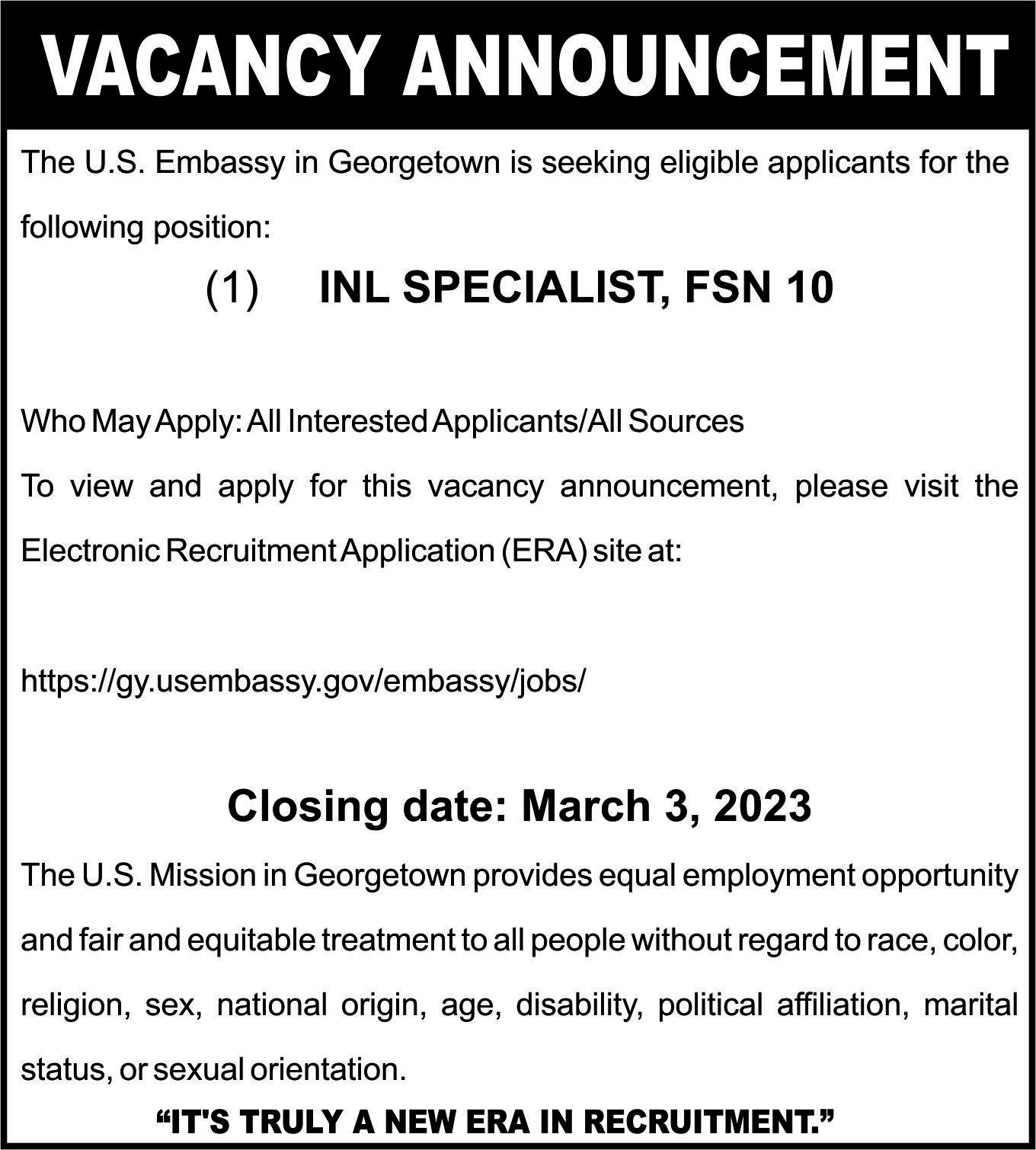
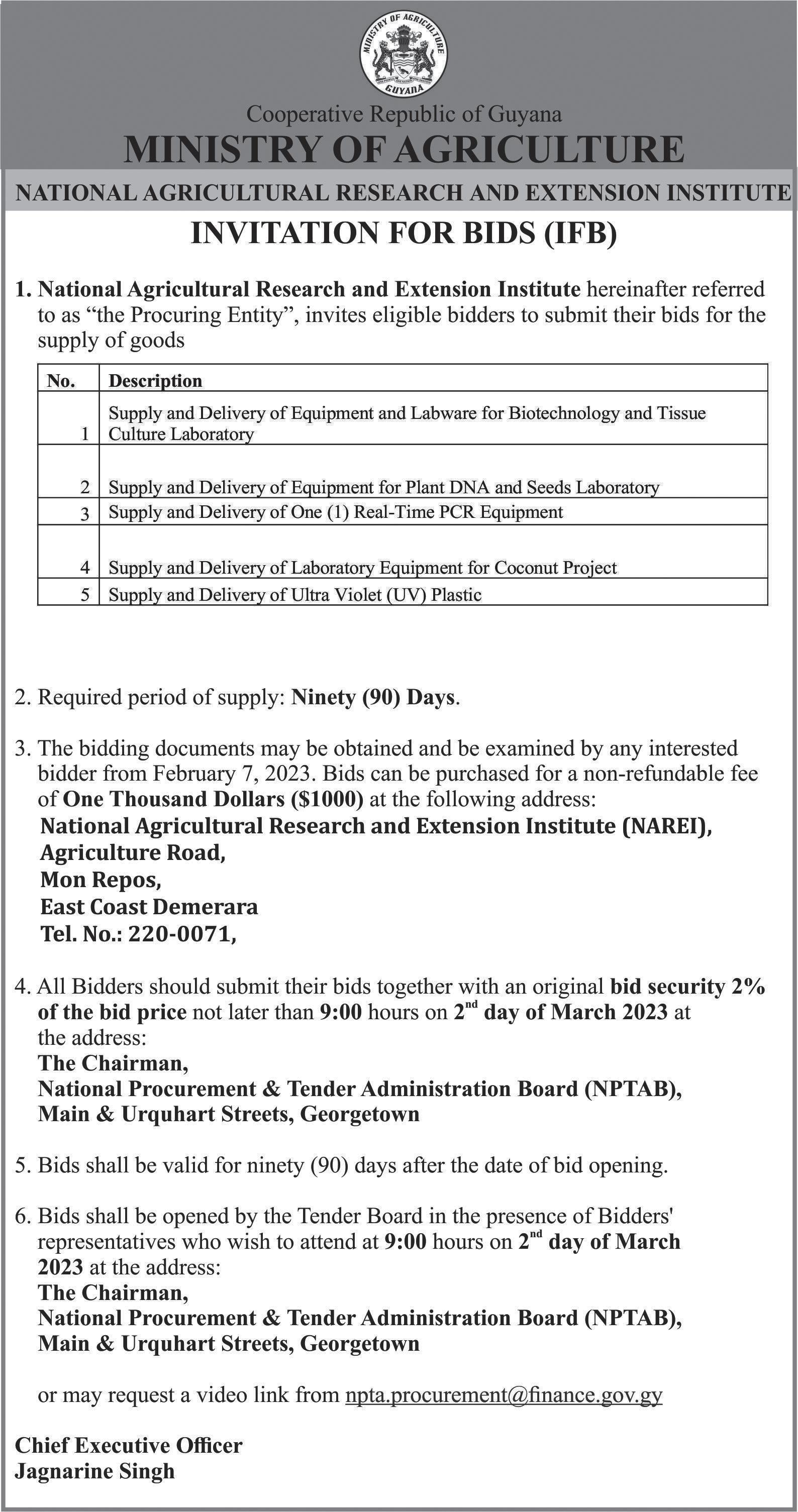


XXXIV CHRONICLE PEPPERPOT Sunday, February 12, 2023
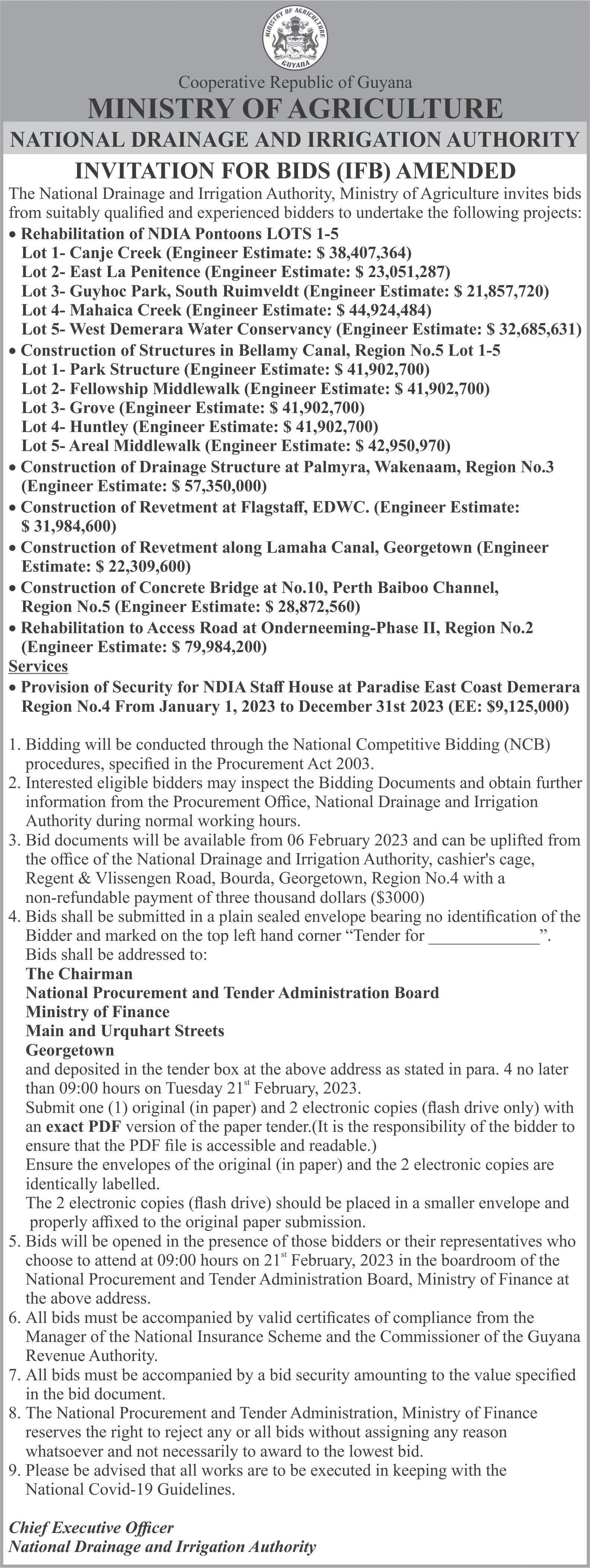

XXXV CHRONICLE PEPPERPOT ― Sunday, February 12, 2023


XXXVI CHRONICLE PEPPERPOT Sunday, February 12, 2023
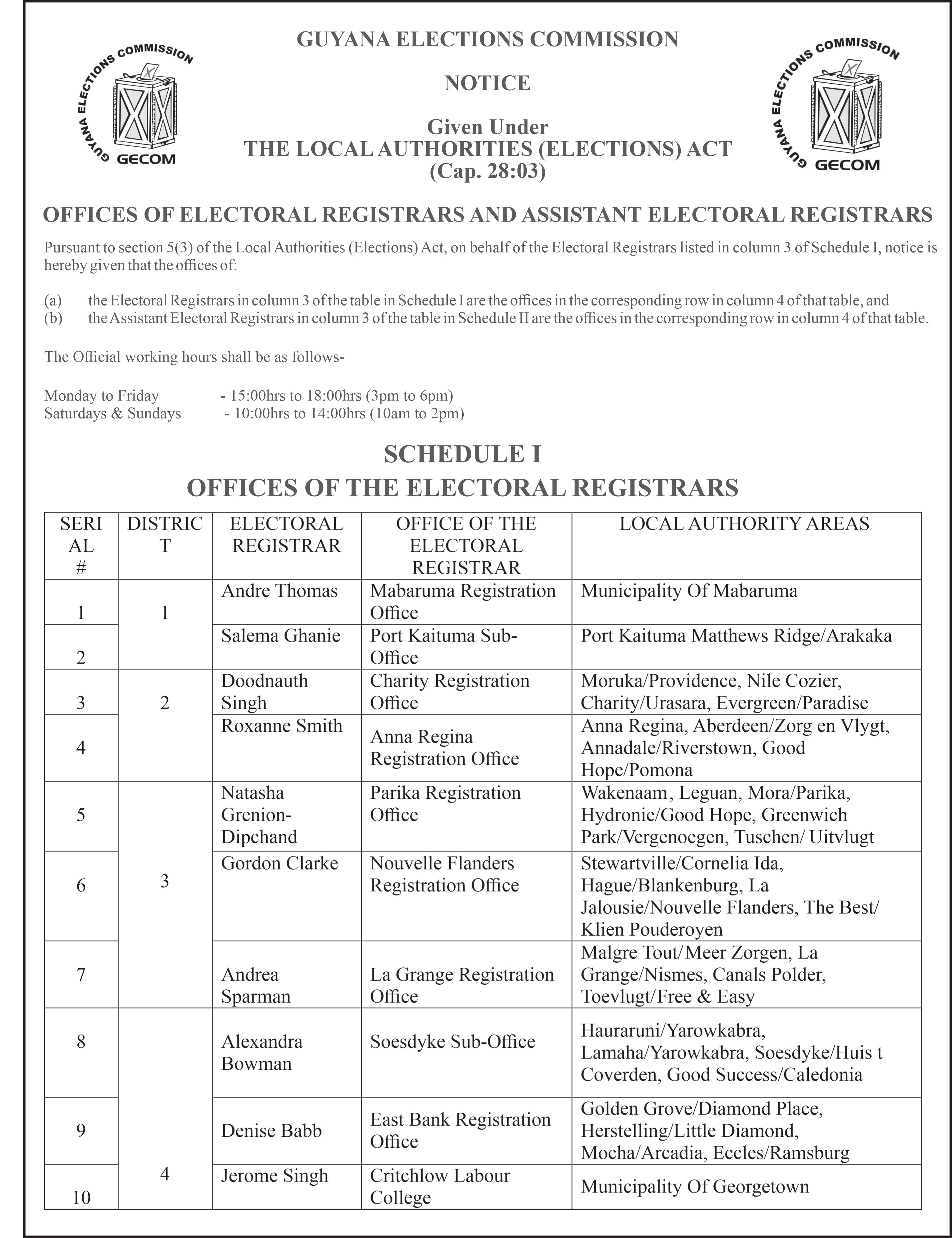
XXXVII CHRONICLE PEPPERPOT ― Sunday, February 12, 2023
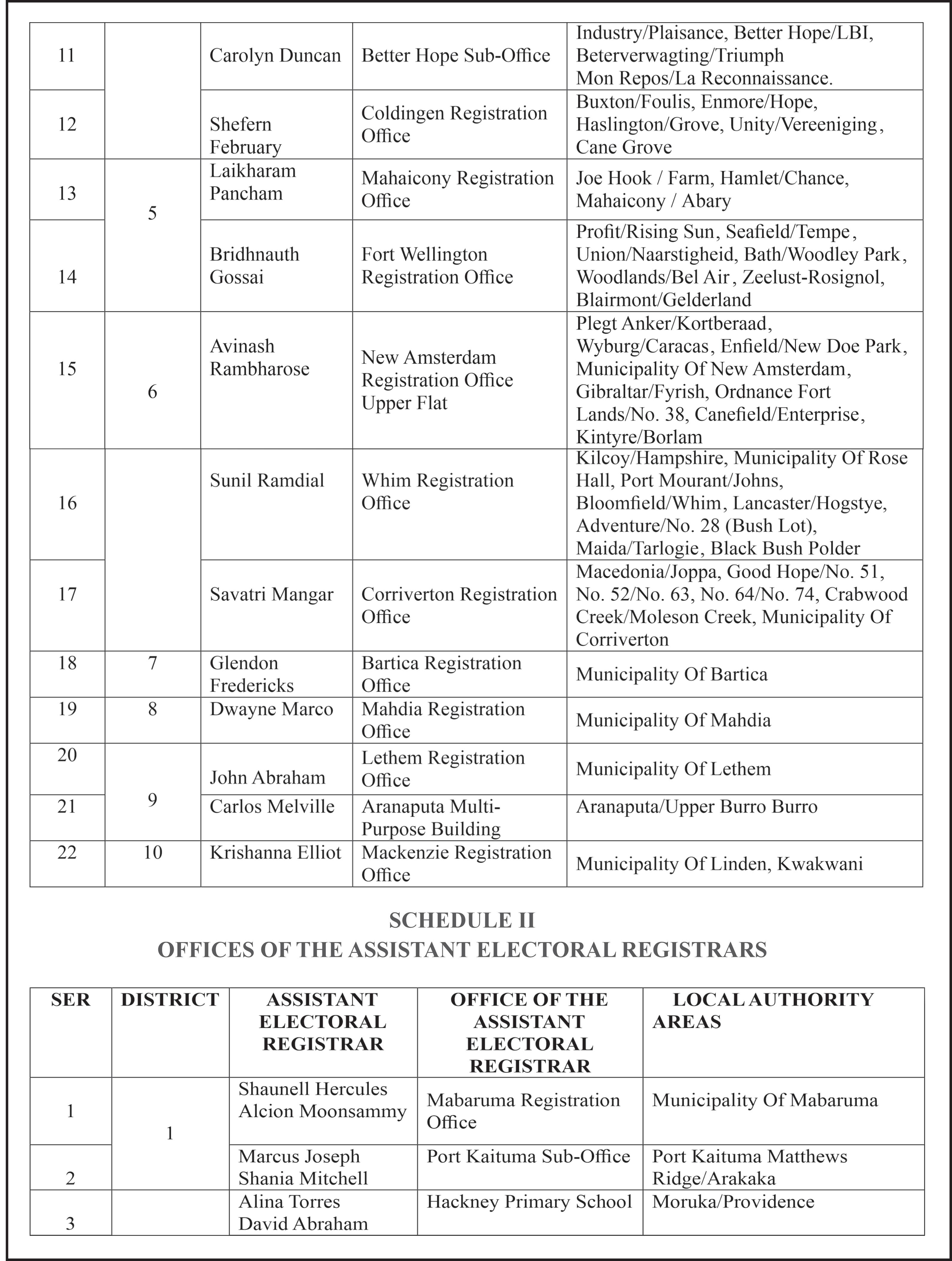
XXXVIII CHRONICLE PEPPERPOT Sunday, February 12, 2023
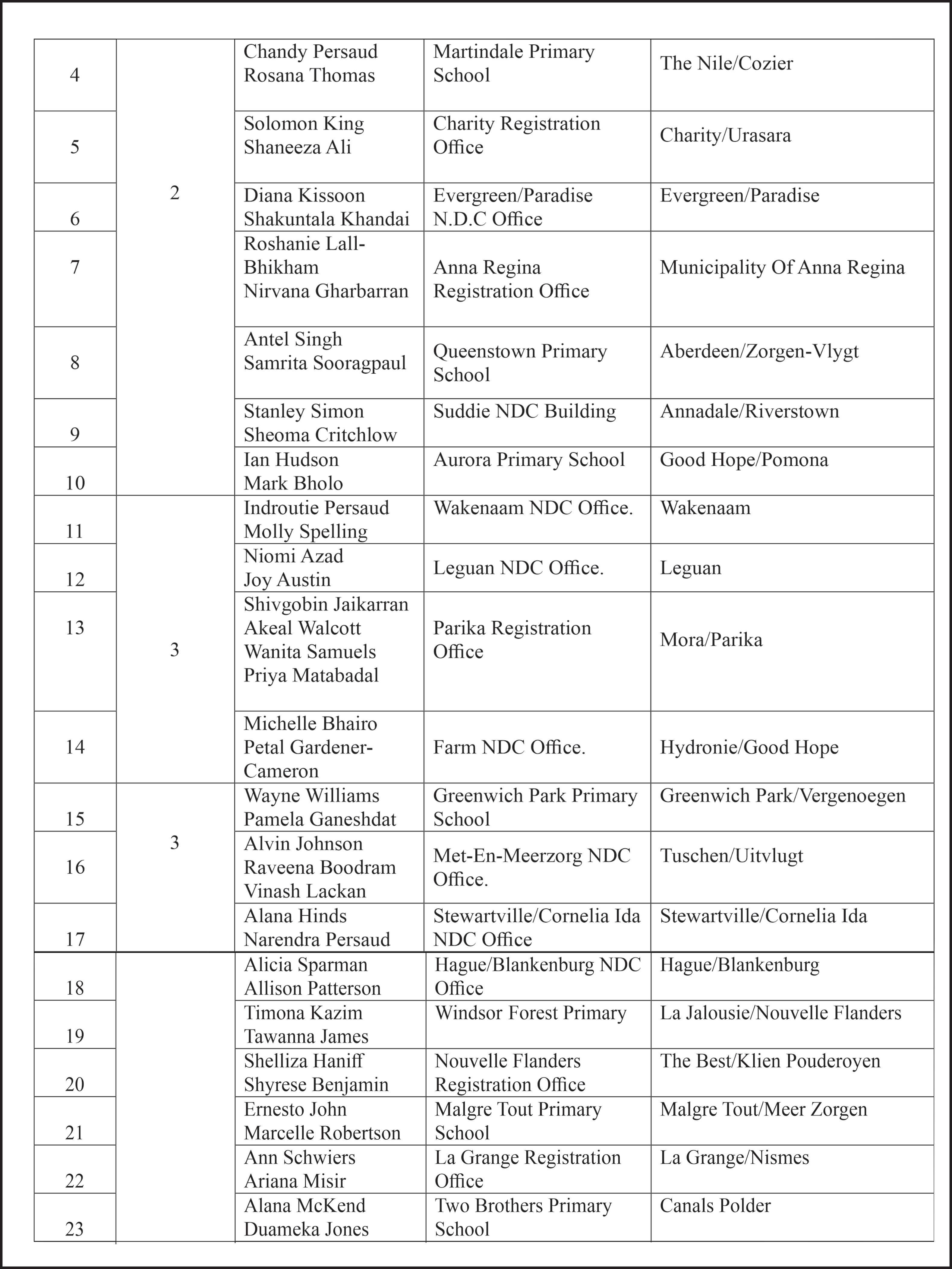
XXXIX CHRONICLE PEPPERPOT ― Sunday, February 12, 2023
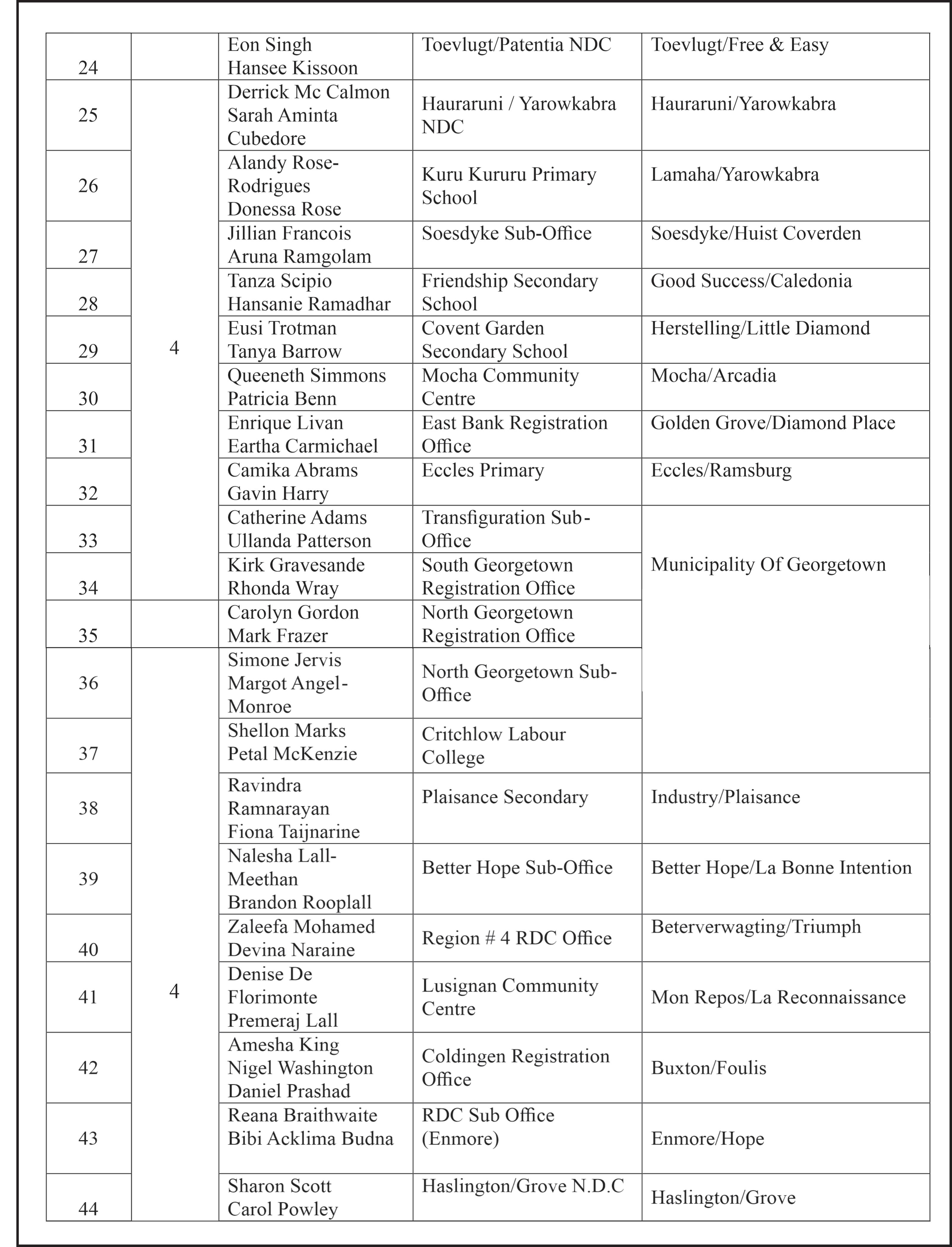
XL CHRONICLE PEPPERPOT Sunday, February 12, 2023
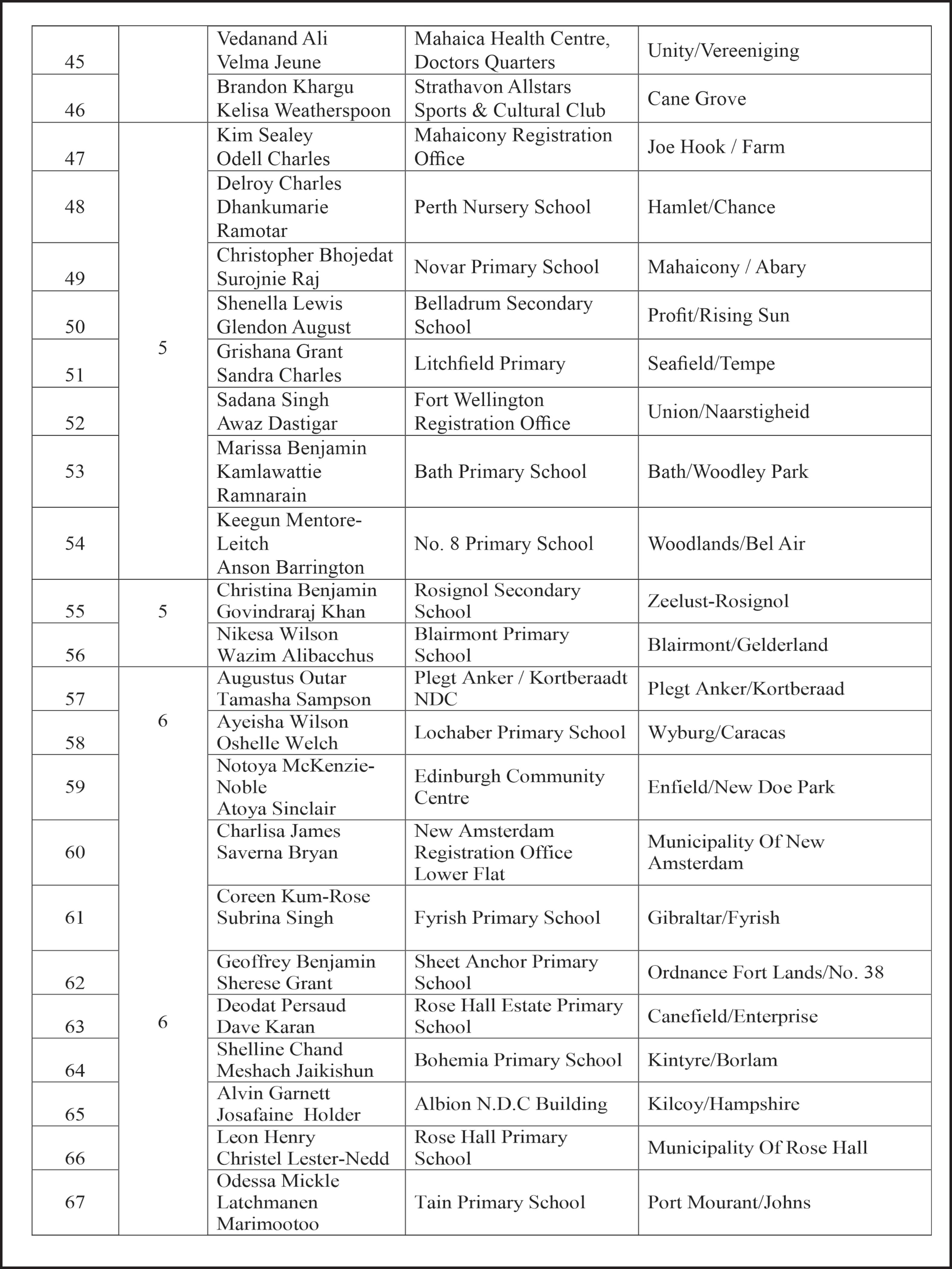
XLI CHRONICLE PEPPERPOT ― Sunday, February 12, 2023
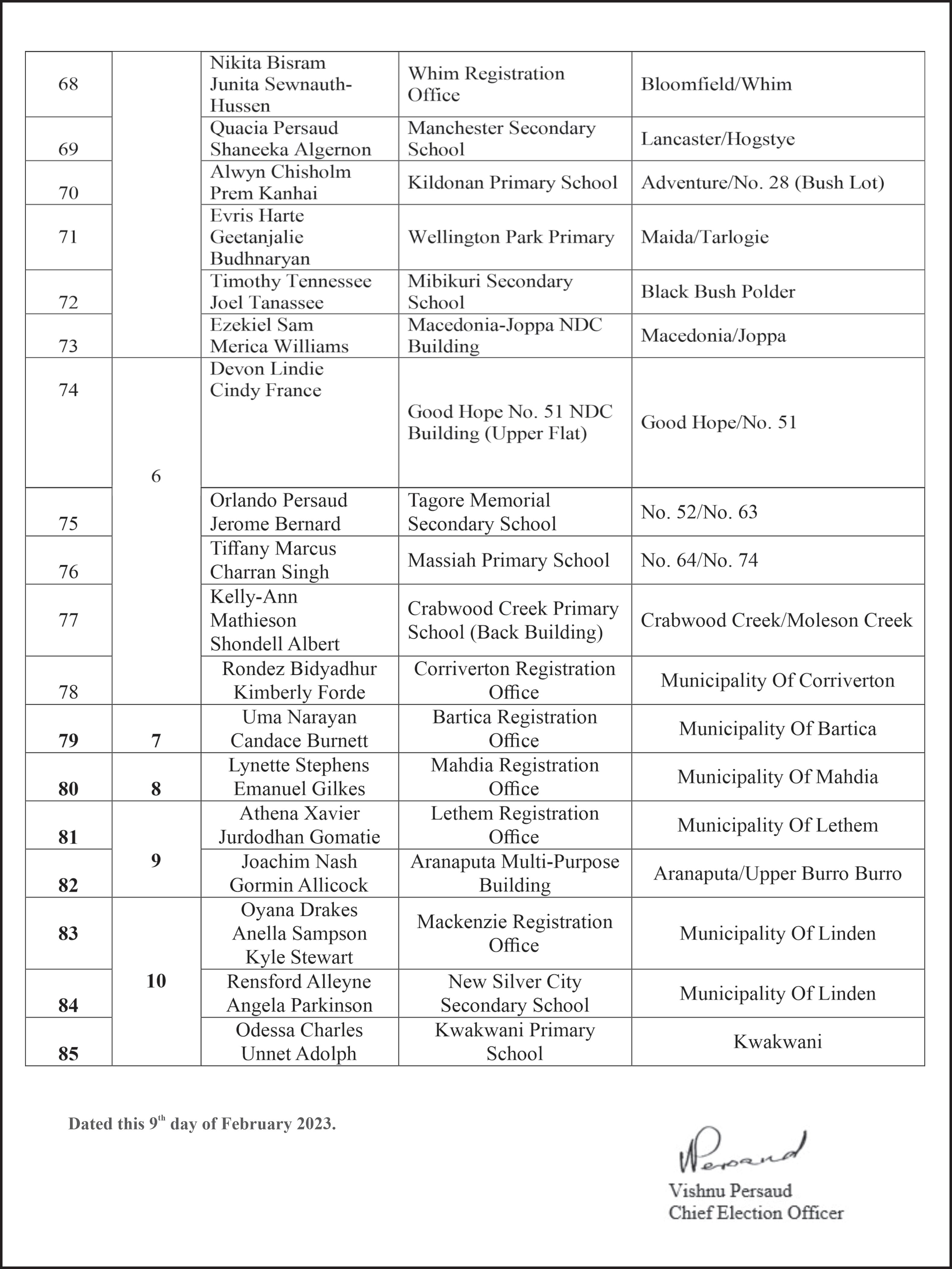
XLII CHRONICLE PEPPERPOT Sunday, February 12, 2023
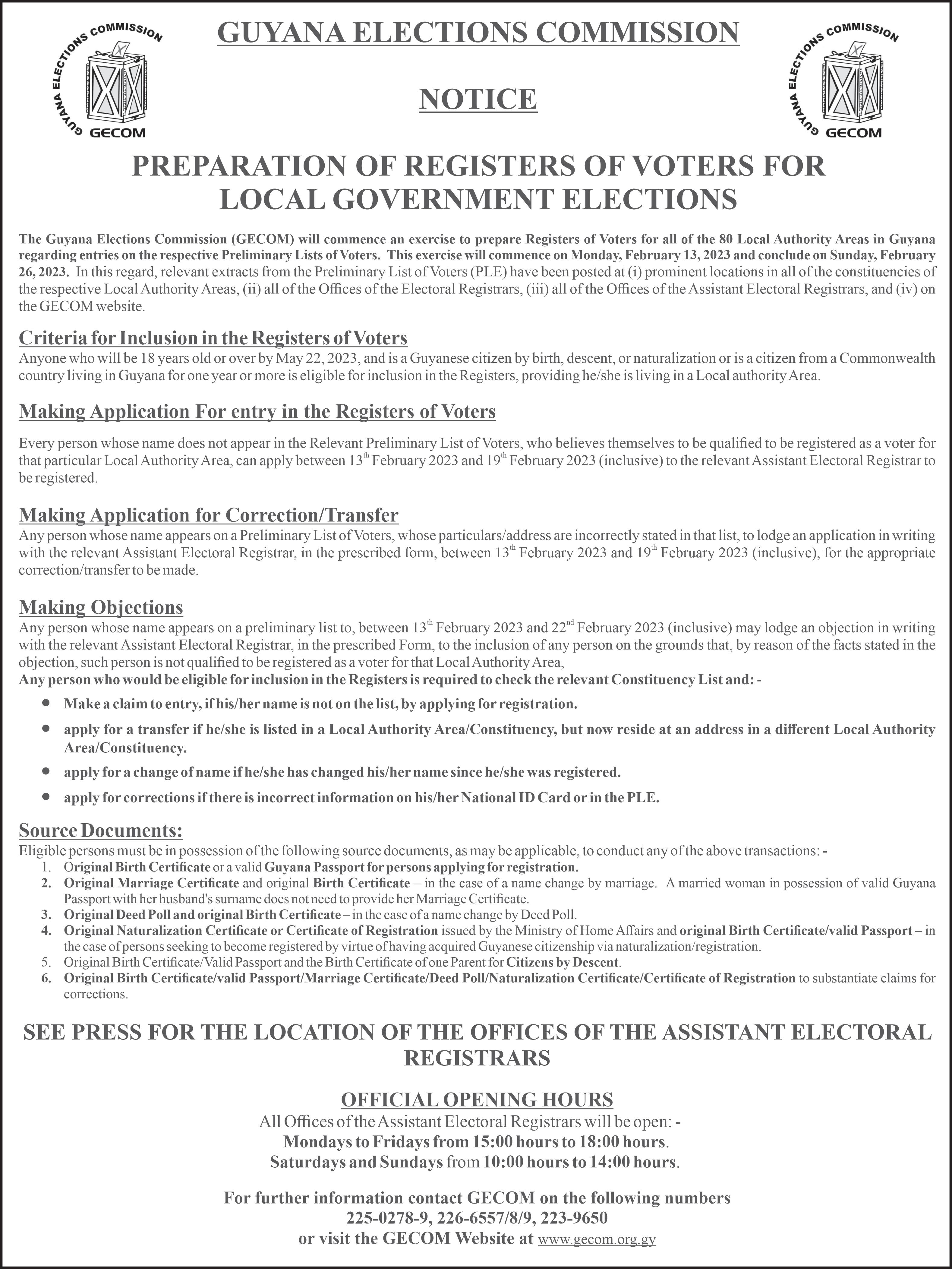
XLIII CHRONICLE PEPPERPOT ― Sunday, February 12, 2023

XLIV CHRONICLE PEPPERPOT Sunday, February 12, 2023
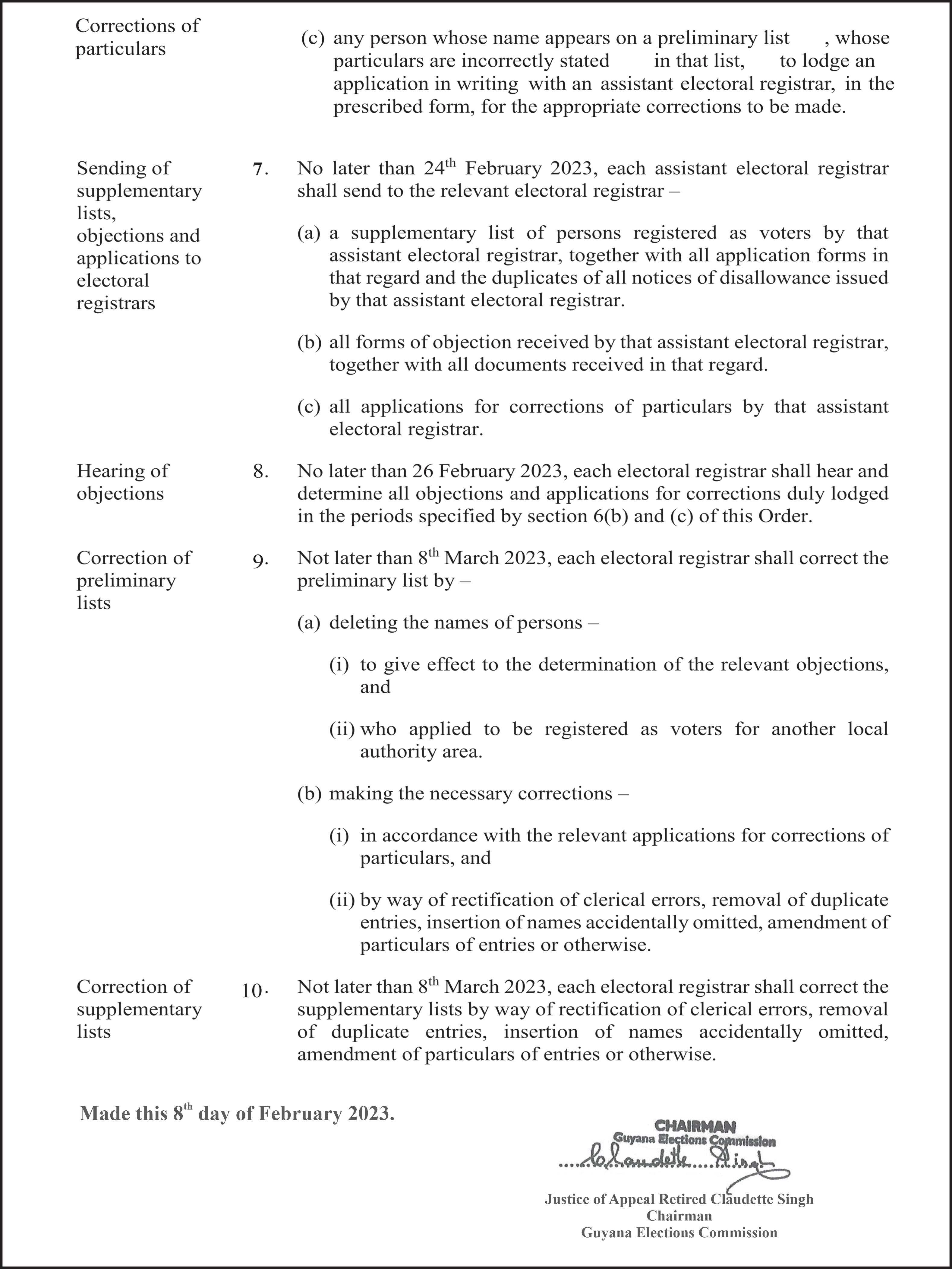
XLV CHRONICLE PEPPERPOT ― Sunday, February 12, 2023
THOUGHT FOR TODAY
One would be in less danger
From the wiles of a stranger
If one’s own kin and kit
Were more fun to be with.
OGDEN NASH (1902-1971) Family Court
STUDY SUCCESS
Dear Student, Welcome dear friend. As you prepare for examinations and the real world, work more assiduously on your speech as
February 12, 2023
a means of communication with others. Gracious speech is never out of place, just as a well-kept appearance. Inevitably, by your speech, you add to, or detract from, the impression that you make. You will need to get along with people more than before. As you become a better speaker, you will become a more alert audience. Be wise.
Love you.
IMPROVING READING
Finding out what a passage is saying
THE PASSAGE: The desire to succeed is of paramount importance. There are many jobs in which there is little pressure to retain ideas in a formal way. However, there are few well-paid jobs in which the keeping of written records and the communication of information play a part. Self-interest is therefore a vital factor. However, consider the ways in which memory works when people are engaged in activities about which they feel enthusiastic and for which pay is not a primary factor. Hobbies, pursuits and passions promote levels of recall and standards of articulate response that do not require any special training. For example, bridge-players, motor-racing followers, hockey-umpires, wine-connoisseurs, religious devotees are usually, by nature, enthusiasts. Their minds are able to assimilate information and they are able to share it. The skills are intuitive. There would appear to be some sense in the saying – ‘Make your job your hobby.’ It will help you succeed.
Something to Do
The following questions will help you consider more closely the contents of the given passage. Read it over twice before attempting the questions which should lead to soul-searching.
1. Put the first sentence in your own words before you progress to the second question.
2. Is the second sentence saying that retaining ideas is not important in many jobs? Exactly what do you understand here?
3. Do you agree that self-interest is also a vital factor in your examination
preparation? How?
4. Of how much importance is memory in your study if you are enthusiastic to succeed? What can you do OR what have you been doing to improve memory?
5. Explain: “for which pay is not a primary factor” in sentence five.
6. What is the writer’s claim in sentence six? Do you know what is meant by ‘hobby’? Do you have a hobby or two? Give their names and explain how one of them retains your interest.
7. Do see it possible to mention a hobby that exists in your family circle.
8. Why do you think enthusiasts are eager to share their information freely?
9. Give the meaning of “The skills are intuitive”.

10. In what sense do you agree with the last two sentences?
IMPROVING
READING
Noting specific information
You should get into the habit of reading for specific information, students. As you concentrate on some parts and note down bits of information, you need to ignore other parts. You should read by scanning for what you want to know and relate to the rest as redundant because you know what you are reading for in advance. Look at the simple passage following.
Read and make mental notes. This area of enquiry is far less difficult and not as diffused as the previous passage. You will look for simple things like how tall Peter Ustinov is, how long he was a soldier for, whether he is married, and how many children he has.
My name is Peter Ustinov ... I’m fifty-seven years old. I’m what is known in the American clothing trade as ‘portly’. I am just under six foot tall, although if I hold myself properly I can still just about reach it. I served in the British army for four and a half years as a private, hated it and wouldn’t have missed it for the world. I managed to do quite well in the theatre and the movies, being the holder of two ‘Oscars’. There are only eight actors that have got more than one, so I am very lucky
in that respect. I’ve got four children. I’ve been married three times. Apart from that I really don’t know what to say about myself...
(From Meeting people with Terry L. Fredrickson)
IMPROVING WRITING
An informal letter to study
You do remember that a letter can either be formal or informal, not so? Well today again we deal with an informal letter for you to study and be on better footing.
If you write an informal letter, you must take care to hit the right note, the right mood. If this is missed then there will be a reader or two very much put out by receiving a letter written in ill-judged style that conveys an unfortunate tone. If also, you need to deal with arrangements, please be business-like – clear and crisp to prevent any misunderstanding.
Here is an informal letter. Study it. It provides guidance for your own practice.
Home address and Date
Dear Sylvia,
I hope you’re enjoying yourself, though I’m not writing this merely to wish you happy holidays.
The point is this. You return on 16th March, I think. Well, I’ve just seen in “The Rocket” that the Festival of Theatre is at the new Centre of Culture from 18th to 29th of the month. Booking opens on Monday 13th.
Do you want me to get a ticket for you? I’m hoping to get a seat for Tuesday 21st (“The Taming of the Village Goat”). If you want me to book for you as well, let me know in good time.
The seats will go quickly as this marks a festival long overdue, so I must be at the Box Office when it opens on Monday 10th.
I do, of course, hope that you are all having a splendid time and not worse weather than home here. Please give my love and regards to your parents.
Yours, Cynthia
In this letter you will notice the frequent use of contractions. That is because the letter is informal and contractions are permitted.

XLVI CHRONICLE PEPPERPOT Sunday, February 12, 2023
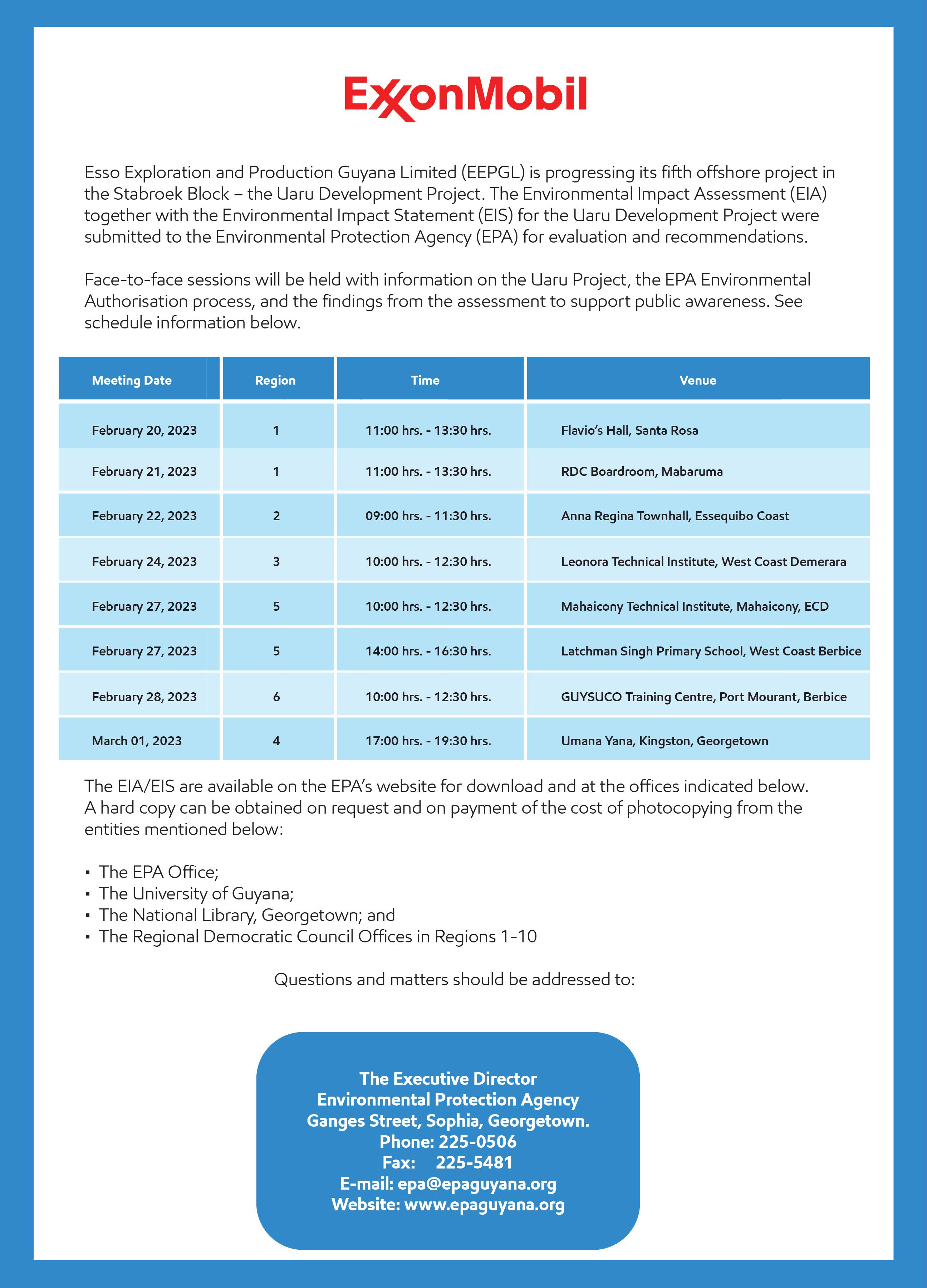

XLVII CHRONICLE PEPPERPOT ― Sunday, February 12, 2023


XLVIII CHRONICLE PEPPERPOT Sunday, February 12, 2023





























































































































